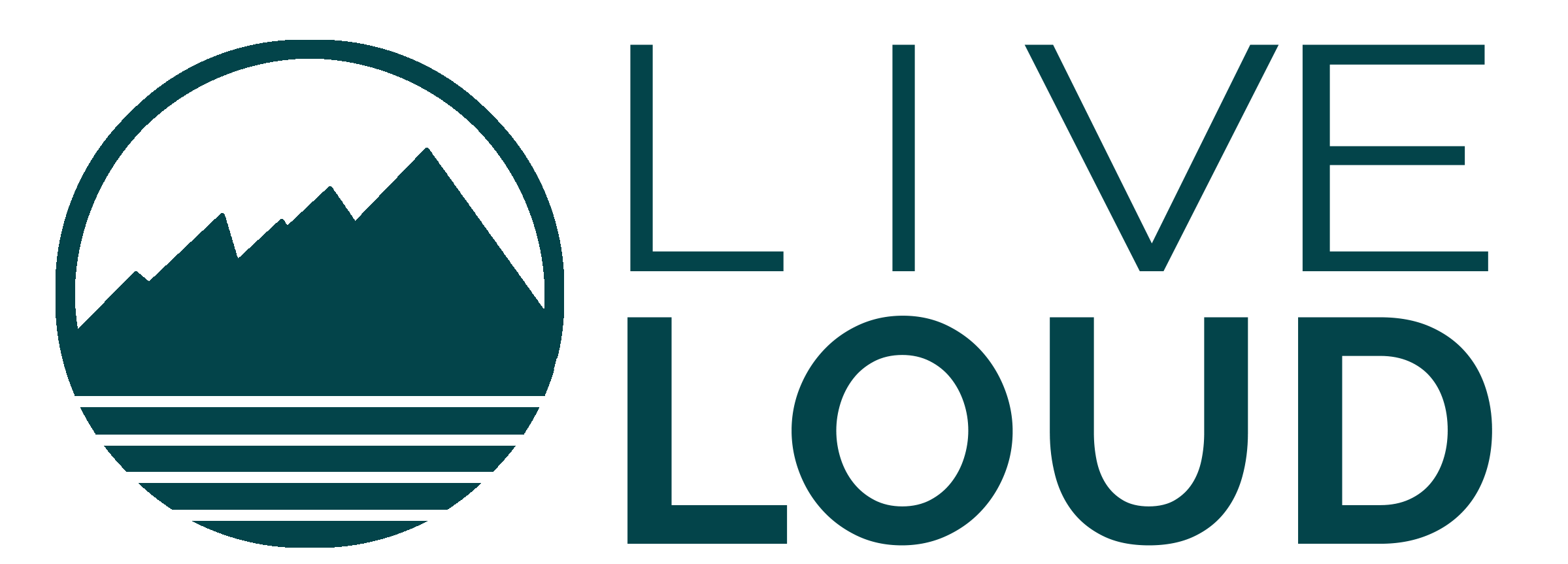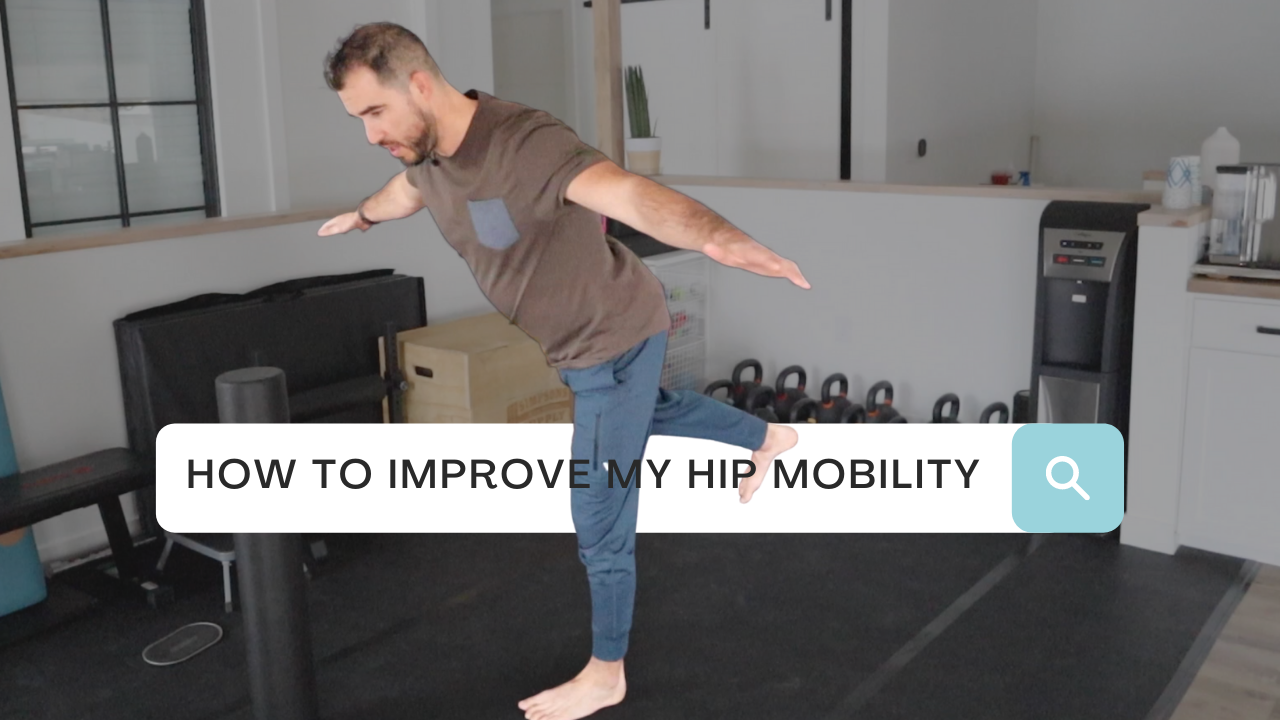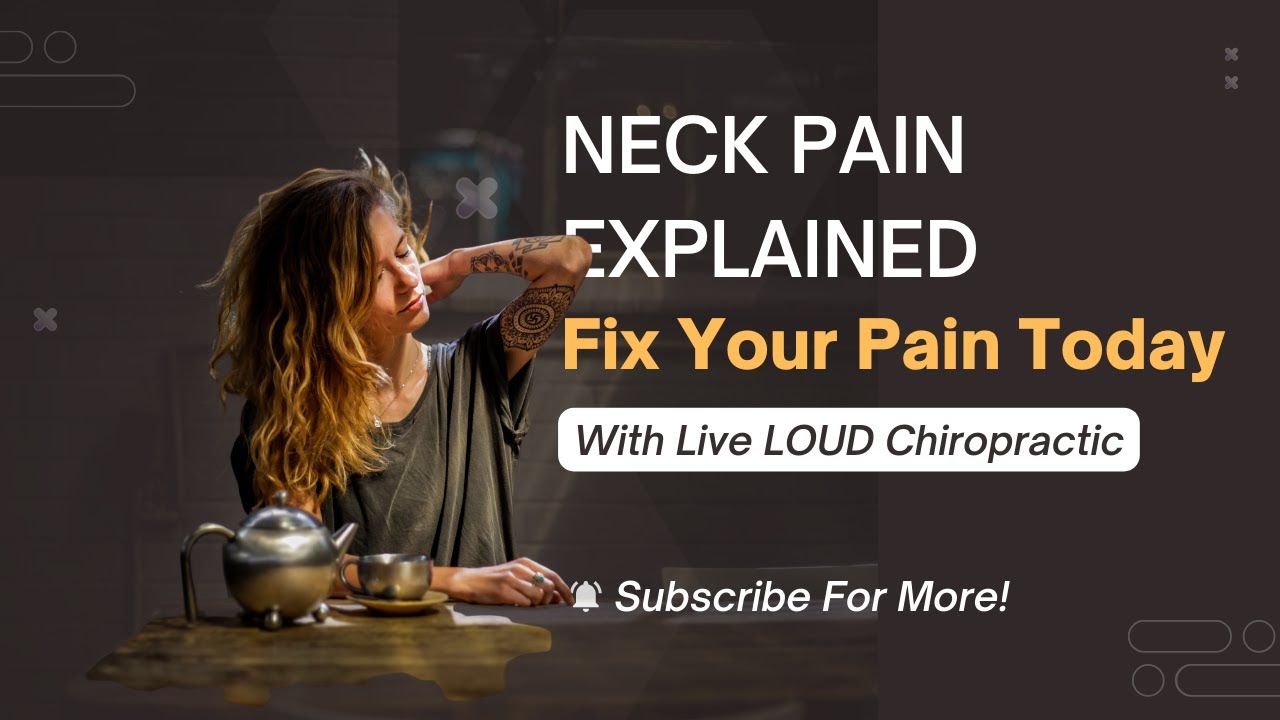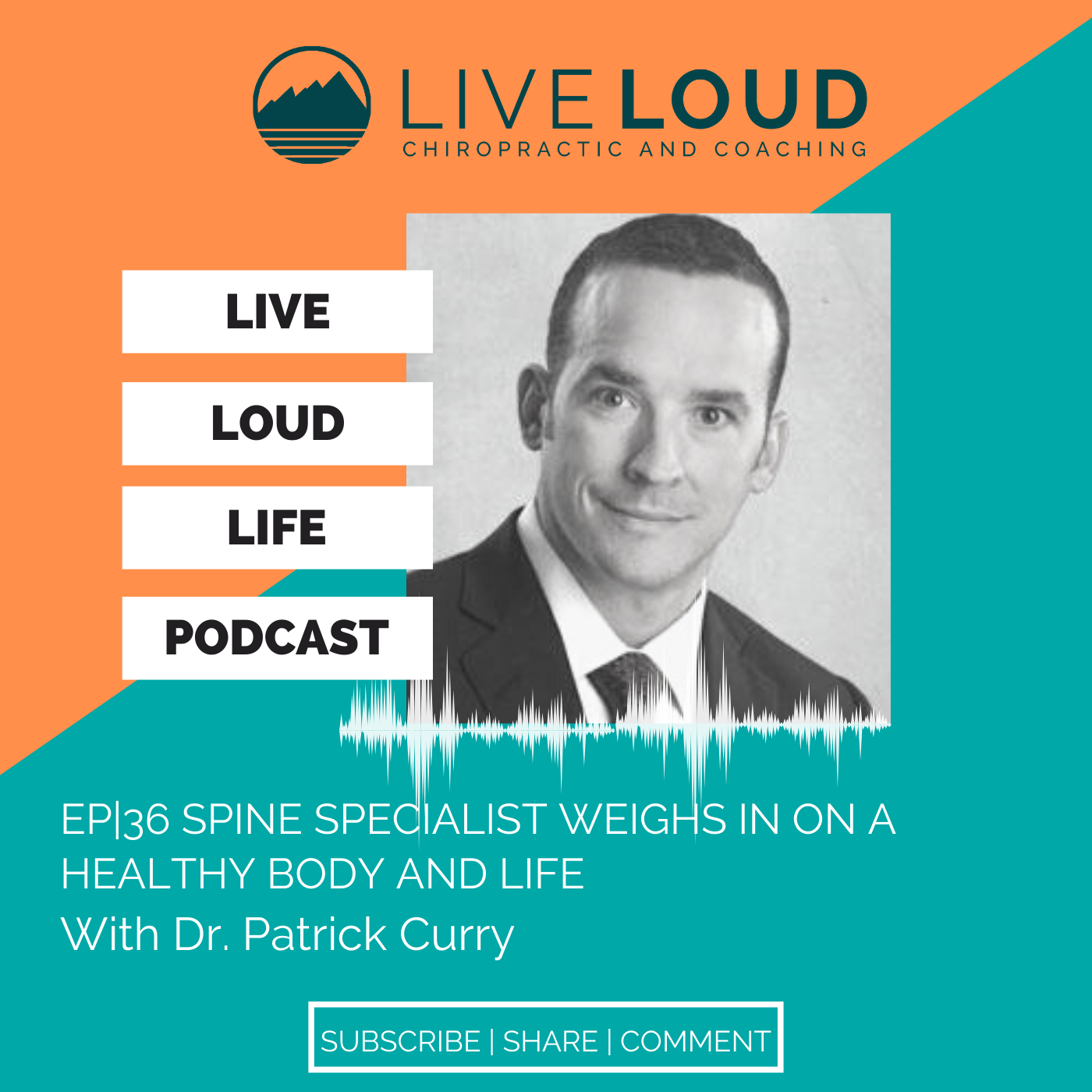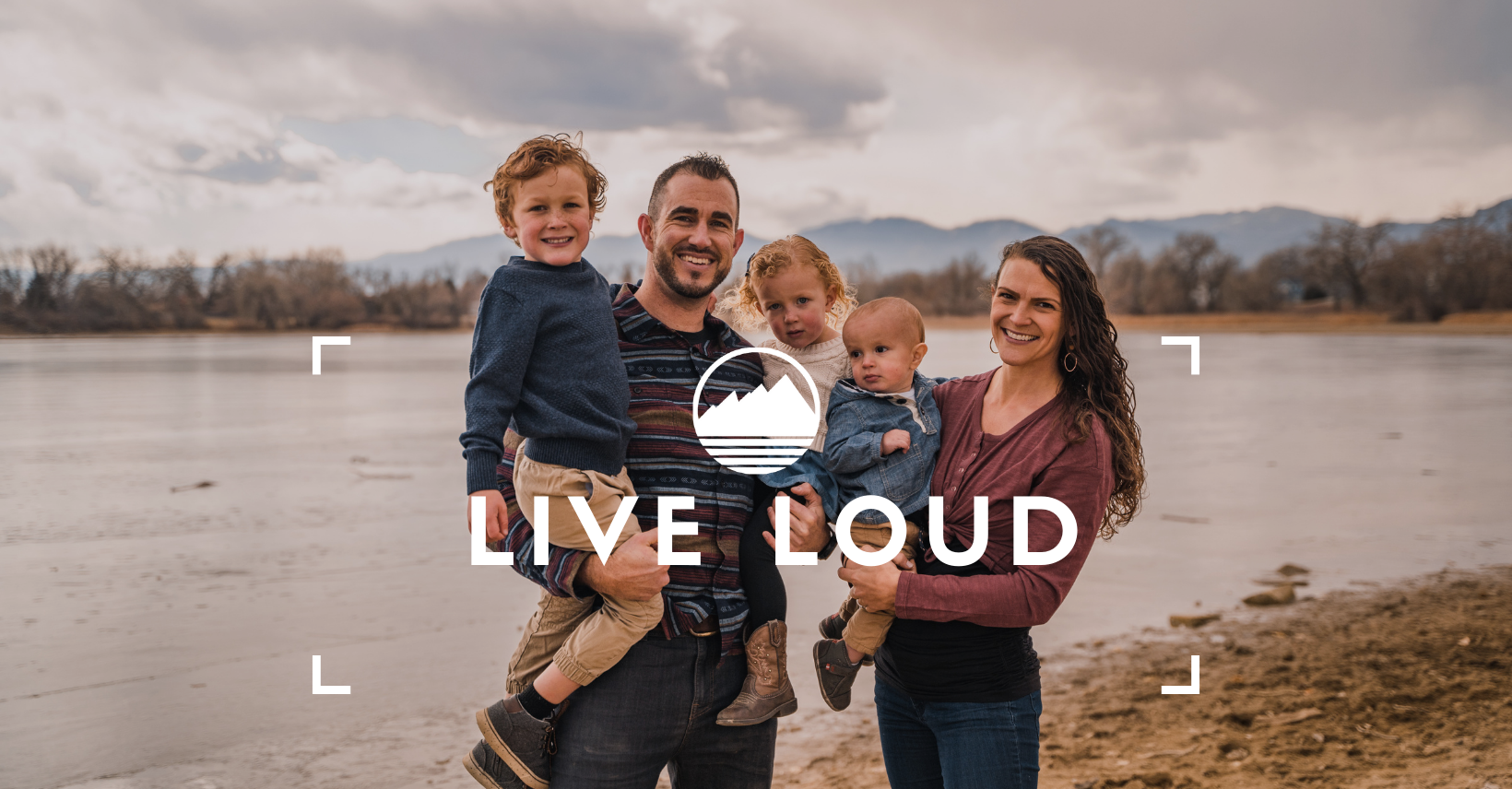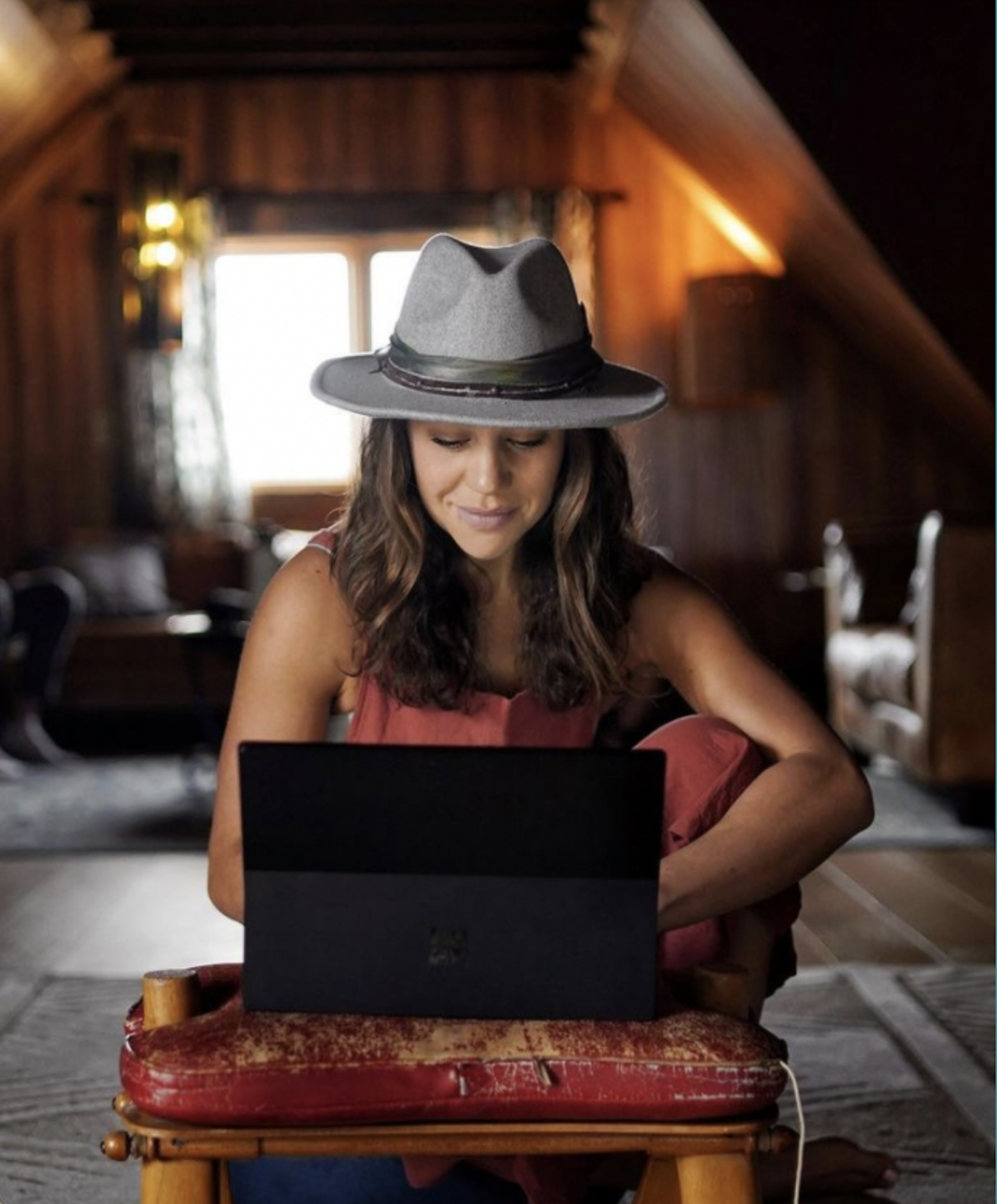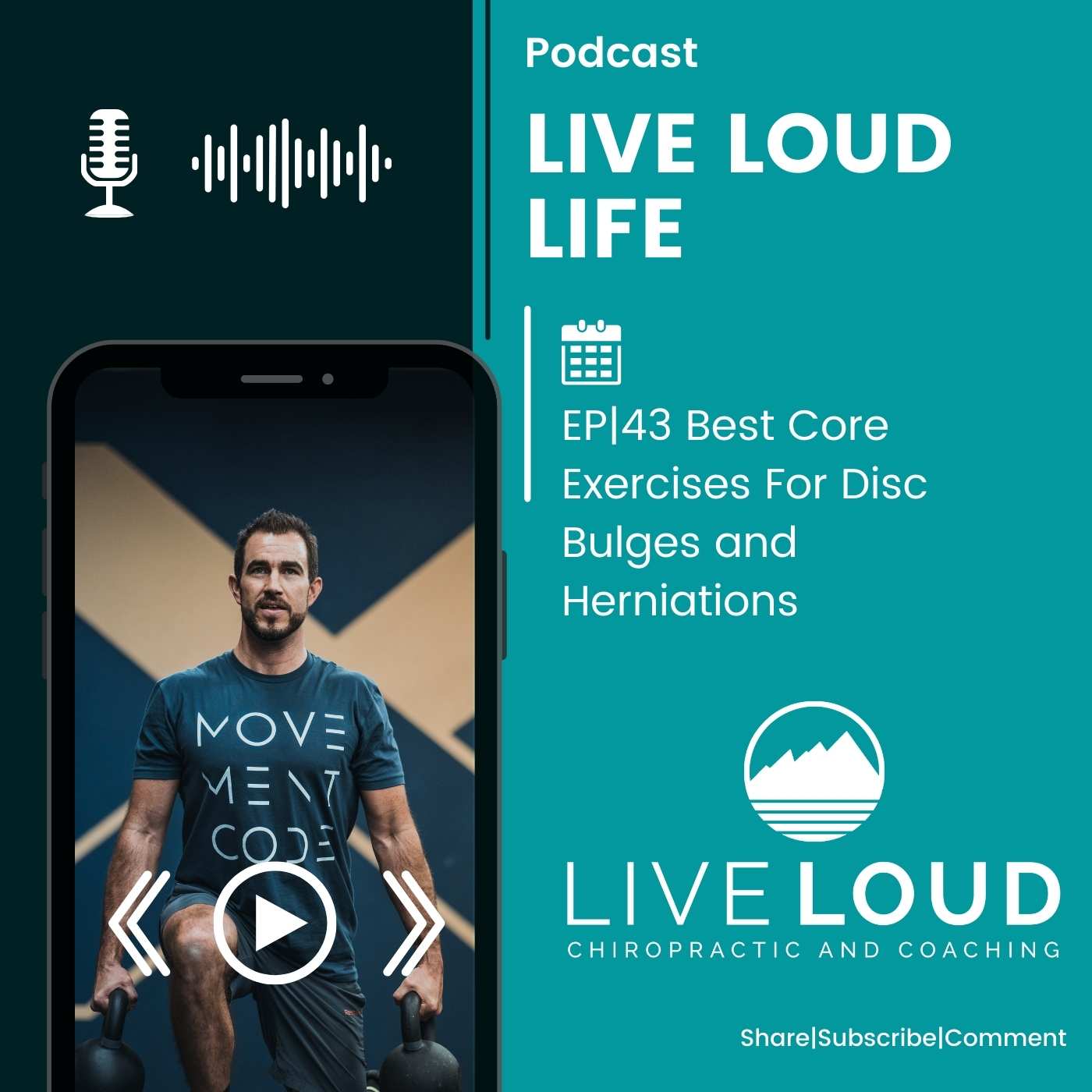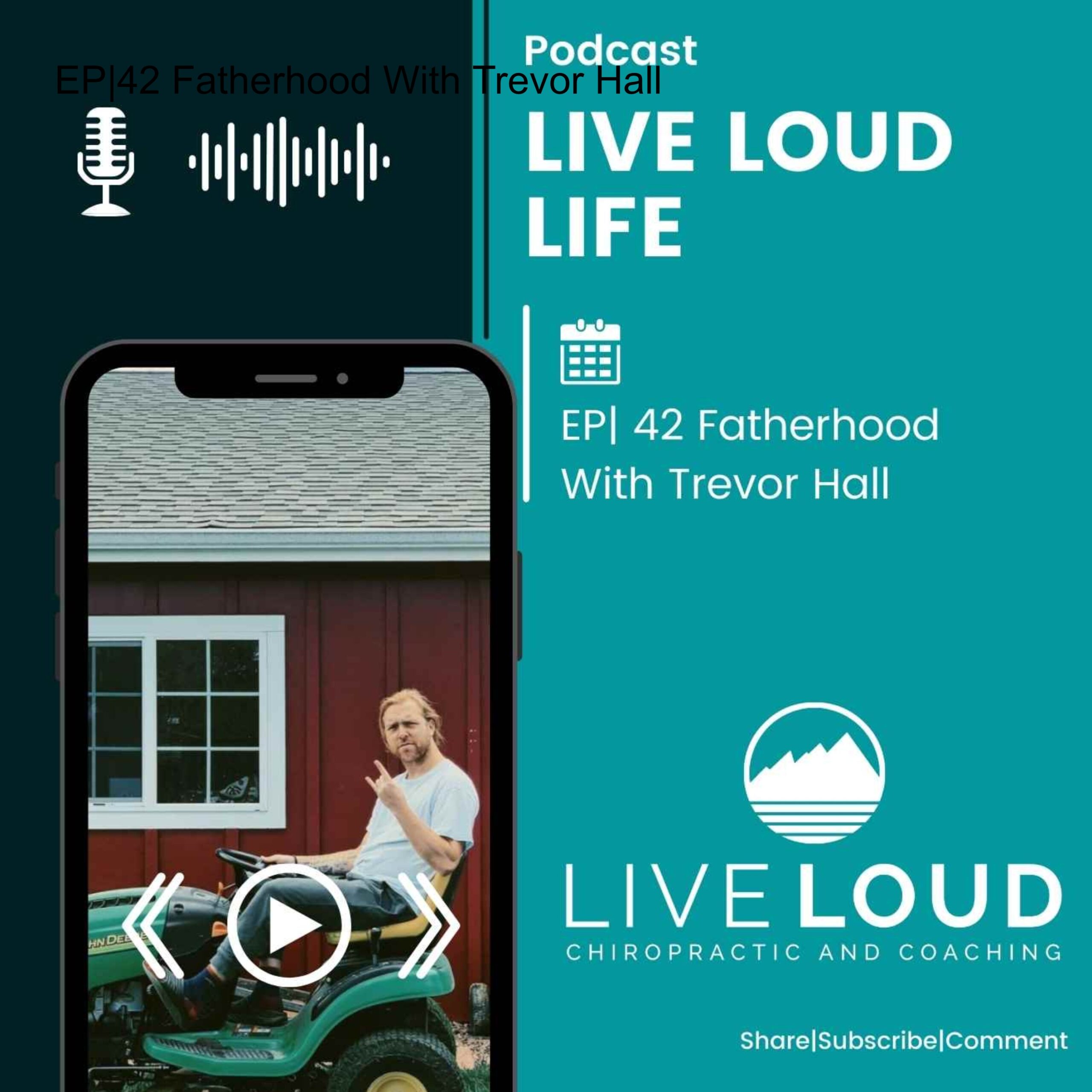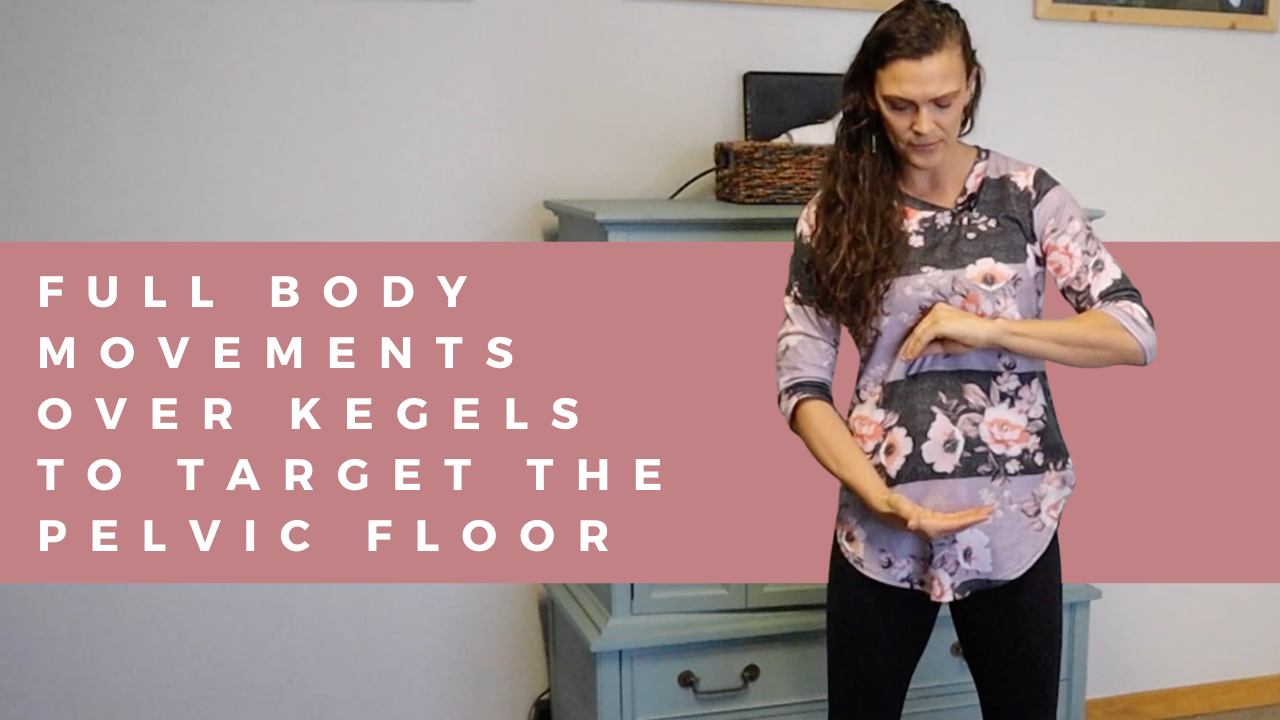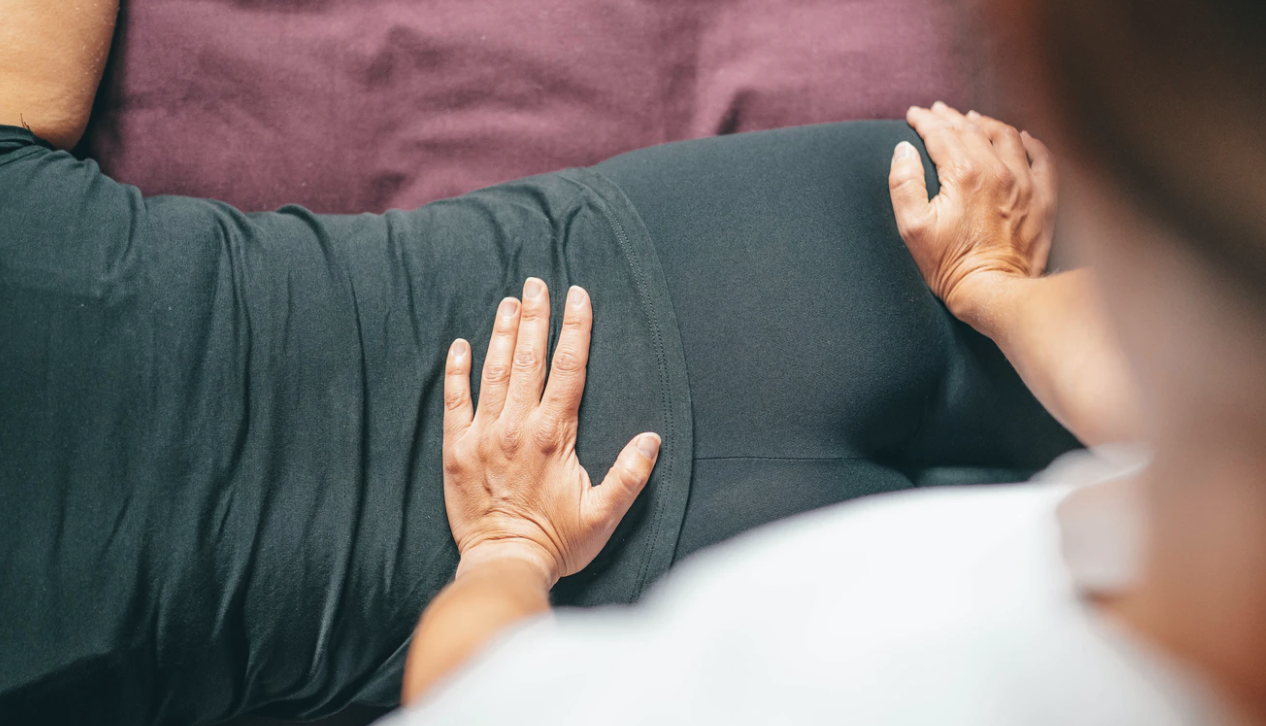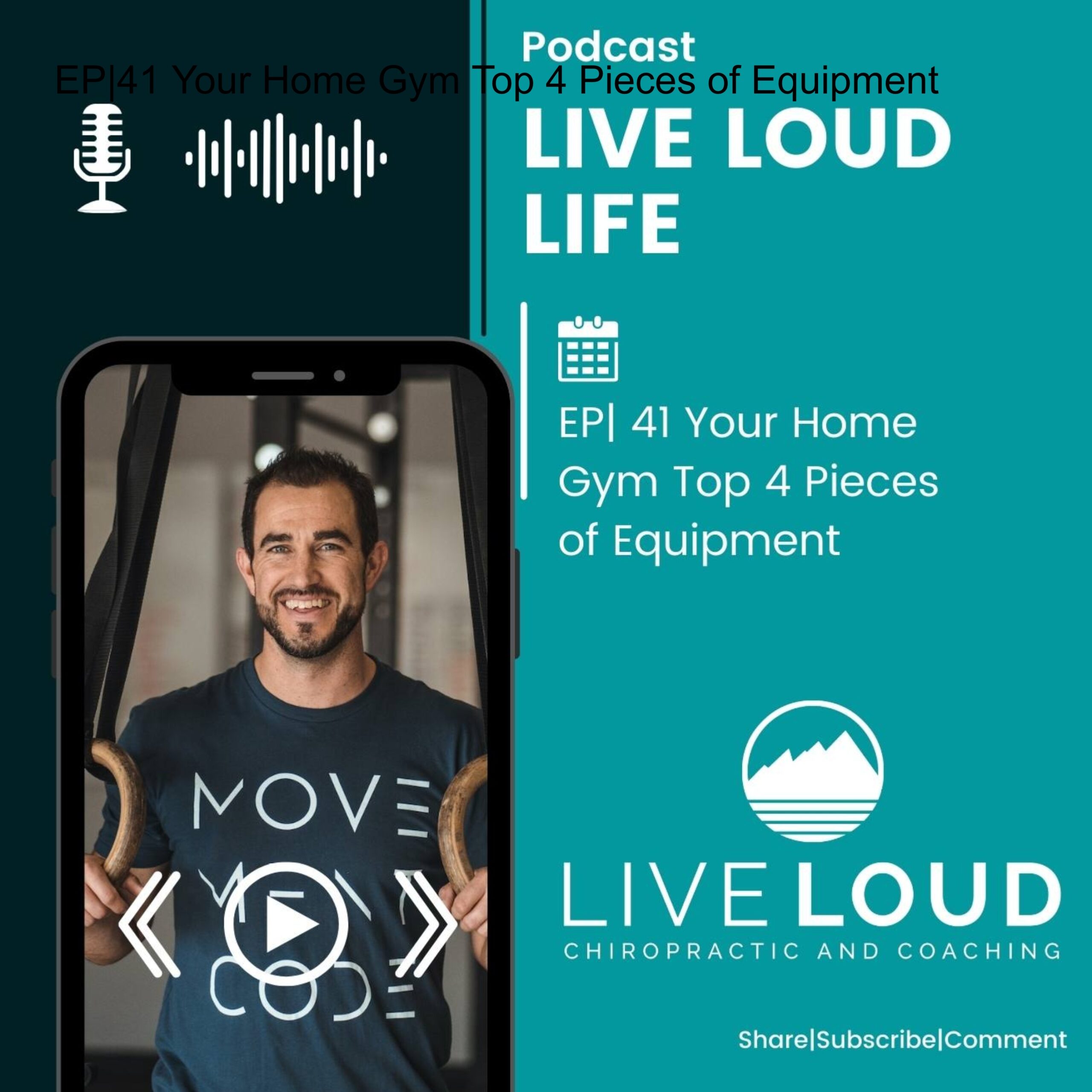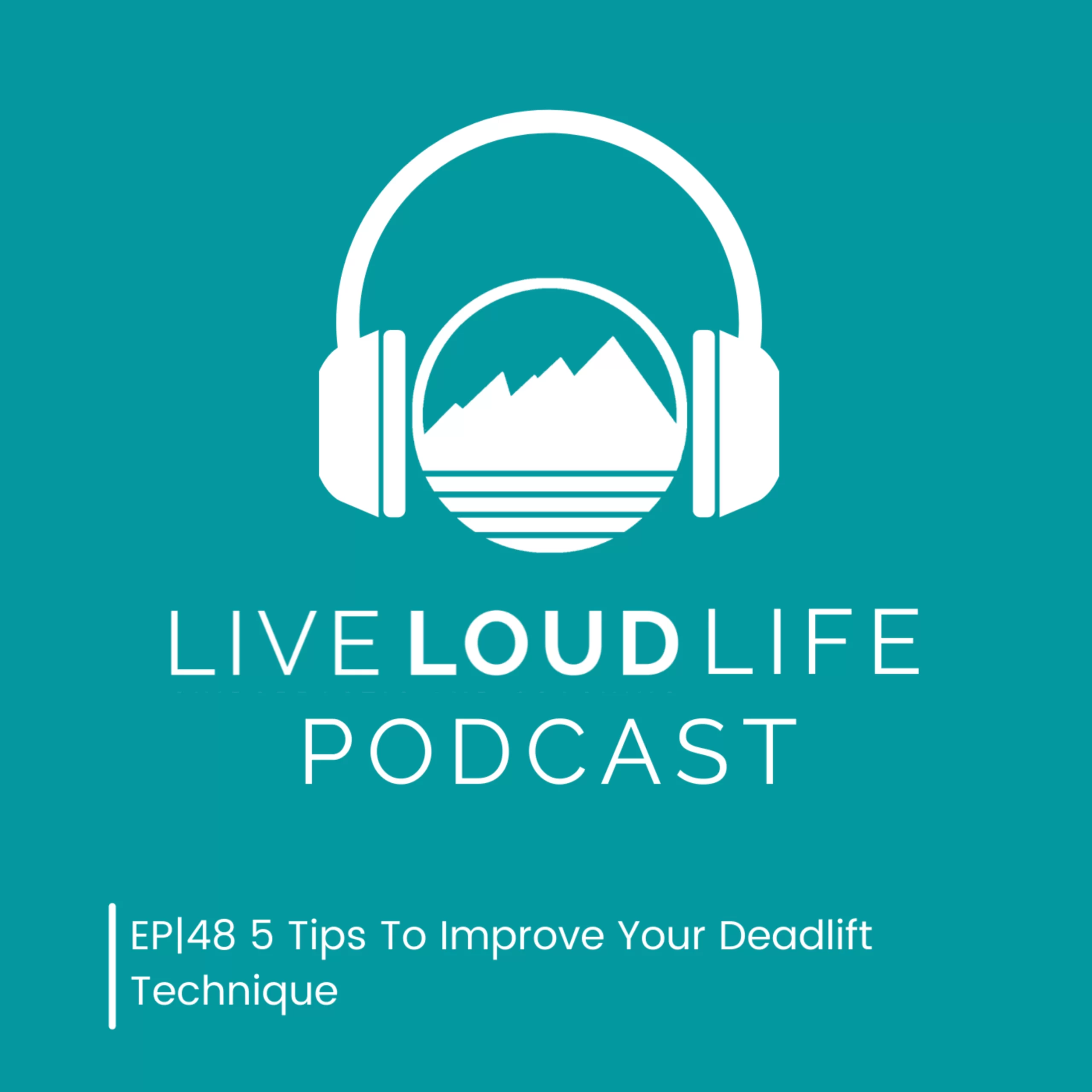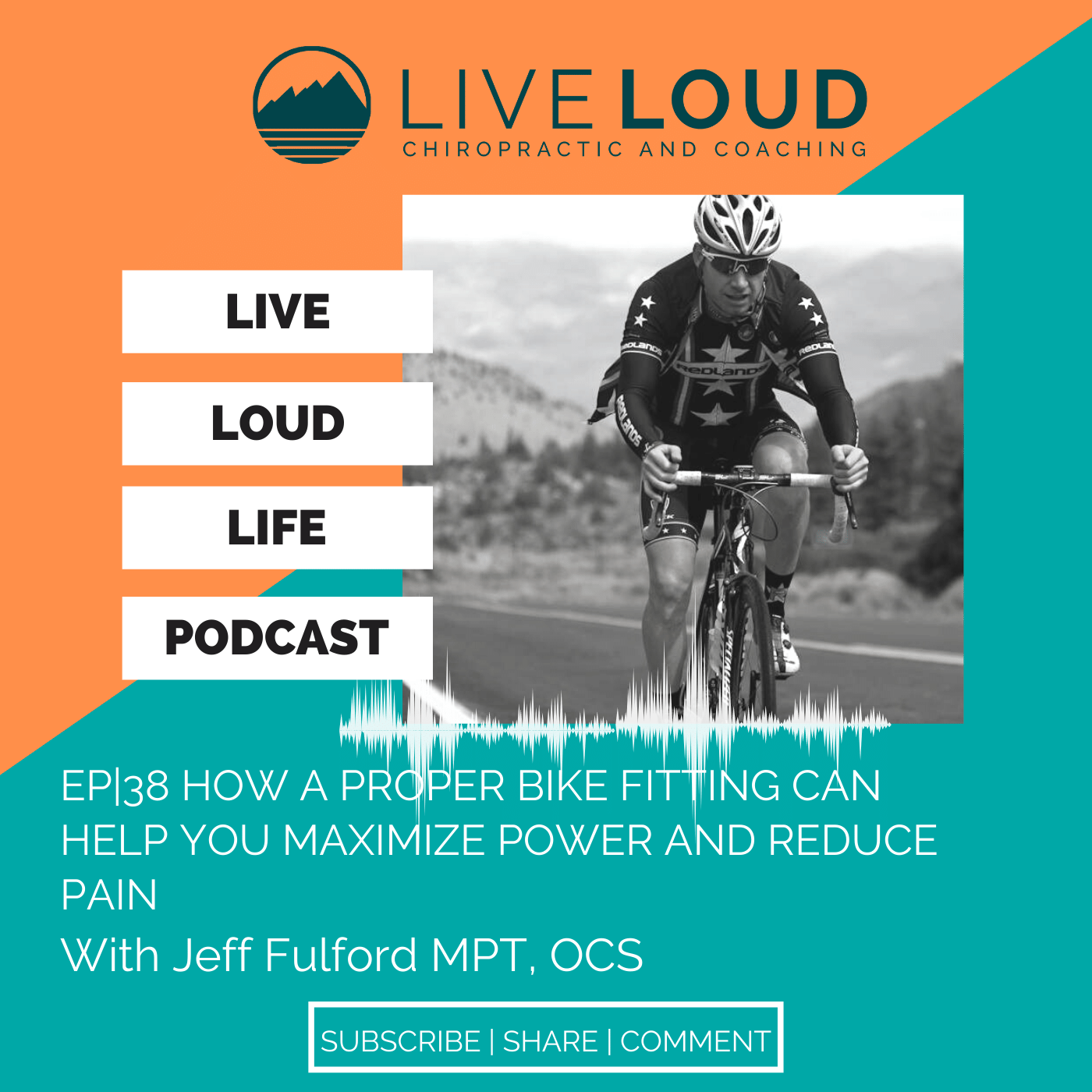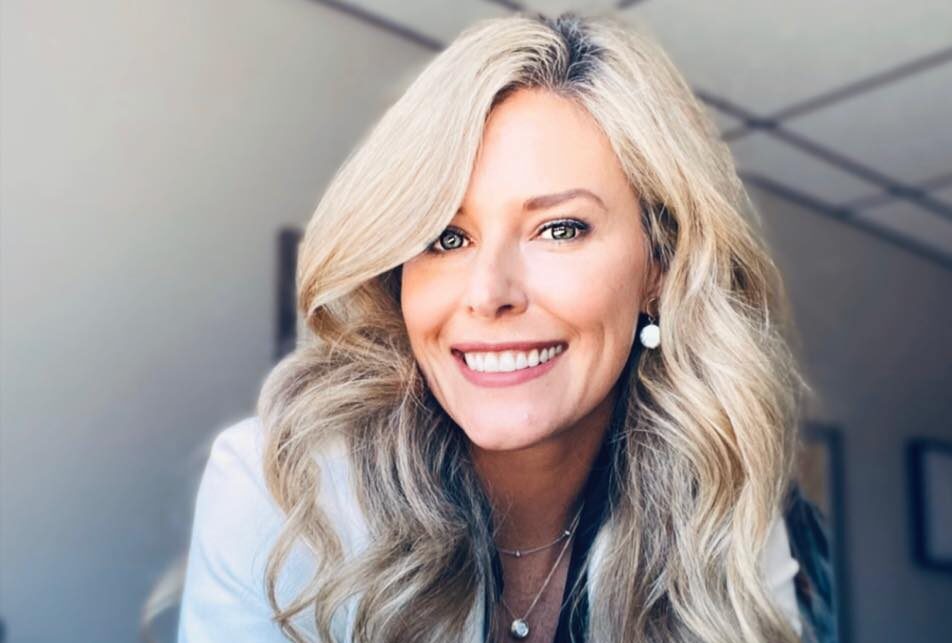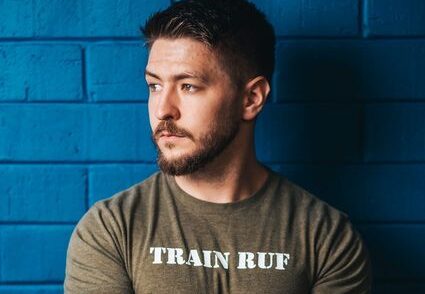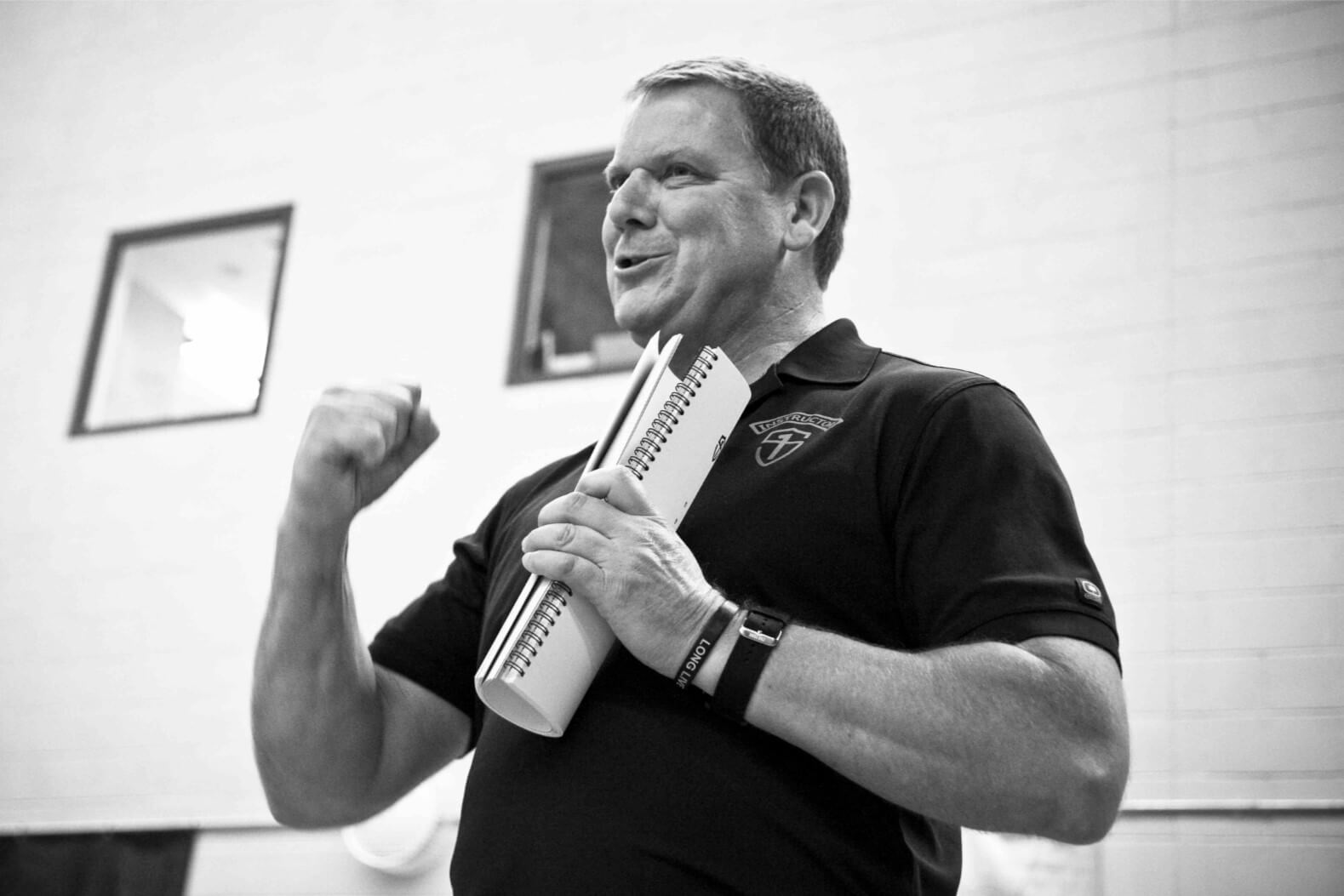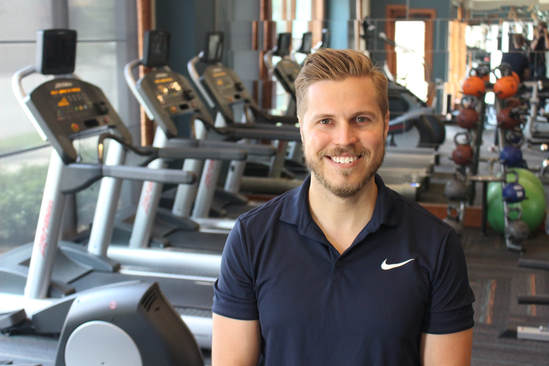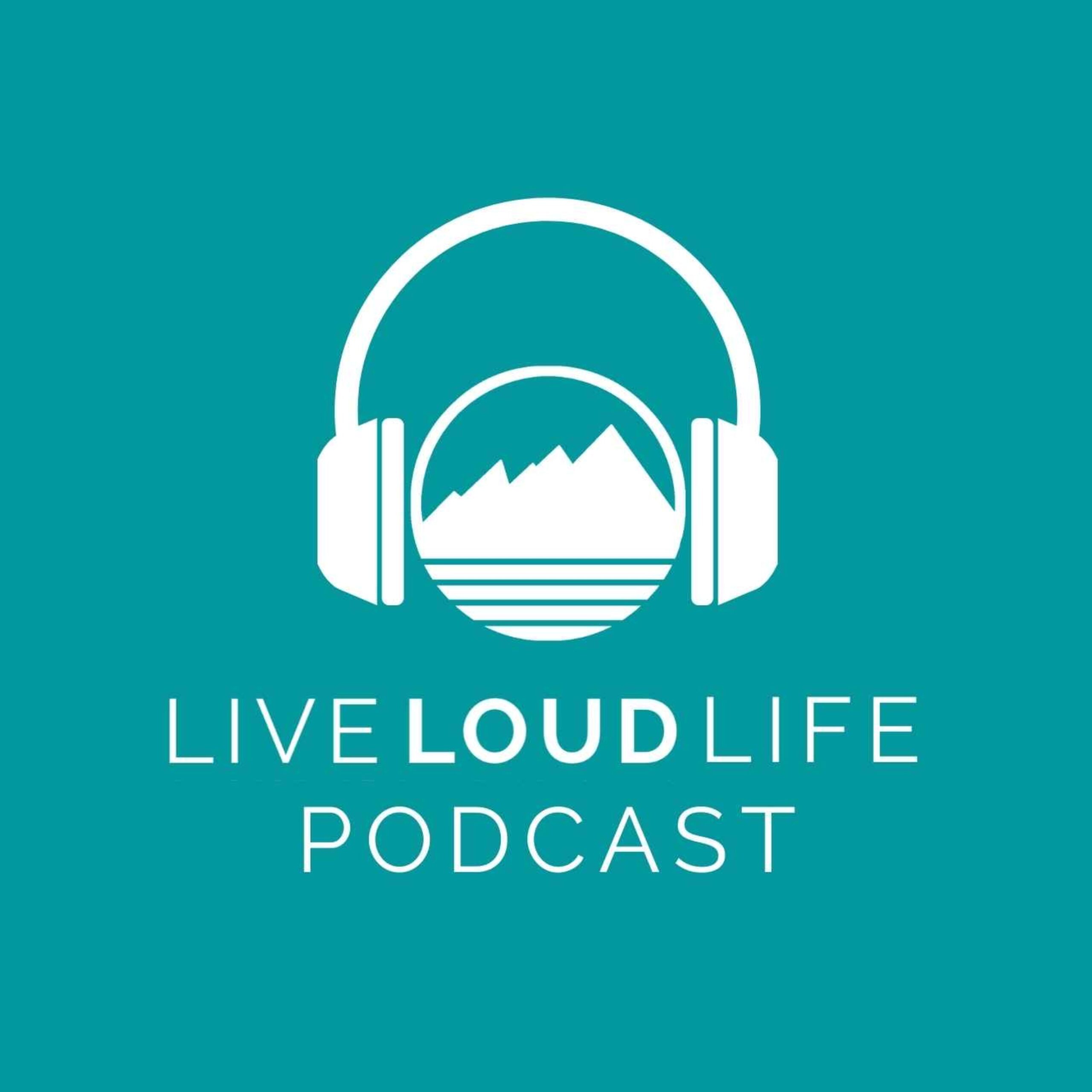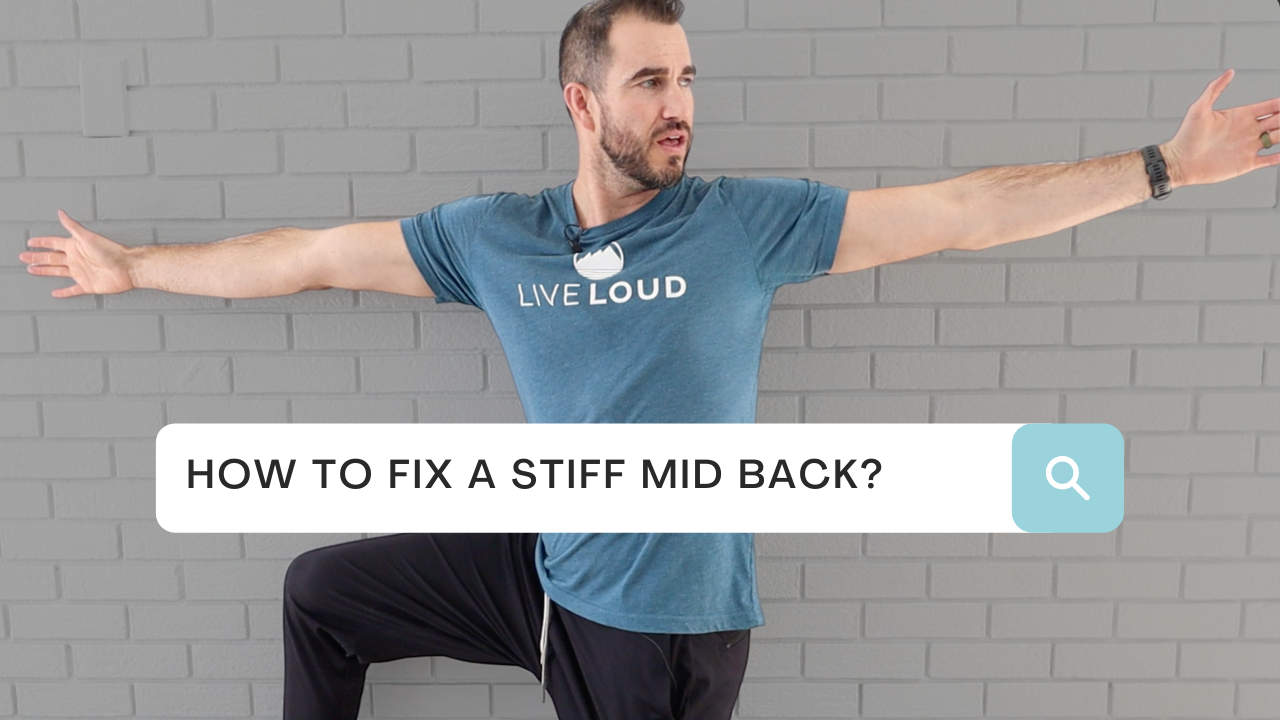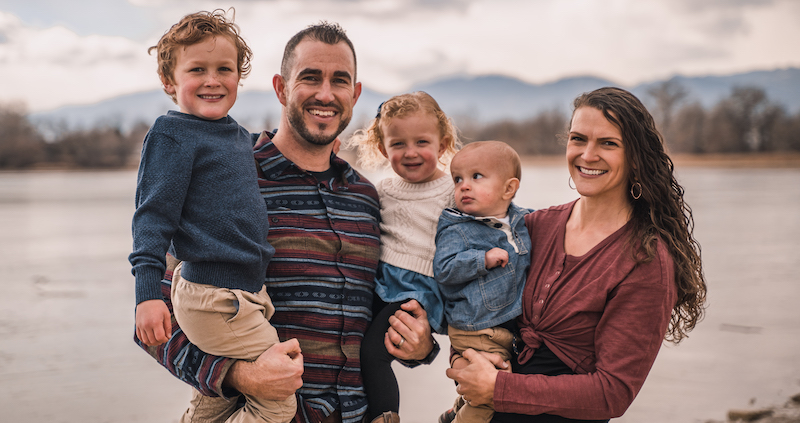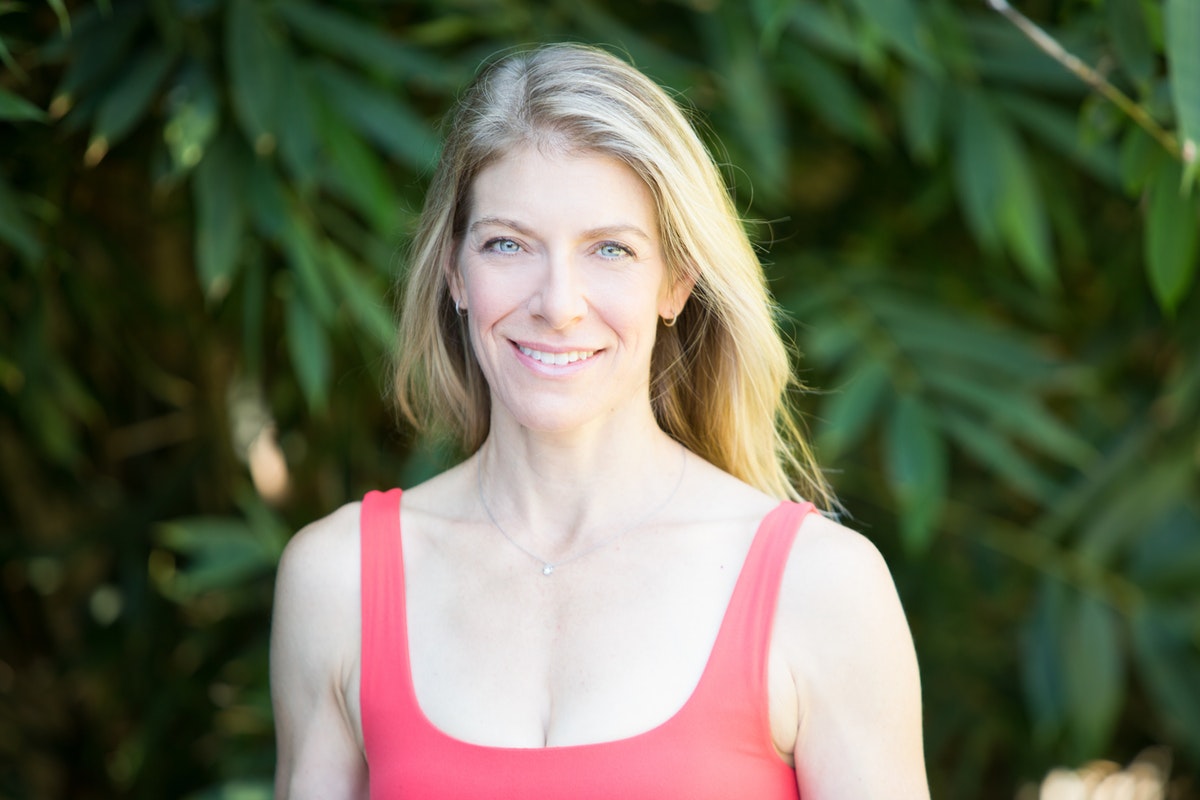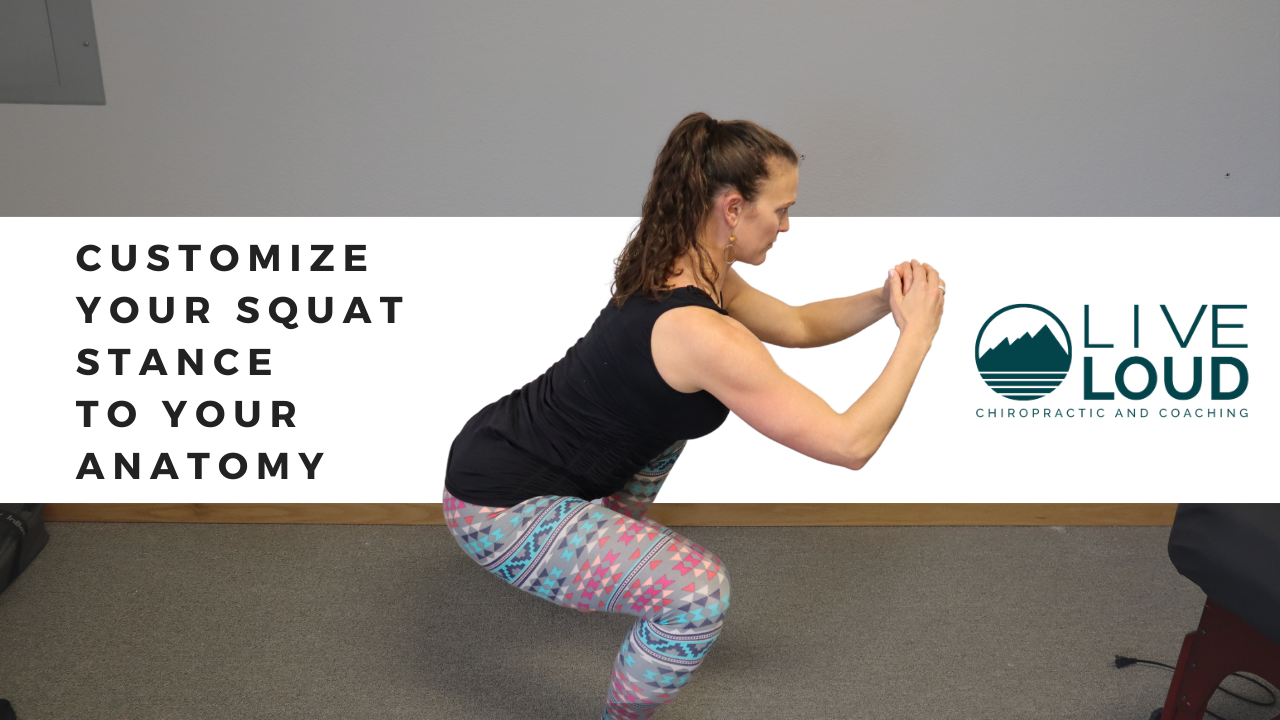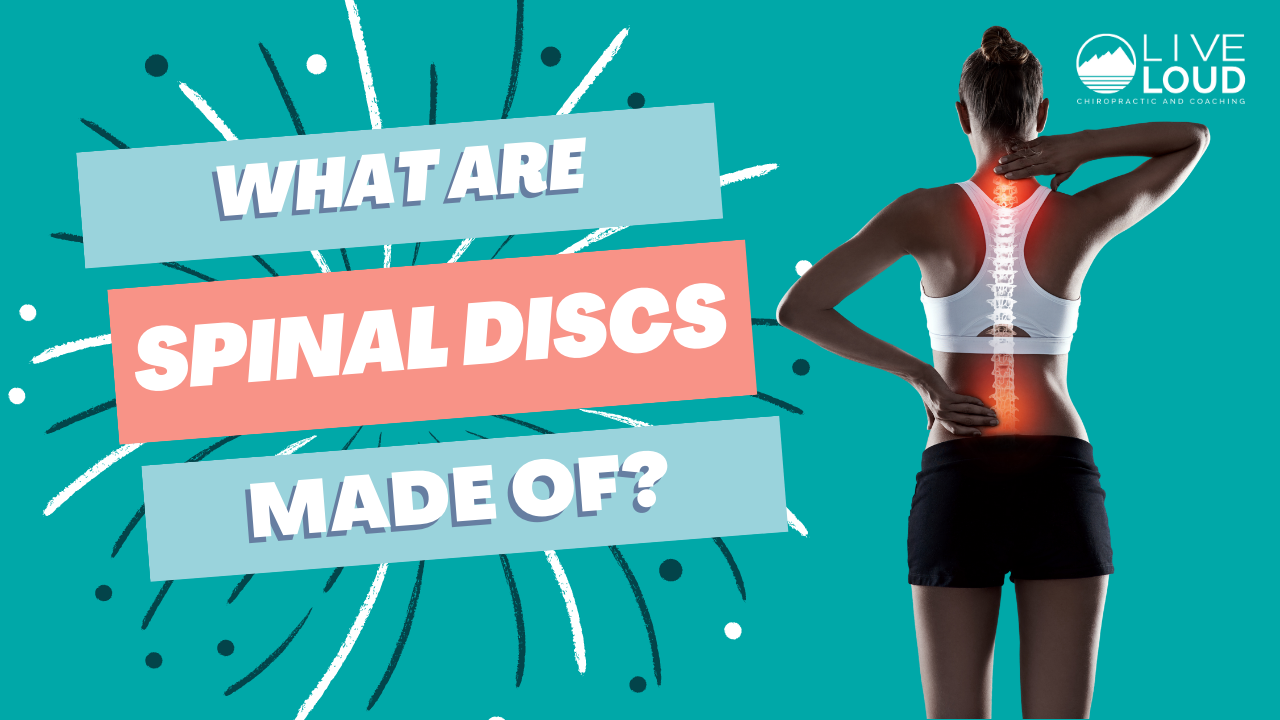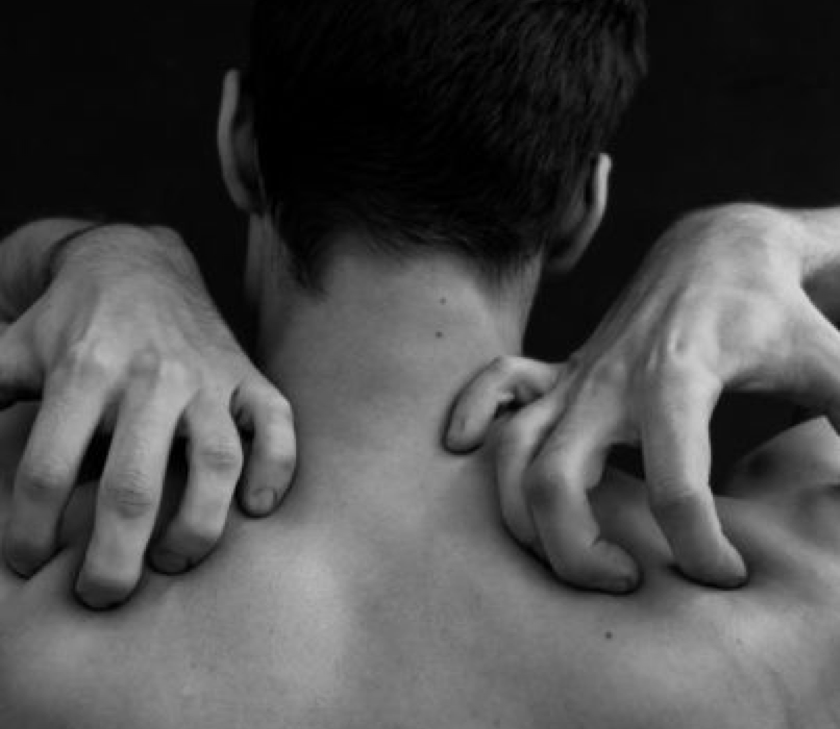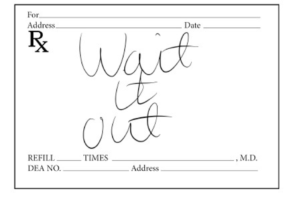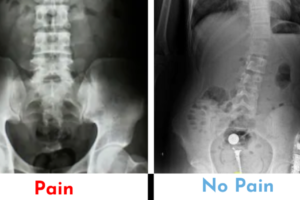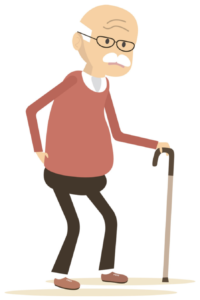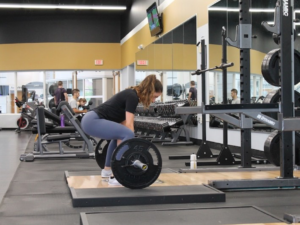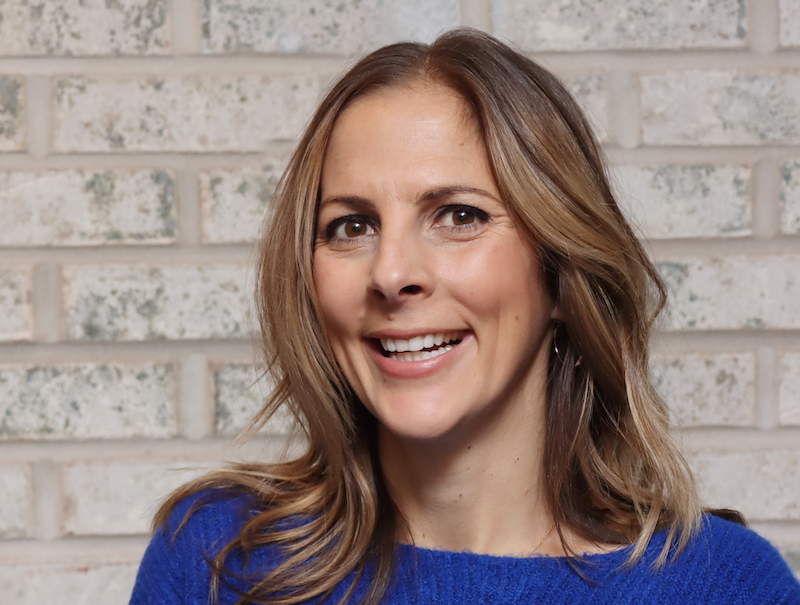Health & Wellness
3 Exercises to Improve Hip Mobility
Hip Mobility Series
Do you have tight hips? Do you want better hip mobility? Here is a series of three hip drills that will help improve your mobility and stability.
We’ll also articulate how to create dexterity around the hip. When we have dexterity, we have more control. Creating more control allows us to have better movement, and better movement awareness, depending on various activities.
When it comes to the hips, we typically assume we move the leg kind of around the body, which is important. But some of these drills will show how we can move the body about the hip, which is really important for sports and performance because a lot of these rotational movements or other movements are going to be our torso and our hips moving around our stable hip, which is planted into the ground.
I’m Dr. Antonio with Live Loud Chiropractic and Coaching in Lafayette, Colorado, and today I’m going to show you these hip exercises in series, and explain how you can go about them, and how they can help your hip mobility and stability.
PLAY VIDEO ⬇︎
The Hip Airplane
We can do the hip airplane in a couple of different ways. The main thing to keep in mind is when we’re doing a lot of movements around the hip, the leg is moving around the pelvis.
But here, we want to ask, how can we control the body moving around the hip?
We’re going to first start with a split stance. A split stance simply means one foot forward and one foot backward.
From here, I’m going to try to put the majority of my weight in my front leg. And my back toe is simply touching the ground for a little bit of stability. So here, what we’re going to practice is just opening and closing the hip. So the front leg ideally has toes pointing straight ahead. And the front hip ideally has the knee in line with the toes.
But you can see in the video how my torso rotates around. So what we wouldn’t want is if I’m falling, my knee comes in, or as I’m coming out, that knee is pushing out. I want to maintain some rigidity and planting through the ground. I’m thinking about is my pubic bone and my sternum, opening away, and then closing towards. I don’t twist through my back because I want this whole system to come with me.
That is the first step to understanding the whole movement.
Now, ideally, what we’re going to build up to is being able to do this without any help. So what you can do is use a foam roller or a countertop to help you balance so that we can create that first stepping stone into understanding the movement.
As you can see in the video, using my hands to balance, I’m going to reach my heel and my hand away from each other. Same thing as before: I open away from the leg, then come down and close towards the leg. (What’s nice too is you’ll actually feel a nice big stretch in the hip muscle here.)
You can also put a plate on a squat rack to use for balance and rotate on that plate as it’s anchored into a barbell or whatever rack you have.
The importance is the control of the torso moving around a fixed point (the planted foot). This is important for a lot of sports and activities that we do because a lot of what we do is plant a foot and then everything else rotates around that fixed leg.
Hip airplanes are not intended to be done fast or sloppy. These are about control, creating dexterity, and improving mobility. If you’re finding that in one of these planes of motion you feel a little tighter, you can actually hang out there a little bit and get a stretch. So there you have it–hip airplanes. If you’re not doing them, give it a try. They’re super beneficial for good hip health.
The Windmill
Now we’re focusing on creating torsion or torque within the hip. We tend to think of torsion as tight. Think of torsion as creating lines of tension where we want lines of tension, and then releasing where we don’t want it.
To do the windmill, the feet maintain a fixed position, and then we rotate in whichever direction from there. This can be a great mobility test, which I learned from a previous colleague of mine, Dr. Jordan Shallow with Pre-Script. He uses it as a test because by fixing this, we really get a true understanding of thoracic rotation and hip rotation.
I like being in a more open position for the actual mobility drill, I don’t like fixing it. Because again, primarily, my patients are not as performance-based, where they’re having a range of motion restrictions; I don’t want to put their shoulders in precarious positions, or create too much tension in an area that needs to move.
So our feet are going to move opposite to the direction of the hand that has the weight. We’re going to start with just bodyweight first, meaning it’s just my arm up–I don’t want to load yet. But you can see in the video how my toes turn.
Now, the most important part of this movement, just like when we do a hinge, is that my butt moves away from my toes, or in the same direction on my heels. The same goes true here. So if I’m square to you, and I turn 45 degrees, I do not want my hips moving. This way, my hips should be moving away from my toes in this diagonal fashion that we’ve just created.
Now, a very helpful cue is taking the front arm, or the down arm, and trying to slide your forearm down your thigh, towards your inner shin. As one arm comes up, opposite to the front leg, the other arm slides down, and my hips shift away. The majority of the weight is on your front, you can even bend the toes on the back foot a little bit if you want. This allows me to sit into that front hip more to work the mobility and stability of that front hip.
Again, those go hand in hand. When we’re trying to create stability, we have to have a certain amount of mobility. And for that mobility to happen, we have to feel oftentimes very comfortable with the stability in that hip. So that’s why we’re talking about both of these processes together.
I’m also testing and working on thoracic rotation, which is good as part of the test we have just indicated. And if I have a weight above me, I’m working on that shoulder stability as well.
But from a mobility perspective with the hip, we can now change that toe variation angle to coil and create more tension, as previously mentioned by Dr. Shallow. By squaring up, then doing my motion, I’m going to challenge the amount of hip and thoracic rotation we see.
I like doing these in sets and reps. I tend to not do them crazy heavy because I am working on it from more of a thoracic rotation and hip mobility perspective. You can load it up a little bit heavier if you want to challenge shoulder stability and some other factors as well.
I’ll try to get weight overhead. I tend to use between 12, 16, and maybe 20 kilos, and then I’ll do some easy movements. I might find, oh, this one’s a little tight. Then I’ll sit into that hip a little bit more, then I’ll come up. And when I’m down there, too, I’m playing around and just wiggling to see where I might need to focus a little more time and attention.
The windmill can be done with a kettlebell, a dumbbell, or just bodyweight. But it’s a fantastic exercise for challenging first and foremost, shoulder stability, but what I really love it for is a spinal mobility movement and a hip mobility movement, which really helps open up the hips.
The Turkish Get-up Windmill
This is great for challenging mobility and stability, but also for working on positioning. A lot of times we can’t progress with the Turkish Get-up because we’re missing certain stages that are super advantageous for stacking yourself appropriately to then transition into the next phase so that you can get up.
We’re going to do it first with bodyweight. To start, whether I’m going down or up, I’m going to be in this lunge pattern. Now, what’s important is if I’m coming down or up this middle phase, I need to square my hips. What does that mean? One toe is pointing in one direction and the back toe is facing another direction. My knees are facing 90 degrees away from each other.
This allows me to sit my bottom hip towards the back heel, allowing me to hinge down into the movement. Now, this is where the mobility comes in. A lot of people with tight hips will see that that top knee collapse down, but we want to try to keep that stacked. That’s where I get that 90-degree shape I had. I’m also starting to open up and challenge that downward knee or inner thigh as I hinge and turn. So this is the Windmill within the Turkish Get-up.
So I’ll stage this for clients or patients as practicing what this feels like to just work on hip mobility and stability in a different context. If you start to fall in as you go back and forth, we see where that tension is wanting to pull you in, and where we’re biased to not being able to appropriately load.
So we’re going to practice this first, without weight, coming up and down, loading into that hip, and coiling up and down, starting to loosen up both hips extremely well.
So let’s say, for instance, I’m coming down, I’m going to lunge back, then I’m going to windshield wiper my top foot so that my knees are at a 90-degree angle. I’m going to sit this bottom hip back towards my heel, slide the hand down in line with the knee. Now I’m in the position to kick that leg through, and then I would reverse down.
On the way up, it’s the same thing. Once I’ve come up to my hands. I’m going to pull that knee through, but it’s got to open up at 90 degrees to the top, so I can pull my leg through into that windmill. Then sit the hip back, pop up, windshield wiper the leg around, and then we’re gonna stand.
So that is the windmill position within the Turkish getup to challenge mobility, not only in the thoracic spine, definitely in the hips, but also challenging the stability of the shoulder as well.
The Prying Goblet Squat
The goblet squat is one of my favorite exercises. It is great for teaching the squat pattern, but also for showing and challenging how we integrate core stability.
It is also really good as a hip mobility drill because it puts you in a position where you’re loaded and helps you get down into that deep position where you can kind of offset that weight. But because you can get your elbows down inside of your knees, you can start to pry your hips open to use it as a mobility drill.
First take a weight, bring it up like we normally would for a goblet squat. And then we’re gonna simply squat down. And notice if I hold it away from me that’s going to allow me to stay more upright. But now I can wedge those elbows in between my knees, and start to bob and weave and shift and pry open to stretch those inner thighs and that inner hip.
Now, you could try to maintain a straight back and still do the same thing. We’re just showing that if we want to try to get into this position, to use the elbows to open up the hips and widen that space to create more mobility. This is something that we que consistently when working on a squat pattern.
Oftentimes, our squat patterns turn poor where we’re leaning forward or something. Not always because we have poor mobility, sometimes we’re just too narrow and we’re not able to utilize a hip range of motion.
So we’re trying to find that squat stance and enhance that range of motion by prying the hips open. So what we mean by pry is if my two ball and socket joints in the femurs move away from each other, now I have more space for my torso and pelvis essentially, to sit down in between, which helps me keep some more upright squat pattern, which will help in performances, such as front squats, overhead squats, even back squats, depending on the position of the bar, so prying goblet squat is a fantastic mobility drill.
Conclusion
Remember, you do need to have a certain amount of mobility to even get down into these positions. So you might need to utilize a lot of other hip mobility drills that we have to first get there because we don’t want anyone to sacrifice or create any issues by forcing yourself down low enough just to get your elbows in.
Goblet squat or prying goblet squat–use it as a good mobility drill. Use it as a great warm-up before your squats or any of your other workouts because I know it will be beneficial for you.
Keep up the great work and LIVE LOUD!
Plant Based Healing With Janelle Orsborn EP|46
–
Live LOUD Life Podcast
Lafayette Colorado
Episode 46
Plant Based Healing
With Janelle Orsborn
Tune in as we talk about healing from trauma and anxiety, plant based therapies, living in the present moment and much more.
0:47 Find out how Janelle started as a bodyworker and eventually learned about trauma.
1:55 Janelle’s sentiments on plant therapy; the effectiveness, the research and regulation.
4:21 Janelle journey of mental health and how plant based therapy has helped in her healing process.
9:35 How Janelle was able to treat chronic anxiety and how plant based therapy was part of the remedy.
14:22 The value and importance of the present moment.
17:37 Antonio and Janelle talk about how some cultures are using plant therapies for their kids; we also talk about parenting and homeschooling.
27:25 Janelle new adventure; her plant based product, upcoming book, and her therapy retreats and sessions
About Janelle Orsborn
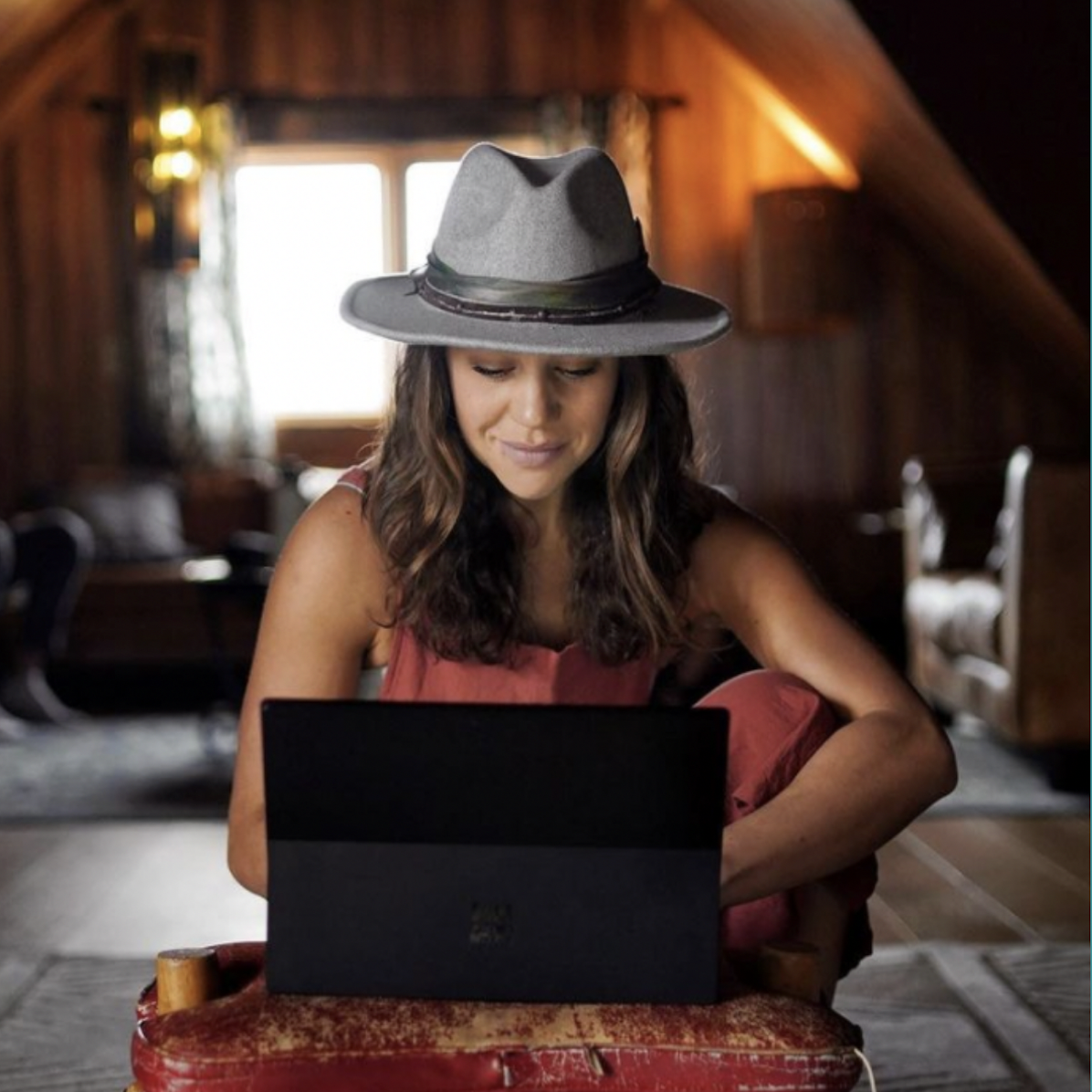
Background:
- Bodyworker
- Therapist
- Breathwork facilitator
- Aspiring author
Connect With Janelle:
Instagram: https://www.instagram.com/janelleorsborn/
Coco Love Cacao: https://etsy.me/3qNYnsm
Check Out Some of Our Other Blog Posts and Podcast Episodes
Anthony Gurule
All right, what’s up guys? Welcome back to The Live Loud live podcast. My name is Dr. Antonio, your host and I am excited to chat with my good friend, Janelle Orsborn and you have to pronounce it Osborn because I heard you say it the other day on something online. I was like, I am saying it wrong.
Janelle Orsborn
Not Osborne.
Anthony Gurule
Orsborn
Janelle Orsborn
Yeah. That’s all right.
Anthony Gurule
All right, well, welcome. Thanks for joining me.
Janelle Orsborn
Yeah, am so glad to be here.
Anthony Gurule
We’re going to jump in because I think we’re going to chat for a while, we’ll get it in. But tell everyone who you are, and what you’re doing now?
Janelle Orsborn
Yeah. Absolutely. So, I’ve been a body worker for about 13 years now. I was 17 when I graduated from Massage Therapy School and it was kind of on a whim that I decided to do this, which of course, it’s always perfect and divine. But it was like this coin toss between hair school and bodywork school. And then while I was in massage school, I ended up falling in love with just the healing art form of bodywork and where that’s been able to take me. So my journey with that has been learning so many different people’s bodies, but then we’re like, they’re storing trauma in the body, where they’re storing pain and how the pain is manifesting.
So that kind of set me on my path of not only learning more about trauma therapy and the way that the body literally holds trauma, but also my own healing journey of working with my mental health, my anxiety, and some depression. And so now I’m working kind of more the psychedelic space; actually that is where I’m really fascinated with as far as how psychedelics are designed to literally heal our physical bodies, as well as our minds and how those two things work so well together.
Anthony Gurule
Why do you think, I mean, the psychedelics, plant therapies, obviously, they’ve been around for a really long time, right? Why did it get so, I guess, like, not mainstream and now being so not mainstream, but in this bush. It’s because they’re doing a lot of great studies with it, you know, PTSD, veterans and different things like that. Now, obviously, it’s so that’s getting up there, we’re fairly mainstream, where they are able to give this to people.
Janelle Orsborn
Absolutely, which is kind of a loaded question because you always think like, why did these things that have been around for thousands of years, and jungles and tribes have been using these therapies, these plants to heal themselves, their families for generations. So I think use in the 50s, 60s, 70s, people not having a lot of awareness around like of the how.
Plant Therapy is really effective and you can really make a lot of money if people are healing and then getting better. There’s a great business model in Healthy People. And so I sometimes just wonder if this is a rabbit hole conversation but, you know, if you can make money on the pharmaceutical industries, so can you make money on plant medicines? So, I’ll really be curious to see as the research comes through with psychedelic assisted therapies, specifically how they’re going to regulate that as they have kind of with the cannabis industry. So psychedelics specifically are– I consider those in the realm of MDA, MDMA and Psilocybin, which is derived from the mushroom.
Anthony Gurule
Yeah. That’s a really good point. From my understanding the way that it’s being used now is not so much on a personal use, it’s more or is it always guided assistance?
Janelle Orsborn
Well, right now it’s all just done in research settings, legally. Obviously, there are people who are willing to go there and just administer and be facilitators of plant medicine work that’s not necessarily done legally through the regulation. But that’s how I’ve done a lot of my own healing; has just been through working with facilitators who are extremely knowledgeable, they just might not be FDA regulated and done in like a therapeutic setting in that regard.
Anthony Gurule
So, what interest you being younger and dealing with anxiety, depression and different things like that, when mostly what we hear is either medication or even just standard therapy? You know, we think a lot of times with those– therapies is a good start and then if that doesn’t work, then sometimes it goes further. But how did you first hear about this and what really piqued your interest in it?
Janelle Orsborn
Well, I know just in the reflection of you, you’re really a creator at heart and this is a form of healing as an artist. This is my artistry to be a healer because everyone is individual. And so, there are no two people that are going to be alike in their healing and that was for me too. So, when I was having these feelings of anxiety in my body, and these really dark like depressive thoughts, I was like, this can’t be, my body is not deficient in medication. That’s not how I was made, I wasn’t made to be deficient in medication. So there’s something dis-regulated in my physical system. And so I really just became my own experiment of like, I’m a creative person, we’re all creative, we’re all creators on some level and in some fashion. So why would I want to numb or minimize my gifts and my connection with God in the name of being healthy? It set me on a course of what mental health really is and why is my body dis-regulated?
Anthony Gurule
Were there things you tried before?
Janelle Orsborn
Yeah, I was in Talk Therapy for years; three years of sitting once a week with a therapist. All modalities and tools that are helpful. But I just found that I wasn’t in my physical body, there was a disassociation between my physical experience and what was going on in my mind. And that will happen with a lot of really creative people, they’ll live so up in their head that they will not be able to drop it. And trauma also is a factor of not wanting to fully drop in the body; if there’s been physical trauma or if there’s just a really deep sense of fear state to be in the body. So the vagus nerve has really been what I’ve been passionate about studying; is how can we regulate the vagus nerve, which is the rest and digest kind of nerve. So when you stimulate this nerve your body’s able to actually fall into a rest state instead of being in like a fight or flight mode. You can actually just do that through breath work.
So that’s really where I started as well in therapy and then in breath work, I was having a tremendous breakthrough. I facilitate breath work journeys on retreats, and 1:1 session as well. You create an altered state of consciousness when you’re in that deep of a parasympathetic state, you drop into the delta brain wave state, and your brain is actually able to regulate itself again instead of having so many chemicals from being in fight or flight, that you just become so dis-regulated. I was literally disassociated from what I am even feeling because my mind is running away with itself. And so then I found plant medicine again kind of by accident, but it was recommended to me by several people before I finally said, yes.
Anthony Gurule
Is a big step, right? Like you said.
Janelle Orsborn
Yeah, I had actually worked with the Board of Health in Colorado when I was in my early 20s. And I was extremely opposed to a lot of the bills and the things the legislation that they were passing around cannabis and regulation of cannabis. I’m not really familiar with that plant specifically but it’s just the journey I’ve been on because I was so rigid and fixated in my mind thinking all drugs are bad and medicine that is regulated by the FDA is good. I think that there’s kind of a really big gap between the psychedelic space and western medicine. So that’s just been a journey in itself. For me is coming into the surrender of, wow, there’s probably a lot that we actually aren’t utilizing because it’s going to heal people, and it’s not going to keep people dependent on medication.
Anthony Gurule
Yeah. And I think what’s also hard to is– it’s funny, you may have heard this before because a pastor at a church who said it. Drugs work, if drugs didn’t work you got sold bad drugs, right? But I think what’s so hard now especially in our society is, I want to be better than yesterday. And when you take your medication, like they are pretty potent, and they do work some wonders, but it’s like that thing you were talking about was like systemically getting down to things, not just covering up, not just trying to balance certain levels because the chart said to do that.
Janelle Orsborn
Right. If you’re trying to balance certain levels, there’s probably a band aid kind of situation that’s being put on a real underlying issue. For me, it was just a lot of dis-regulated stuff from childhood that I had never really been able to sit with and face. Then it set me on a spiritual journey of really kind of deconstructing my faith and being like, what do I actually believe in, what really is my purpose because I can’t just stay on this hamster wheel of just medicating my own anxiety and depression. It has to be medicine. That became my agreement with myself that I’ll only go where there’s medicine because medication for me just keeps me and keeps anyone that I will come in contact with as a healer kind of just on that pendulum as well or on that hamster wheel.
Anthony Gurule
And oftentimes creates dependency issues and all that other stuff, which again— I mean, I don’t know enough about all those medications and obviously certain medications prolong certain situations.
Janelle Orsborn
Yeah, there’s a really interesting– there’s been a few books that I’ve read that have really felt resonant in the way that I approach my own healing and the people that I work with now in their healing journeys. “The Body Keeps The Score”, I’m sure you’re familiar with that book and if not it’s worth reading if you feel like there’s maybe chronic pain in your body that isn’t from anything, or even like chronic anxiety, because chronic anxiety is really good indicator that there’s probably something in your life that’s out of alignment, because that was really my indicator. And I was like, why am I always so anxious, and it was really just that I wasn’t in alignment with a lot of things in my life, a relationship, the way in which I had structured my life where I almost was structuring a life that I couldn’t afford. And I was working super hard to keep up with it. There was just a lot that wasn’t in alignment.
Anthony Gurule
It’s very common for a lot of people.
Janelle Orsborn
And so it got me on this spiritual journey of deconstructing my faith, really coming into like some honesty with myself. When I started down the pathway of psychedelics, it was unique, because the word psychedelic literally means to reveal the soul. And so when I read that and then really sat with that, I was like, whew, it can’t be an escape route if you’re really doing it. If you’re doing it you’re going straight to meet yourself. I remember the first time I ever worked with the psilocybin medicine, I was like, am I going to meet a demon like I don’t want any crazy stuff to happen. And my facilitator and good friend now she was like, well, if you have a demon inside they will be there whenever you meet me in order to be able to really– basically just love that part of myself. That’s my approach to healing is like where in yourself are you not– Because love is the ultimate medicine ever, period, end of story.
How can I as a healer then hold the space for myself to alchemize that thing in me that’s fear driven or that’s ego driven, that’s out of alignment? Can I love this part of myself to be able to alchemize it, to then be able to love it because love will ultimately heal it. That has probably been the biggest motto that I approach in any journey, or anything that I facilitate. And my body just completely shifted since working with psychedelics. I’ve lost weight that I was carrying, it was just emotional; almost like armor protection. I’m just more clear and been able to integrate them because the other side of this work is integration. I’ve been able to integrate, to structure a life that can actually support my healing and not just stay on the hamster wheel. And that’s been the most profound part of this work. It’s not for the faint hearted but it’s definitely for those who are just hungry for the truth, because we’re not meant to be in pain, we’re not meant to suffer. That could not be our birthright ever. And so for me the journey has been not only from a physical standpoint but it’s actually taken me very much into the spiritual aspect of healing.
Anthony Gurule
One thing I remember us talking about in the past in a framework of mindset and different things like that, one thing that I’ve heard is like anxiety is basically the separation between expectation and reality. We set certain expectations and then when we don’t meet it, we just get all frustrated and in which is tough because that can be misconstrued with goals and different things like that. But that’s something I know I’ve struggled with, is like I have this expectation of what something should be or where I should be, business standpoint, a father, a partner, and all those things and then when I don’t meet that it’s kind of upsetting or if it’s that anxiousness, right? So how do I have that kind of maybe the thought of expectations in reality, and not necessarily goal setting but just mindset wise, like being able to think about the future, strive for that greatness and the future and understanding when certain maybe milestones and things don’t match up with that.
Janelle Orsborn
Yeah, like I said, we’re all creators. And so we’re all creating our reality and we create the future, but we will miss whatever’s meant for us if we’re not in the present moment. And so the work that I’ve done in myself the last–, I’m 29 now, and I kind of started this work really in depth around 27. The last two years have been all in, giving myself over to the present moment, not to anything that I could be in the future. Because if I’m not present with myself and my work now, then the future that I’m going to create is going to literally just be more of the same; more separation between what the way I think it should be and the way it is. And it sounds simple, but it’s actually the most profound, potent thing in the world is the present moment. Like we had no idea what we’re going to talk about really when we sat down to do this podcast. If we are anywhere else but here, our medicine of these words, and this conversation isn’t even that– it doesn’t really mean anything if we’re already thinking about where we’re going to be after this. So it’s the slowing down, creating a lifestyle, cultivating a lifestyle where I can be present enough to then create a future reality that is true, I guess, because that’s really ultimately what we’re all after, is the truth. The truth can be rough, abrasive sometimes if there is a lot out of alignment.
Anthony Gurule
Yeah, that’s true. Obviously now everything we’ve been talking about it’s been more from an intervention of something happened, we’re trying to clear or work through some things– I don’t know if it’s even come to mind, which if it hasn’t, we can move forward on something else, but we can’t avoid trauma, trauma comes up, shit happens as they say. But from an early standpoint maybe younger kids and middle schoolers and high schoolers or maybe we don’t want to intervene with a psilocybin and things like that. Those types of medicines are like having discussions around how to deal with those things and work through those things or understanding.
Janelle Orsborn
Yeah, absolutely. There are tribes that are in different parts of Peru, as I’ve researched plant medicines where like 12 year olds will drink Ayahuasca with their dads and I’m like, oh, that’s one way to do it.
I feel for me, what would have been so helpful for me as a child was to be given– I was given tremendous space by my parents, and they absolutely have done an incredible job. I’m the oldest of six kids. But I think where I’ve noticed that parents can sometimes– they set the expectations for their children and rather than just allowing the child who comes full of purpose, fully tapped into their heart and who they are, and then they come into a reality that might not fully reflect or be they might not be given space to fully let that be expressed. And so for me, I noticed a big part of my journey was the expectations that I maybe were feeling more imposed on by my family, by the church that I went to, just the way that I was raised.
Anthony Gurule
Meaning like to do certain things.
Janelle Orsborn
Yeah, just like the level in which I was expected to show up from a really young age. Obviously, there was some trauma in my childhood as well but as far as– like you have young kids and so just kind of being like– There’s a really great song by Need To Breathe called Banks. It talks about being the banks to a river, where it’s like–, alright I’ve been operating in this world for longer than you but you’re actually the medicine for this next wave of consciousness to come through. Children are– I believe in. So it’s like holding these children in such a way that they can bring the medicine of their heart to the world. and then it’s just like giving them food and water and like enough place to sleep, and they will honestly figure it out. I think the biggest thing for me is just been deconstructing my own shoulds so that I can be the medicine that the world needs as well. So I can’t wait to have my own children someday so that they can come and show me the way instead of me thinking I could ever have anything to teach them.
Anthony Gurule
I did an episode with Dr. Bill Morgan. He’s one of our mentors and the president of Parker College of Chiropractic. He’s been a chiropractor for so many years. He treated Congress members, dude is amazing. And so we were talking about leadership and it came up his parenting and all that. He’s like the biggest thing I’ve learned about parenting it is the biggest reflection on myself. Of everything that comes out of me based on a certain situation is just like– my oldest son is the one that buttheads most, but when something happens with the kid, I’m like, I’m literally like almost looking at myself as I’m doing it. It’s like, I’m not even mad at him.
Janelle Orsborn
No, it’s actually the part of you that maybe isn’t– again, where am I not fully loving myself that this is still triggering me on some level or I’m having this perceived negative emotion around this like a child. And so I completely could see how that was.
Anthony Gurule
Which is always super curious to like where and how it gets built up through the generations wherever it is. I mean, we came from Catholic Hispanic on one side of my family, right? And that’s pretty rigid to the bone. Not that my parents were super worried. But I’m curious to within that is–, I think the biggest thing is just being adaptable, right? That’s the hardest part. Different kids need different things, different people need different things and understanding what that level is because some people work really well with more the banks are tighter. Whereas you open it up and then [CROSSTALK]
Janelle Orsborn
I was a kid that needed maybe just like a little bit of banks, and I was just a full river. I think I was given really tight, you know, this is how it needs to be done. Just for any parents listening, like if you can just really feel your children, not just listen to them and see but like feel them and just trust that their heart is fully tapped into. They know the way and that you might have more experience operating a car and like knowing how to buy food at a grocery store. The children really understand and they are our greatest teachers if we can feel them and give them the space to really let themselves be heard. I know that so many parents are probably like, yeah, my kids say like the most, they’ve no filter. It’s because they’re really just tapped in and they won’t hold back because the ego hasn’t been able to come online for children fully. Around age seven is when they hit that first seven year cycle hits. A child’s really able to first start to develop the ego, which is really just our fear manager, our trauma manager. A lot of plant medicine will dish this illusion, the ego for us to show us where our heart may be like was put on the backburner so that we could manage our fear.
Because really our heart is how–, for me I’m committed so much to living from a heart space of what wants to come through me into the world. It’s been a bit of a death to some of the things that I thought that I wanted and have still like formed a little bit of attachment to, I mean all the way to like relationships I thought I wanted or I want to live in this kind of a house or I want to– And so now I’m just so committed honestly to love and to healing myself and being medicine for so many people that I’m kind of having to even surrender. Again, I’m about to turn 30 into like, alright, well, that’s not how I thought where I was going to be at 30. But even surrendering to that too, it’s like I’m just continuing to stay present and listening truly to what my heart is saying, which is a cultivated practice. It was something that honestly I didn’t know how to do two years ago really without the work that I’ve done.
Anthony Gurule
That’s awesome. Back to kids, I think one of the hardest parts is obviously this is what we’re talking about as parents and kids at home and what not. I’m more so just kind of curious because we’re starting this journey of potentially homeschooling our kids, your homeschool journey, being one of six kids and everything else, did that make it too hard? Because you guys were living together and then you’re doing school together, which is good because it’s more time with family but sometimes it’s almost too much where getting out into different things.
Janelle Orsborn
Yeah, my parents, I was their oldest, so I was like the trial child and unlike all of my siblings. I’m lucky that I got to be the oldest in my family. However, there’s a lot of trial and error. And so for me, I think it was amazing to be homeschooled but it was the integration into the society because I always knew I was special. And I guess every kid has that, I knew that I was special. And it was almost like I didn’t have enough integration into being with other kids to see where I’m at because I just only hung out with other homeschool kids, and it was awesome, and we’re still great friends today. But I almost like dumbed myself down to go into society because I was just this really bright, vibrant kid but I would like go into society– and my parents did the best they could like signing up for sports and gymnastics but really I was like, man, it’s not resonating with me to do all these different activities. I want to interact with kids who are like me but not maybe just like all homeschool kids or like all just church kids. There needs to be diversity in it, I guess.
Anthony Gurule
Did that add to any of this stress, anxiety and stuff that you were feeling in that kind of early young adulthood?
Janelle Orsborn
Definitely.
Anthony Gurule
That’s heavy when you’re running your life one way, right?
Janelle Orsborn
Yeah, it’s always.
Anthony Gurule
Like wait the world operates like this?
Janelle Orsborn
Now I would absolutely homeschool my kids. I wouldn’t have said that a few years ago but I see the value of being able to cultivate so many things that you wouldn’t be able to in a public school system, but there’s some incredible like Montessori school systems. And just like more classically educated, I think that is the way that a child will learn best.
Anthony Gurule
Yeah. We’re obviously boarding our oldest. He’s only in kindergarten. But, I mean, homeschooling is honestly great. We wake up, we kick it early, and he’s done. He’s at least from kindergarten standards.
Janelle Orsborn
Yeah, I think it is cool too, and then the child can be on their own rhythm. Like every person has their own body rhythm, their own work ethic. Like my mom was just trying to be captain of a really busy ship, she had six of us. So she was like, structure and you need to be up at this time. But had I been given a little more space to be like, man, I actually work best at 11 o’clock at night. So that’s when I should do my school. When I was in 5th, 6th, 7th and 8th grade– you know, I’ve been an entrepreneur since I was 19. I’ve never really had a job. I do owe that to being homeschooled. I have my own kind of work ethic. I’m a self-starter and I never really had anyone other than my parents telling me like your assignments are due. Yeah. So I’m excited for you guys. And homeschooling is going to be amazing.
Anthony Gurule
We’re looking forward to it. So tell me about some of the other newer adventures and things that you’re getting into.
Janelle Orsborn
Yeah, so plant medicine can be like a kind of abrasive thing if you’re just new to it. It’s not been something that’s been introduced because I know that it really was for me. There’s a plant medicine that I’m really, really loving right now called Cacao. It’s literally just like the whole Cocoa bean, that roundup and it has the full fat in it but it can be a beautiful stimulant for the body rather than drinking coffee in the morning, which stimulates your brain and a lot of people say it just magnifies their anxiety. I’ve switched to drinking Cacao about two years ago and that’s been a credible shift for my body as well. There’s really high magnesium in Cacao; there is a lot of micronutrients and antioxidants that create just like a really beautiful heart opening experience, it’s a stimulant as well. It gives this really beautiful feeling to the body as like one would want when they drink coffee without the jitters of drinking caffeine. So I started a Cacao little label called Coco Love. And that’s my way to start sharing plant medicine with people because once you’ll try Cacao you’re more willing to have the conversation, maybe about a different plant medicine.
Anthony Gurule
Put the foot in the door.
Janelle Orsborn
Absolutely, yeah, we’ve been talking about children a lot and so I wrote a children’s book. Which will be out in the new year, still kind of in the development stages but preserving that inner child because so much trauma work and so much therapy, I’m like, man, if we could just like reach the five year old, which were all plant medicine journeys will take you to at one point or breathwork journeys, they’ll always take you back to that inner child at some point because that’s the truth. And so I wrote a children’s book that’s going to be out which is really exciting. And then have been facilitating retreats with some of my best friends, we all kind of created a platform called Pursuing Purpose that we’ve been able to do some healing retreats and take people on this adventure of healing themselves as well.
Anthony Gurule
That’s awesome, talk a little bit more about the retreat, how long are they?
Janelle Orsborn
The retreats are about four to seven days long and they are amazing. The thing for me was I started on my healing journey alone. And what I love that you guys are building here is a sense of community because I think you can heal without a lot of different things but if you’re feeling isolated and alone, it’s almost impossible to really feel, you know, seen, heard, love and encouraged; all the things we want to feel to operate at a high frequency.
Anthony Gurule
No doubt. I mean, isolation is the leading cause of a lot of diseases and the thing that everyone has been suffering from over the last few years.
Janelle Orsborn
Absolutely, which is probably another rabbit hole, but for me and for my team we want a holistic experience where someone can come experience breath work, cacao. We don’t work with psychedelics on our retreats yet, but just to be able to experience these holistic modalities and do it in a community where they’re held in a container and that’s just been profound. And so those are through pursuing purpose. Just following along on my Instagram, which is just adding in my first and last name, Janelle Orsborn, which is a great way to kind of keep up with the work that I do 1:1 and also in a group setting. I also facilitate breath work journeys here in Denver. So if people are interested in trying breath work, that’s a great way to get your foot in the door of altered states of consciousness, because it’s really your own breath. It’s just a hyper oxygenated state. So blood alkaline levels shift and all of a sudden you’re having this semi psychedelic experience without really even taking a substance. People that are hesitant to try, I completely understand. And that’s why I became a breathwork facilitator as well to be able to offer that medicine and experience
Anthony Gurule
Where do you hold those in Denver?
Janelle Orsborn
There’s a social club called Archipelago clubs. It’s fantastic. There’re a lot of different healers and teachers there. That’s been really fun. I’ve also studied– this is getting into a whole other conversation, but I’ve been studying the gene keys .The gene keys are basically based on the amino acids in your body and the way that they vibrate. They can be in a shadow state or a really high frequency state, and then how to elevate those amino acids to be in the highest vibrational state where disease really can’t exist.
Anthony Gurule
What were some of the interventions to make that shift be? Is that nutritional plants based?
Janelle Orsborn
Yeah, you can actually supplement amino acids but it’s first of all knowing what your gene keys are. There are 11 of them. They’re based on astrology and the Chinese teaching. I’ve been really kind of diving into studying like, each of us have individual genetic makeup. So we’ll each have a different way that our body understands itself. My purpose in life is different than your purpose but we both have purpose. So it’s just being able to work with people as an individual has been my biggest passion because one medicine is not going to work for everyone and my passion has just been making sure that anyone that comes in front of me feels seen by all of the modalities that I’ve been able to work on healing myself. My purpose in the gene keys is boundlessness. There are literally boundless expressions of love and healing. And I’ve kind of just been on the journey of discovering what works for me.
Anthony Gurule
Which I think is so good, right? Because it’s A: someone has been through the trenches, right? But B: it’s just for someone who’s been, I mean, for lack of a better term, just like stuck, and having someone that can help navigate that, all the different possibilities. Because it’s good as we said; talk therapy is great, certain medications run their purpose, body work serves their purpose, but someone who can do it all.
Janelle Orsborn
It’s even the energy that you set all of those modalities with, the voice notation goes down. I love to talk about things that are fun, having dance parties is fun. Like, that’s medicine and sometimes that will elevate my frequency into a completely different state then I’m like, Oh, It was just fun and laughter. So the community has been huge for that. So I love the work that you’re doing to kind of build our community here too because that’s profound.
Anthony Gurule
Well, we’re going to wrap it. Thank you so much. I learned some cool things. I’m not hitting the ice bath tonight with you guys, next time for sure. But I love following all your stuff. Thanks for sharing. Looking forward to seeing where everything goes with that.
Janelle Orsborn
Yeah, thanks for the work you’re doing too. And yeah, you can find me on Instagram. You can find me on Archipelago Clubs Denver, and just follow along and see kind of how you can come get involved with the work I’m doing, privately, 1:1 or in community as well.
Live LOUD Life Podcast Sponsored by Live LOUD Chiropractic and Coaching in Lafayette Colorado serving the communities of Boulder, Superior, Lafayette, Louisville, Erie, and Broomfield
Fatherhood With Trevor Hall EP|42
Live LOUD Life Podcast
Lafayette Colorado
Episode 42
EP|42 Fatherhood With Trevor Hall
With Dr. Antonio Gurule
Show Notes:
The every changing dynamics of fatherhood.
Today we chat with father, husband, and singer song writer Trevor Hall about his journey into fatherhood with his new son, as well as the dynamics between his father and him when he was growing up.
Connect with Trevor at @trevorhallmusic or on his webpage https://www.trevorhallmusic.com/
Connect With Antonio and the Live LOUD team:
Subscribe to my YouTube channel here: https://www.youtube.com/c/LiveLoud
Visit the website: http://www.lifeloudlife.com
Like the Facebook page: https://www.facebook.com/liveloudchiropractic/
Follow on Instagram: https://www.instagram.com/live.loud.life/
Guiding your to the adventurous life you were made for!
.
If you dig this give it a like ❤️, if you’re loving it let me hear you with a comment 🗣👂, and if you know it will help someone or anyone out please share 👥📲
About Dr. Antonio Gurule
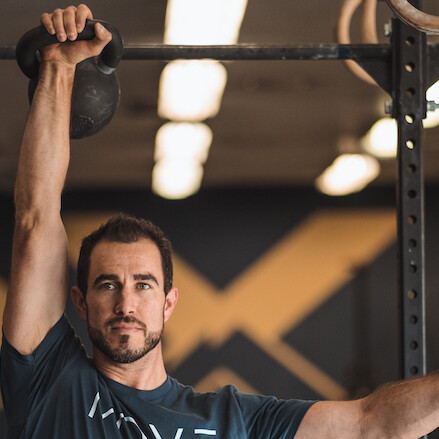
Background:
- Father
- Doctor of Chiropractic
- Owner of Live LOUD
- Personal Trainer & Health Coach
Check Out Some of Our Other Blog Posts and Podcast Episodes
Anthony Gurule 00:00
Hey what’s up guys, welcome back to another episode of the Live LOUD Life podcast. My name is Dr. Antonio, I’m your host of the Live LOUD Life podcast. My wife and I, we co-own Live LOUD Chiropractic and Coaching here in Lafayette, Colorado. We are just outside of Boulder, Colorado in Boulder County. And our mission is to help families. We want to help make families stronger, so that we can build a stronger community. We want to help guide you to the adventurous life that you and your family were meant for. And we do this through chiropractic and coaching. chiropractic, obviously being more of a hands on approach, more of a clinical conversation, clinical diagnostics, but the coaching aspect is really what we believe is, you know, the foundation of what our system methodology, whatever you want to call it is, because a lot of this comes around through just coaching suggestions and recommendations. also, you know, obviously within that comes into clinical prescriptions of certain things to eat or supplements, so on and so forth. But it’s coaching a lifestyle, it’s coaching, it’s coaching a philosophy and a foundation about how to live an active healthy life as an individual, and setting an example of a healthy active life for your family, for your immediate family, for your friends, and more importantly for your community. So stronger families to make a stronger community as a whole would be a win win, right? And that’s what we want to be able to do. we want to be able to help fill in the gaps in the holes that you’re maybe not getting from, from other roles and conditions.
Anthony Gurule 01:43
And today that’s in particular where we’re going to talk about. it’s going to be a little bit more of a shorter episode because this is more of a quote unquote, you know, just discussion around how to lay out a framework and a better understanding of how to work out or what exercises are safe or maybe not safe during pregnancy. This is a very, very common question that we get.
Anthony Gurule 02:12
My wife Nichelle has created a mini course that has some workout ideas, recommendations, and prescriptions than laid out into a workout. She guides and educates other clinicians on how to broach this topic as a chiropractor, how to better serve prenatal patients through chiropractic care, but also exercise recommendations and prescriptions, having recommendations with other personal trainers within the community whether that’s CrossFit whether that’s Orange Theory, chatting with coaches and owners and saying hey, if you have prenatal patients and they’re having these types of symptoms, or this has happened, here’s some better recommendations, not modifications. We call them lateralizations–you’re just you know, you’re doing something something different or something else we you know, we borrow that term from Charlie Weingroff, who’s a physical therapist and strength conditioning coach. But it also and also doulas, right, doulas and midwives and OBs who are directly involved with the prenatal process from nearly conception all the way through, having this conversation. we know that exercise is important during pregnancy,
Anthony Gurule 03:19
There are so many different studies that talk about the benefits of exercising during pregnancy, not only for the mom, but also for baby, which is quite interesting. They’re seeing increased cognitive-what’s the word I’m looking for? Excuse me, their cognitive output as a as an as a child through as they age is actually better from moms that actually worked out during pregnancy.
Anthony Gurule 03:50
Now this is tough, right? How do you define working out or exercise? it’s different for everybody. But we want to, and we encourage that, and yet we’re sympathetic to the different stages of life, aches and pains, so on and so forth, which obviously would limit what you can do from an exercise perspective. So you know, it’s a bit of a gray area on determining what is working out? what is exercise? What are the physical guidelines or recommendations for pregnancy? And without getting into the like, nitty gritty detail of every single thing. And obviously, every potential situation, if you had this versus this, what could happen? we’re not gonna be able to do that. What we just want to lay out is what is what are we trying to accomplish here, and we want to encourage you to stay as physically active as possible.
Anthony Gurule 04:41
And one of the things that constantly comes up is, well, should you add something in that you have not already been doing? Let’s say for instance, someone just through the stages of life with work and kids or whatever that is, they were not able to work out as much before they got pregnant, but now that they’re pregnant, whether they have more time or they understand the importance of exercises during pregnancy, well, would we say, “Well, you haven’t been exercising, so you shouldn’t do too much.” No, that doesn’t, that doesn’t really make sense. Now, we would encourage not to do too much, there’s obviously, you know, a too far swinging the pendulum of the other way. But we wouldn’t say “no, don’t exercise because you weren’t doing something before,” we just have to find those first few stepping stones to help them start to gain some momentum. and help hold their hand, if you will, So that their technique and they feel confident about lifting, or how far they’re walking or whatever that is. And that’s an important topic, because a lot of times people want to add things in, but they weren’t quite ready or weren’t doing them before. And they then assume that they’re not able to do them at all. So you do have to take that in consideration, there is a ton that you can do, and that you can still add, even though you weren’t doing them prior to pregnancy.
Anthony Gurule 05:54
Now on the big questions is, is it safe? you know, outside to contact sports, or different things like that the majority of what you’re going to do is safe for pregnancy, right? Rock climbing, we have pregnant patients that have been rock climbing before, obviously, there’s a certain inherent risk with certain sports or activities. You know, you could fall off riding your bike, you could fall over running, right, so we’re not encouraging any of these by any means. We’re just kind of, you know, setting some suggestions, if you will. And you have to take into consideration.
Anthony Gurule 06:31
Now, there are certain things to consider when you’re talking about like weightlifting, and how heavy and the intensity that you’re doing. And if you’re doing Valsalva movements, which is essentially holding your breath to maintain a more rigid or stiff torso, as you’re seeing changes in blood volume and blood pressure, you know, you do have to take that in consideration. And that is again, of course a conversation with your provider that is managing your, your pregnancy, but we recommend Mama’s weight lift, or do resistance training. During pregnancy, again, we talked about about load management and the intensity and things like that, but you can still lift and do fairly intense things. And it’s a fairly as a you know, as a scale and a wide range during pregnancy and see a ton of benefit from that. Now, are we trying to hit one rep maxes and PRs during pregnancy, I mean, some would argue yes, but I would argue, why, that’s not really an accurate representation of what your strength is anyways. So you know, you do have to to kind of keep manipulating the numbers and the weights and the intensity and the sets and reps in order to do it. But weightlifting and resistance training is safe, and it is effective. Now, outside of that, there’s not a lot of unsafe things to do, again, outside of contact sports, or things that would elicit, you know, potential trauma to you or baby based on impact we’ve had, again, not our recommendations, but some have tried very just easy scheme, because they’re in the winter months, and they wanted to and they felt very confident about not falling. So you know, you have those types of things.
Anthony Gurule 08:16
Overall, again, we’re talking about movement. You need to move, and it’s good to get your heart rate up. And it’s good to breathe hard. So that doesn’t mean just because you’re pregnant, you can’t do HIIT training or circuit training or CrossFit or Orange Theory. But you do have to listen to your body and understand certain signs that would indicate that things might be too much, right? Now those are going to be different for everyone, but a lot of this comes down to you know, lightheadedness, you know, breathing too hard. Certain aches and pains within lower extremity, chest, abdomen, so on and so forth would be obviously like your more extreme ones. If you’re becoming pale or anything like that, I mean, again, these are the same criteria, though, that would be if someone else was working out or training too hard. So it’s realistically the same thing. It’s just that your threshold level for all those most likely have gone down. And depending on what type of an athlete you were before, you’re going to be maybe a little frustrated that you’re not able to do the things you were able to do previously, which makes sense. But if you’re someone who wasn’t exercising before, you’re probably going to be a little bit more hyper aware of that, of just feeling that shortness of breath or that uneasiness. So again, we’re not saying you have to push through that because we’re not trying to set yourself up for a strength and conditioning program to increase your metabolic capacity to increase your strength and conditioning during pregnancy. We’re trying to help you maintain a healthy active pregnancy.
Anthony Gurule 09:54
Now, walking. walking is great. but in general, we encourage you to do something above and beyond walking. Obviously, again, certain things would dictate that you would not be able to do so. And this is again, any exercise. Any exercise that you do during pregnancy needs to be consulted with and work through and have a conversation with the primary physician who is managing your pregnancy, whether that’s your nurse practitioner, your midwife or your OB or obstetrician, right. But we would encourage more than just walking. walking is fantastic, but that’s kind of like your baseline minimum, right? Just like our activities, or recommendation activity guidelines. We want a few days a week of where we’re kind of just doing this steady state getting our steps in, you know, kind of pushing ourselves, we’re huffing and puffing, but still just kind of at that conversational level, but you’re not really getting a lot of benefits outside of that.
Anthony Gurule 10:55
So if you’re just walking, high five. kudos. can you do something more? Can you do some bodyweight squats? Can you do some bodyweight, you know, good mornings? can you do some walking lunges? do you have a suspension training, we’re able to do some bodyweight rows? Do you have some bands that you can do some rows with? You know, there’s a lot that you can do that allows you to get a little bit more out of that. Now, again, this all comes back down to preferences of exercises that you like to do, because that’s gonna allow you to maintain the most consistency, but then also the intensity that you like to do. And we do encourage having an open mind and at least being willing to try some high intensity things that allow you to still get your heart rate up a little bit. And it’s okay to lift more than five or 10 pounds. And not saying that that is a bad thing. There’s programs out there where it’s all directed around that where it’s lighter weight, high rep, but I just don’t want individuals and mamas to feel like they’re not able to do more and or being ashamed because other people are just saying they should back off because they’re pregnant. “why would you need a lift that much?” It fits within your strength, and your comfort, and your wheelhouse, that is totally fine.
Anthony Gurule 12:05
Again, you if you’ve been doing that enough, you understand the risk reward ratio and having a conversation with your practitioner has driven us to kind of help navigate and guide as you start to get further through pregnancies, what things maybe we need to change or manipulate. But that’s totally fine. Now outside of that, the question around safe also comes up around core exercises. diastasis recti, pelvic floor strength, so on and so forth, we want to enhance the capability of understanding how to control tension within your abdominal wall and your pelvic floor through pregnancy, because the pressure is increasing due to baby taking up more space. But we’re not we’re not necessarily we’re not gaining more strength, right.
Anthony Gurule 12:45
And so what a lot of people assume it’s when we’ve seen this, is “I don’t want diastasis. So I’m doing more core work to prevent diastasis from happening.” diastasis recti will happen in 100% of moms, it’s estimated at the week 35 Everyone will have some form of it. Now it is technically not a quote unquote diagnosis, though, until 12 weeks postpartum, because it is a normal thing that everyone will get. So you can’t diagnose someone with something that everyone will get–doesn’t make sense, right? So after that, though, if you still have weakness or spacing issues, then we can have a you know, a stronger conversation about putting a diagnosis on that.
Anthony Gurule 13:26
But what we’re trying to enhance and help is what exercises are quote unquote, not safe versus unsafe, but adding too much pressure or tension into the abdominal wall or the pelvic floor and creating more laxity. again, as that pressure for as baby’s growing starts to put more pressure on the pelvic floor and the abdominal wall. If you’re doing more things that increases the pressure within the within the abdominal cavity that’s going to push on that separation even more and/or push on that pelvic floor even more, creating potential incontinence or prolapse issues and/or more bulging and doming within the abdominal wall stretching out that separation or that gap even further, potentially making the recovery process more challenging or slightly longer. I’m not saying that it will but potentially, so we do have to take that in consideration. So we go through activation exercise of the pelvic floor, of the abdominal wall so that you better understand how to control those pressure increases while you’re lifting or exercising so that you simply can stay at a management level.
Anthony Gurule 14:28
And that in turn, helps you get through pregnancy of understanding how to lift up your older kiddo, having to lift up dog food or anything like that. It’s just managing and controlling pressure. So there’s really not anything that I would say that safe or unsafe. Now, things that we would advise against for core exercises is sit ups or crunches. You know a lot of those things that create like hanging knee raises and different things like that during pregnancy. A lot of those things that create a lot of intra abdominal pressure and tension. and especially during a flex position, that tends to put a lot more pressure on the abdominal wall, the separation where diastasis will occur as well as the pelvic floor.
Anthony Gurule 15:09
So, you know, while we never say never, there’s definitely a category of things that we definitely urge against because the risk/reward benefit and again, risk not being “injured,” But risk of potentially putting more pressure and making the recovery process on the other side harder, is not is not something that we find to be as advantageous. But you can still get the benefits of quote unquote, core exercises through full body movements such as goblet squats, such as deadlifts, you know, depending on the phase that you’re in, push ups, which are, you know, a dynamic plank. or being able to do a TRX row, which is a reverse plank as you’re just lifting yourself up. three point rows where you’re on, you know, two hands or doing like a row on a bench, where you’re in a tabletop position that’s adding anti rotation exercises. So there’s a ton that you can do that still highlights and isolates, the core isolates, sorry. that highlights and will emphasize core activation, but through a full body compound movement. And what’s great about that is during pregnancy, depending on your energy levels, it’s hard to do all the little isolated accessory and all these separate exercises as it is. So it’s kind of nice being able to combine everything, so you get more bang for your buck, especially if you’re a parent and you’re on and you’re on baby number two or three, right?
Anthony Gurule 16:31
So what exercises are safe for pregnant women to do? All are. reduce or eliminate for sure contact activities, different things like that. the increased risk activities of you know, trauma and things like that. Outside of that you’re managing pressure, I would definitely encourage reducing anything that’s heavy lifting, that’s, that’s requiring you to do Valsalva moves, you’re having to hold your breath for an extended period of time. that changes blood pressure, so on and so forth. But outside of that, Pregnancy is a completely safe time to do all exercises. we definitely as we highlighted, urge and encourage, you know, certain things over other ones just for you know, added bang for your buck or full body movements, so on and so forth. And that, but outside of that you are free to do what you want.
Anthony Gurule 17:19
If you want guidance, though, you know, there are there are trainers out there that work specifically with prenatal patients. we would love to be able to have that conversation with you if that’s something you want to bounce back or navigate. Because we do want to encourage as much as we can. A very, very active pregnancy through exercise working out or however you want to describe that. So if you found this beneficial, please like share, subscribe. if you’re pregnant, I hope you can utilize this and take some of the information for you and yourself. If you have anyone else you know… a relative a family member, a friend who is pregnant and they’re unsure they’ve been you know asking this question what things I don’t know what things I can do. I don’t know if it’s safe for baby share this video with them. We’d love to be able to provide a better frame of reference and or context to be able to ask better questions so that they can find the workout program or the movements that work best for them during their pregnancy. Until next time guys live loud .if you’re currently pregnant, Congratulations, and we look forward to helping and serving in the future.
–
Your Home Gym Top 4 Pieces of Equipment EP|41
Live LOUD Life Podcast
Lafayette Colorado
Episode 41
EP|41 Your Home Gym Top 4 Pieces of Equipment
With Dr. Antonio Gurule
Notes:
Pandemic aside these are my Top 4 Pieces of Equipment need for your home gym.
Everyone should have a home gym because you never know when a pandemic will hit and you will need to be working out from home.
But in all honestly keep it simple and effective!
Connect With Antonio and the Live LOUD team:
Subscribe to my YouTube channel here: https://www.youtube.com/c/LiveLoud
Visit the website: http://www.lifeloudlife.com
Like the Facebook page: https://www.facebook.com/liveloudchiropractic/
Follow on Instagram: https://www.instagram.com/live.loud.life/
Guiding your to the adventurous life you were made for!
If you dig this give it a like ❤️, if you’re loving it let me hear you with a comment 🗣👂, and if you know it will help someone or anyone out please share 👥📲
About Dr. Antonio Gurule

Background:
- Father
- Doctor of Chiropractic
- Owner of Live LOUD
- Personal Trainer & Health Coach
Check Out Some of Our Other Blog Posts and Podcast Episodes
Your Home Gym Top 4 Pieces of Equipment EP|41
Fitness,Podcast,Health & Wellness
January 26, 2022
0 Comments29 Minutes
Anthony Gurule 00:00
Hey what’s up guys, welcome back to another episode of the Live LOUD Life podcast. My name is Dr. Antonio, I’m your host of the Live LOUD Life podcast. My wife and I, we co-own Live LOUD Chiropractic and Coaching here in Lafayette, Colorado. We are just outside of Boulder, Colorado in Boulder County. And our mission is to help families. We want to help make families stronger, so that we can build a stronger community. We want to help guide you to the adventurous life that you and your family were meant for. And we do this through chiropractic and coaching. chiropractic, obviously being more of a hands on approach, more of a clinical conversation, clinical diagnostics, but the coaching aspect is really what we believe is, you know, the foundation of what our system methodology, whatever you want to call it is, because a lot of this comes around through just coaching suggestions and recommendations. also, you know, obviously within that comes into clinical prescriptions of certain things to eat or supplements, so on and so forth. But it’s coaching a lifestyle, it’s coaching, it’s coaching a philosophy and a foundation about how to live an active healthy life as an individual, and setting an example of a healthy active life for your family, for your immediate family, for your friends, and more importantly for your community. So stronger families to make a stronger community as a whole would be a win win, right? And that’s what we want to be able to do. we want to be able to help fill in the gaps in the holes that you’re maybe not getting from, from other roles and conditions.
Anthony Gurule 01:43
And today that’s in particular where we’re going to talk about. it’s going to be a little bit more of a shorter episode because this is more of a quote unquote, you know, just discussion around how to lay out a framework and a better understanding of how to work out or what exercises are safe or maybe not safe during pregnancy. This is a very, very common question that we get.
Anthony Gurule 02:12
My wife Nichelle has created a mini course that has some workout ideas, recommendations, and prescriptions than laid out into a workout. She guides and educates other clinicians on how to broach this topic as a chiropractor, how to better serve prenatal patients through chiropractic care, but also exercise recommendations and prescriptions, having recommendations with other personal trainers within the community whether that’s CrossFit whether that’s Orange Theory, chatting with coaches and owners and saying hey, if you have prenatal patients and they’re having these types of symptoms, or this has happened, here’s some better recommendations, not modifications. We call them lateralizations–you’re just you know, you’re doing something something different or something else we you know, we borrow that term from Charlie Weingroff, who’s a physical therapist and strength conditioning coach. But it also and also doulas, right, doulas and midwives and OBs who are directly involved with the prenatal process from nearly conception all the way through, having this conversation. we know that exercise is important during pregnancy,
Anthony Gurule 03:19
There are so many different studies that talk about the benefits of exercising during pregnancy, not only for the mom, but also for baby, which is quite interesting. They’re seeing increased cognitive-what’s the word I’m looking for? Excuse me, their cognitive output as a as an as a child through as they age is actually better from moms that actually worked out during pregnancy.
Anthony Gurule 03:50
Now this is tough, right? How do you define working out or exercise? it’s different for everybody. But we want to, and we encourage that, and yet we’re sympathetic to the different stages of life, aches and pains, so on and so forth, which obviously would limit what you can do from an exercise perspective. So you know, it’s a bit of a gray area on determining what is working out? what is exercise? What are the physical guidelines or recommendations for pregnancy? And without getting into the like, nitty gritty detail of every single thing. And obviously, every potential situation, if you had this versus this, what could happen? we’re not gonna be able to do that. What we just want to lay out is what is what are we trying to accomplish here, and we want to encourage you to stay as physically active as possible.
Anthony Gurule 04:41
And one of the things that constantly comes up is, well, should you add something in that you have not already been doing? Let’s say for instance, someone just through the stages of life with work and kids or whatever that is, they were not able to work out as much before they got pregnant, but now that they’re pregnant, whether they have more time or they understand the importance of exercises during pregnancy, well, would we say, “Well, you haven’t been exercising, so you shouldn’t do too much.” No, that doesn’t, that doesn’t really make sense. Now, we would encourage not to do too much, there’s obviously, you know, a too far swinging the pendulum of the other way. But we wouldn’t say “no, don’t exercise because you weren’t doing something before,” we just have to find those first few stepping stones to help them start to gain some momentum. and help hold their hand, if you will, So that their technique and they feel confident about lifting, or how far they’re walking or whatever that is. And that’s an important topic, because a lot of times people want to add things in, but they weren’t quite ready or weren’t doing them before. And they then assume that they’re not able to do them at all. So you do have to take that in consideration, there is a ton that you can do, and that you can still add, even though you weren’t doing them prior to pregnancy.
Anthony Gurule 05:54
Now on the big questions is, is it safe? you know, outside to contact sports, or different things like that the majority of what you’re going to do is safe for pregnancy, right? Rock climbing, we have pregnant patients that have been rock climbing before, obviously, there’s a certain inherent risk with certain sports or activities. You know, you could fall off riding your bike, you could fall over running, right, so we’re not encouraging any of these by any means. We’re just kind of, you know, setting some suggestions, if you will. And you have to take into consideration.
Anthony Gurule 06:31
Now, there are certain things to consider when you’re talking about like weightlifting, and how heavy and the intensity that you’re doing. And if you’re doing Valsalva movements, which is essentially holding your breath to maintain a more rigid or stiff torso, as you’re seeing changes in blood volume and blood pressure, you know, you do have to take that in consideration. And that is again, of course a conversation with your provider that is managing your, your pregnancy, but we recommend Mama’s weight lift, or do resistance training. During pregnancy, again, we talked about about load management and the intensity and things like that, but you can still lift and do fairly intense things. And it’s a fairly as a you know, as a scale and a wide range during pregnancy and see a ton of benefit from that. Now, are we trying to hit one rep maxes and PRs during pregnancy, I mean, some would argue yes, but I would argue, why, that’s not really an accurate representation of what your strength is anyways. So you know, you do have to to kind of keep manipulating the numbers and the weights and the intensity and the sets and reps in order to do it. But weightlifting and resistance training is safe, and it is effective. Now, outside of that, there’s not a lot of unsafe things to do, again, outside of contact sports, or things that would elicit, you know, potential trauma to you or baby based on impact we’ve had, again, not our recommendations, but some have tried very just easy scheme, because they’re in the winter months, and they wanted to and they felt very confident about not falling. So you know, you have those types of things.
Anthony Gurule 08:16
Overall, again, we’re talking about movement. You need to move, and it’s good to get your heart rate up. And it’s good to breathe hard. So that doesn’t mean just because you’re pregnant, you can’t do HIIT training or circuit training or CrossFit or Orange Theory. But you do have to listen to your body and understand certain signs that would indicate that things might be too much, right? Now those are going to be different for everyone, but a lot of this comes down to you know, lightheadedness, you know, breathing too hard. Certain aches and pains within lower extremity, chest, abdomen, so on and so forth would be obviously like your more extreme ones. If you’re becoming pale or anything like that, I mean, again, these are the same criteria, though, that would be if someone else was working out or training too hard. So it’s realistically the same thing. It’s just that your threshold level for all those most likely have gone down. And depending on what type of an athlete you were before, you’re going to be maybe a little frustrated that you’re not able to do the things you were able to do previously, which makes sense. But if you’re someone who wasn’t exercising before, you’re probably going to be a little bit more hyper aware of that, of just feeling that shortness of breath or that uneasiness. So again, we’re not saying you have to push through that because we’re not trying to set yourself up for a strength and conditioning program to increase your metabolic capacity to increase your strength and conditioning during pregnancy. We’re trying to help you maintain a healthy active pregnancy.
Anthony Gurule 09:54
Now, walking. walking is great. but in general, we encourage you to do something above and beyond walking. Obviously, again, certain things would dictate that you would not be able to do so. And this is again, any exercise. Any exercise that you do during pregnancy needs to be consulted with and work through and have a conversation with the primary physician who is managing your pregnancy, whether that’s your nurse practitioner, your midwife or your OB or obstetrician, right. But we would encourage more than just walking. walking is fantastic, but that’s kind of like your baseline minimum, right? Just like our activities, or recommendation activity guidelines. We want a few days a week of where we’re kind of just doing this steady state getting our steps in, you know, kind of pushing ourselves, we’re huffing and puffing, but still just kind of at that conversational level, but you’re not really getting a lot of benefits outside of that.
Anthony Gurule 10:55
So if you’re just walking, high five. kudos. can you do something more? Can you do some bodyweight squats? Can you do some bodyweight, you know, good mornings? can you do some walking lunges? do you have a suspension training, we’re able to do some bodyweight rows? Do you have some bands that you can do some rows with? You know, there’s a lot that you can do that allows you to get a little bit more out of that. Now, again, this all comes back down to preferences of exercises that you like to do, because that’s gonna allow you to maintain the most consistency, but then also the intensity that you like to do. And we do encourage having an open mind and at least being willing to try some high intensity things that allow you to still get your heart rate up a little bit. And it’s okay to lift more than five or 10 pounds. And not saying that that is a bad thing. There’s programs out there where it’s all directed around that where it’s lighter weight, high rep, but I just don’t want individuals and mamas to feel like they’re not able to do more and or being ashamed because other people are just saying they should back off because they’re pregnant. “why would you need a lift that much?” It fits within your strength, and your comfort, and your wheelhouse, that is totally fine.
Anthony Gurule 12:05
Again, you if you’ve been doing that enough, you understand the risk reward ratio and having a conversation with your practitioner has driven us to kind of help navigate and guide as you start to get further through pregnancies, what things maybe we need to change or manipulate. But that’s totally fine. Now outside of that, the question around safe also comes up around core exercises. diastasis recti, pelvic floor strength, so on and so forth, we want to enhance the capability of understanding how to control tension within your abdominal wall and your pelvic floor through pregnancy, because the pressure is increasing due to baby taking up more space. But we’re not we’re not necessarily we’re not gaining more strength, right.
Anthony Gurule 12:45
And so what a lot of people assume it’s when we’ve seen this, is “I don’t want diastasis. So I’m doing more core work to prevent diastasis from happening.” diastasis recti will happen in 100% of moms, it’s estimated at the week 35 Everyone will have some form of it. Now it is technically not a quote unquote diagnosis, though, until 12 weeks postpartum, because it is a normal thing that everyone will get. So you can’t diagnose someone with something that everyone will get–doesn’t make sense, right? So after that, though, if you still have weakness or spacing issues, then we can have a you know, a stronger conversation about putting a diagnosis on that.
Anthony Gurule 13:26
But what we’re trying to enhance and help is what exercises are quote unquote, not safe versus unsafe, but adding too much pressure or tension into the abdominal wall or the pelvic floor and creating more laxity. again, as that pressure for as baby’s growing starts to put more pressure on the pelvic floor and the abdominal wall. If you’re doing more things that increases the pressure within the within the abdominal cavity that’s going to push on that separation even more and/or push on that pelvic floor even more, creating potential incontinence or prolapse issues and/or more bulging and doming within the abdominal wall stretching out that separation or that gap even further, potentially making the recovery process more challenging or slightly longer. I’m not saying that it will but potentially, so we do have to take that in consideration. So we go through activation exercise of the pelvic floor, of the abdominal wall so that you better understand how to control those pressure increases while you’re lifting or exercising so that you simply can stay at a management level.
Anthony Gurule 14:28
And that in turn, helps you get through pregnancy of understanding how to lift up your older kiddo, having to lift up dog food or anything like that. It’s just managing and controlling pressure. So there’s really not anything that I would say that safe or unsafe. Now, things that we would advise against for core exercises is sit ups or crunches. You know a lot of those things that create like hanging knee raises and different things like that during pregnancy. A lot of those things that create a lot of intra abdominal pressure and tension. and especially during a flex position, that tends to put a lot more pressure on the abdominal wall, the separation where diastasis will occur as well as the pelvic floor.
Anthony Gurule 15:09
So, you know, while we never say never, there’s definitely a category of things that we definitely urge against because the risk/reward benefit and again, risk not being “injured,” But risk of potentially putting more pressure and making the recovery process on the other side harder, is not is not something that we find to be as advantageous. But you can still get the benefits of quote unquote, core exercises through full body movements such as goblet squats, such as deadlifts, you know, depending on the phase that you’re in, push ups, which are, you know, a dynamic plank. or being able to do a TRX row, which is a reverse plank as you’re just lifting yourself up. three point rows where you’re on, you know, two hands or doing like a row on a bench, where you’re in a tabletop position that’s adding anti rotation exercises. So there’s a ton that you can do that still highlights and isolates, the core isolates, sorry. that highlights and will emphasize core activation, but through a full body compound movement. And what’s great about that is during pregnancy, depending on your energy levels, it’s hard to do all the little isolated accessory and all these separate exercises as it is. So it’s kind of nice being able to combine everything, so you get more bang for your buck, especially if you’re a parent and you’re on and you’re on baby number two or three, right?
Anthony Gurule 16:31
So what exercises are safe for pregnant women to do? All are. reduce or eliminate for sure contact activities, different things like that. the increased risk activities of you know, trauma and things like that. Outside of that you’re managing pressure, I would definitely encourage reducing anything that’s heavy lifting, that’s, that’s requiring you to do Valsalva moves, you’re having to hold your breath for an extended period of time. that changes blood pressure, so on and so forth. But outside of that, Pregnancy is a completely safe time to do all exercises. we definitely as we highlighted, urge and encourage, you know, certain things over other ones just for you know, added bang for your buck or full body movements, so on and so forth. And that, but outside of that you are free to do what you want.
Anthony Gurule 17:19
If you want guidance, though, you know, there are there are trainers out there that work specifically with prenatal patients. we would love to be able to have that conversation with you if that’s something you want to bounce back or navigate. Because we do want to encourage as much as we can. A very, very active pregnancy through exercise working out or however you want to describe that. So if you found this beneficial, please like share, subscribe. if you’re pregnant, I hope you can utilize this and take some of the information for you and yourself. If you have anyone else you know… a relative a family member, a friend who is pregnant and they’re unsure they’ve been you know asking this question what things I don’t know what things I can do. I don’t know if it’s safe for baby share this video with them. We’d love to be able to provide a better frame of reference and or context to be able to ask better questions so that they can find the workout program or the movements that work best for them during their pregnancy. Until next time guys live loud .if you’re currently pregnant, Congratulations, and we look forward to helping and serving in the future.
–
Fix Your Pain & Power With A Proper Bike Fitting EP| 38
Live LOUD Life Podcast
Lafayette Colorado
Episode 38
EP| 38 Fix Your Pain & Power With A Proper Bike Fitting
With Dr. Antonio Gurule
Live Loud Life Podcast EP|37 Fix Your Pain & Power with a Proper Bike Fitting Description:
Dr. Antonio Gurule goes into detail with some of the factors that come along with a solid bike fitting with specialist and physical therapist Jeff Fulford.
As a physical therapist Jeff has a keen eye for movement and maximize your potential on the bike with the right tweaks and fixes.
It comes down to a game of angle. And when altered and played right you will experience less pain when riding and even be able to increase your power output!
If you are local to the Boulder and Weld County area in Colorado be sure to look up Jeff and email him Here:
Connect With Jeff:
About Dr. Antonio Gurule

Background:
- Father
- Doctor of Chiropractic
- Owner of Live LOUD
- Personal Trainer & Health Coach
Check Out Some of Our Other Blog Posts and Podcast Episodes
Anthony Gurule 00:00
Hey what’s up guys, welcome back to another episode of the Live LOUD Life podcast. My name is Dr. Antonio, I’m your host of the Live LOUD Life podcast. My wife and I, we co-own Live LOUD Chiropractic and Coaching here in Lafayette, Colorado. We are just outside of Boulder, Colorado in Boulder County. And our mission is to help families. We want to help make families stronger, so that we can build a stronger community. We want to help guide you to the adventurous life that you and your family were meant for. And we do this through chiropractic and coaching. chiropractic, obviously being more of a hands on approach, more of a clinical conversation, clinical diagnostics, but the coaching aspect is really what we believe is, you know, the foundation of what our system methodology, whatever you want to call it is, because a lot of this comes around through just coaching suggestions and recommendations. also, you know, obviously within that comes into clinical prescriptions of certain things to eat or supplements, so on and so forth. But it’s coaching a lifestyle, it’s coaching, it’s coaching a philosophy and a foundation about how to live an active healthy life as an individual, and setting an example of a healthy active life for your family, for your immediate family, for your friends, and more importantly for your community. So stronger families to make a stronger community as a whole would be a win win, right? And that’s what we want to be able to do. we want to be able to help fill in the gaps in the holes that you’re maybe not getting from, from other roles and conditions.
Anthony Gurule 01:43
And today that’s in particular where we’re going to talk about. it’s going to be a little bit more of a shorter episode because this is more of a quote unquote, you know, just discussion around how to lay out a framework and a better understanding of how to work out or what exercises are safe or maybe not safe during pregnancy. This is a very, very common question that we get.
Anthony Gurule 02:12
My wife Nichelle has created a mini course that has some workout ideas, recommendations, and prescriptions than laid out into a workout. She guides and educates other clinicians on how to broach this topic as a chiropractor, how to better serve prenatal patients through chiropractic care, but also exercise recommendations and prescriptions, having recommendations with other personal trainers within the community whether that’s CrossFit whether that’s Orange Theory, chatting with coaches and owners and saying hey, if you have prenatal patients and they’re having these types of symptoms, or this has happened, here’s some better recommendations, not modifications. We call them lateralizations–you’re just you know, you’re doing something something different or something else we you know, we borrow that term from Charlie Weingroff, who’s a physical therapist and strength conditioning coach. But it also and also doulas, right, doulas and midwives and OBs who are directly involved with the prenatal process from nearly conception all the way through, having this conversation. we know that exercise is important during pregnancy,
Anthony Gurule 03:19
There are so many different studies that talk about the benefits of exercising during pregnancy, not only for the mom, but also for baby, which is quite interesting. They’re seeing increased cognitive-what’s the word I’m looking for? Excuse me, their cognitive output as a as an as a child through as they age is actually better from moms that actually worked out during pregnancy.
Anthony Gurule 03:50
Now this is tough, right? How do you define working out or exercise? it’s different for everybody. But we want to, and we encourage that, and yet we’re sympathetic to the different stages of life, aches and pains, so on and so forth, which obviously would limit what you can do from an exercise perspective. So you know, it’s a bit of a gray area on determining what is working out? what is exercise? What are the physical guidelines or recommendations for pregnancy? And without getting into the like, nitty gritty detail of every single thing. And obviously, every potential situation, if you had this versus this, what could happen? we’re not gonna be able to do that. What we just want to lay out is what is what are we trying to accomplish here, and we want to encourage you to stay as physically active as possible.
Anthony Gurule 04:41
And one of the things that constantly comes up is, well, should you add something in that you have not already been doing? Let’s say for instance, someone just through the stages of life with work and kids or whatever that is, they were not able to work out as much before they got pregnant, but now that they’re pregnant, whether they have more time or they understand the importance of exercises during pregnancy, well, would we say, “Well, you haven’t been exercising, so you shouldn’t do too much.” No, that doesn’t, that doesn’t really make sense. Now, we would encourage not to do too much, there’s obviously, you know, a too far swinging the pendulum of the other way. But we wouldn’t say “no, don’t exercise because you weren’t doing something before,” we just have to find those first few stepping stones to help them start to gain some momentum. and help hold their hand, if you will, So that their technique and they feel confident about lifting, or how far they’re walking or whatever that is. And that’s an important topic, because a lot of times people want to add things in, but they weren’t quite ready or weren’t doing them before. And they then assume that they’re not able to do them at all. So you do have to take that in consideration, there is a ton that you can do, and that you can still add, even though you weren’t doing them prior to pregnancy.
Anthony Gurule 05:54
Now on the big questions is, is it safe? you know, outside to contact sports, or different things like that the majority of what you’re going to do is safe for pregnancy, right? Rock climbing, we have pregnant patients that have been rock climbing before, obviously, there’s a certain inherent risk with certain sports or activities. You know, you could fall off riding your bike, you could fall over running, right, so we’re not encouraging any of these by any means. We’re just kind of, you know, setting some suggestions, if you will. And you have to take into consideration.
Anthony Gurule 06:31
Now, there are certain things to consider when you’re talking about like weightlifting, and how heavy and the intensity that you’re doing. And if you’re doing Valsalva movements, which is essentially holding your breath to maintain a more rigid or stiff torso, as you’re seeing changes in blood volume and blood pressure, you know, you do have to take that in consideration. And that is again, of course a conversation with your provider that is managing your, your pregnancy, but we recommend Mama’s weight lift, or do resistance training. During pregnancy, again, we talked about about load management and the intensity and things like that, but you can still lift and do fairly intense things. And it’s a fairly as a you know, as a scale and a wide range during pregnancy and see a ton of benefit from that. Now, are we trying to hit one rep maxes and PRs during pregnancy, I mean, some would argue yes, but I would argue, why, that’s not really an accurate representation of what your strength is anyways. So you know, you do have to to kind of keep manipulating the numbers and the weights and the intensity and the sets and reps in order to do it. But weightlifting and resistance training is safe, and it is effective. Now, outside of that, there’s not a lot of unsafe things to do, again, outside of contact sports, or things that would elicit, you know, potential trauma to you or baby based on impact we’ve had, again, not our recommendations, but some have tried very just easy scheme, because they’re in the winter months, and they wanted to and they felt very confident about not falling. So you know, you have those types of things.
Anthony Gurule 08:16
Overall, again, we’re talking about movement. You need to move, and it’s good to get your heart rate up. And it’s good to breathe hard. So that doesn’t mean just because you’re pregnant, you can’t do HIIT training or circuit training or CrossFit or Orange Theory. But you do have to listen to your body and understand certain signs that would indicate that things might be too much, right? Now those are going to be different for everyone, but a lot of this comes down to you know, lightheadedness, you know, breathing too hard. Certain aches and pains within lower extremity, chest, abdomen, so on and so forth would be obviously like your more extreme ones. If you’re becoming pale or anything like that, I mean, again, these are the same criteria, though, that would be if someone else was working out or training too hard. So it’s realistically the same thing. It’s just that your threshold level for all those most likely have gone down. And depending on what type of an athlete you were before, you’re going to be maybe a little frustrated that you’re not able to do the things you were able to do previously, which makes sense. But if you’re someone who wasn’t exercising before, you’re probably going to be a little bit more hyper aware of that, of just feeling that shortness of breath or that uneasiness. So again, we’re not saying you have to push through that because we’re not trying to set yourself up for a strength and conditioning program to increase your metabolic capacity to increase your strength and conditioning during pregnancy. We’re trying to help you maintain a healthy active pregnancy.
Anthony Gurule 09:54
Now, walking. walking is great. but in general, we encourage you to do something above and beyond walking. Obviously, again, certain things would dictate that you would not be able to do so. And this is again, any exercise. Any exercise that you do during pregnancy needs to be consulted with and work through and have a conversation with the primary physician who is managing your pregnancy, whether that’s your nurse practitioner, your midwife or your OB or obstetrician, right. But we would encourage more than just walking. walking is fantastic, but that’s kind of like your baseline minimum, right? Just like our activities, or recommendation activity guidelines. We want a few days a week of where we’re kind of just doing this steady state getting our steps in, you know, kind of pushing ourselves, we’re huffing and puffing, but still just kind of at that conversational level, but you’re not really getting a lot of benefits outside of that.
Anthony Gurule 10:55
So if you’re just walking, high five. kudos. can you do something more? Can you do some bodyweight squats? Can you do some bodyweight, you know, good mornings? can you do some walking lunges? do you have a suspension training, we’re able to do some bodyweight rows? Do you have some bands that you can do some rows with? You know, there’s a lot that you can do that allows you to get a little bit more out of that. Now, again, this all comes back down to preferences of exercises that you like to do, because that’s gonna allow you to maintain the most consistency, but then also the intensity that you like to do. And we do encourage having an open mind and at least being willing to try some high intensity things that allow you to still get your heart rate up a little bit. And it’s okay to lift more than five or 10 pounds. And not saying that that is a bad thing. There’s programs out there where it’s all directed around that where it’s lighter weight, high rep, but I just don’t want individuals and mamas to feel like they’re not able to do more and or being ashamed because other people are just saying they should back off because they’re pregnant. “why would you need a lift that much?” It fits within your strength, and your comfort, and your wheelhouse, that is totally fine.
Anthony Gurule 12:05
Again, you if you’ve been doing that enough, you understand the risk reward ratio and having a conversation with your practitioner has driven us to kind of help navigate and guide as you start to get further through pregnancies, what things maybe we need to change or manipulate. But that’s totally fine. Now outside of that, the question around safe also comes up around core exercises. diastasis recti, pelvic floor strength, so on and so forth, we want to enhance the capability of understanding how to control tension within your abdominal wall and your pelvic floor through pregnancy, because the pressure is increasing due to baby taking up more space. But we’re not we’re not necessarily we’re not gaining more strength, right.
Anthony Gurule 12:45
And so what a lot of people assume it’s when we’ve seen this, is “I don’t want diastasis. So I’m doing more core work to prevent diastasis from happening.” diastasis recti will happen in 100% of moms, it’s estimated at the week 35 Everyone will have some form of it. Now it is technically not a quote unquote diagnosis, though, until 12 weeks postpartum, because it is a normal thing that everyone will get. So you can’t diagnose someone with something that everyone will get–doesn’t make sense, right? So after that, though, if you still have weakness or spacing issues, then we can have a you know, a stronger conversation about putting a diagnosis on that.
Anthony Gurule 13:26
But what we’re trying to enhance and help is what exercises are quote unquote, not safe versus unsafe, but adding too much pressure or tension into the abdominal wall or the pelvic floor and creating more laxity. again, as that pressure for as baby’s growing starts to put more pressure on the pelvic floor and the abdominal wall. If you’re doing more things that increases the pressure within the within the abdominal cavity that’s going to push on that separation even more and/or push on that pelvic floor even more, creating potential incontinence or prolapse issues and/or more bulging and doming within the abdominal wall stretching out that separation or that gap even further, potentially making the recovery process more challenging or slightly longer. I’m not saying that it will but potentially, so we do have to take that in consideration. So we go through activation exercise of the pelvic floor, of the abdominal wall so that you better understand how to control those pressure increases while you’re lifting or exercising so that you simply can stay at a management level.
Anthony Gurule 14:28
And that in turn, helps you get through pregnancy of understanding how to lift up your older kiddo, having to lift up dog food or anything like that. It’s just managing and controlling pressure. So there’s really not anything that I would say that safe or unsafe. Now, things that we would advise against for core exercises is sit ups or crunches. You know a lot of those things that create like hanging knee raises and different things like that during pregnancy. A lot of those things that create a lot of intra abdominal pressure and tension. and especially during a flex position, that tends to put a lot more pressure on the abdominal wall, the separation where diastasis will occur as well as the pelvic floor.
Anthony Gurule 15:09
So, you know, while we never say never, there’s definitely a category of things that we definitely urge against because the risk/reward benefit and again, risk not being “injured,” But risk of potentially putting more pressure and making the recovery process on the other side harder, is not is not something that we find to be as advantageous. But you can still get the benefits of quote unquote, core exercises through full body movements such as goblet squats, such as deadlifts, you know, depending on the phase that you’re in, push ups, which are, you know, a dynamic plank. or being able to do a TRX row, which is a reverse plank as you’re just lifting yourself up. three point rows where you’re on, you know, two hands or doing like a row on a bench, where you’re in a tabletop position that’s adding anti rotation exercises. So there’s a ton that you can do that still highlights and isolates, the core isolates, sorry. that highlights and will emphasize core activation, but through a full body compound movement. And what’s great about that is during pregnancy, depending on your energy levels, it’s hard to do all the little isolated accessory and all these separate exercises as it is. So it’s kind of nice being able to combine everything, so you get more bang for your buck, especially if you’re a parent and you’re on and you’re on baby number two or three, right?
Anthony Gurule 16:31
So what exercises are safe for pregnant women to do? All are. reduce or eliminate for sure contact activities, different things like that. the increased risk activities of you know, trauma and things like that. Outside of that you’re managing pressure, I would definitely encourage reducing anything that’s heavy lifting, that’s, that’s requiring you to do Valsalva moves, you’re having to hold your breath for an extended period of time. that changes blood pressure, so on and so forth. But outside of that, Pregnancy is a completely safe time to do all exercises. we definitely as we highlighted, urge and encourage, you know, certain things over other ones just for you know, added bang for your buck or full body movements, so on and so forth. And that, but outside of that you are free to do what you want.
Anthony Gurule 17:19
If you want guidance, though, you know, there are there are trainers out there that work specifically with prenatal patients. we would love to be able to have that conversation with you if that’s something you want to bounce back or navigate. Because we do want to encourage as much as we can. A very, very active pregnancy through exercise working out or however you want to describe that. So if you found this beneficial, please like share, subscribe. if you’re pregnant, I hope you can utilize this and take some of the information for you and yourself. If you have anyone else you know… a relative a family member, a friend who is pregnant and they’re unsure they’ve been you know asking this question what things I don’t know what things I can do. I don’t know if it’s safe for baby share this video with them. We’d love to be able to provide a better frame of reference and or context to be able to ask better questions so that they can find the workout program or the movements that work best for them during their pregnancy. Until next time guys live loud .if you’re currently pregnant, Congratulations, and we look forward to helping and serving in the future.
–
Spine Specialist Weighs In On A Healthy Body & Life With Dr. Patrick Curry EP|36
Live LOUD Life Podcast
Lafayette Colorado
Episode 36
EP|36 Spine Specialist Weighs In On A Healthy Body & Life With Dr. Patrick Curry
With Dr. Antonio Gurule
Hello!
Be sure to subscribe to the show, share it with your friends, and please give us a review and comment!
Enjoy The Show!
NOTES:
Dr. Patrick Curry : Boulder Centre of Orthopedics and Spine
Dr. Curry’s story:
-Age 13 found out he had scoliosis
-Age 15 opted to slow the curve growth of the spine with stabilization surgery
-Rehabbed well and return to high school sports and athletics
How to maintain a healthy body and spine?
-Keep a strong low back and core (different for everyone)
-Healthy lifestyle
-Being active and being conscious about how you are moving
What are some of the recommendations for people that do not have emergent back pain?
-Understanding what everything is showing, whether that is an MRI, and orthopedic test, or what the doctor may say
Degeneration of the spine is like wrinkles on the skin
Keep in mind degeneration does not happen over time, so if you have pain one day and not the other it is very unlikely that spine degeneration is the cause of your pain
What are some indications of when people should start to seek help?
-Arm or leg pain
-Motor weakness
-Rapid unwanted weight loss
-If you don’t use it you lose it.
Be active, start somewhere, Live Loud.
About Dr. Antonio Gurule

Background:
- Father
- Doctor of Chiropractic
- Owner of Live LOUD
- Personal Trainer & Health Coach
Check Out Some of Our Other Blog Posts and Podcast Episodes
Anthony Gurule 00:00
Hey what’s up guys, welcome back to another episode of the Live LOUD Life podcast. My name is Dr. Antonio, I’m your host of the Live LOUD Life podcast. My wife and I, we co-own Live LOUD Chiropractic and Coaching here in Lafayette, Colorado. We are just outside of Boulder, Colorado in Boulder County. And our mission is to help families. We want to help make families stronger, so that we can build a stronger community. We want to help guide you to the adventurous life that you and your family were meant for. And we do this through chiropractic and coaching. chiropractic, obviously being more of a hands on approach, more of a clinical conversation, clinical diagnostics, but the coaching aspect is really what we believe is, you know, the foundation of what our system methodology, whatever you want to call it is, because a lot of this comes around through just coaching suggestions and recommendations. also, you know, obviously within that comes into clinical prescriptions of certain things to eat or supplements, so on and so forth. But it’s coaching a lifestyle, it’s coaching, it’s coaching a philosophy and a foundation about how to live an active healthy life as an individual, and setting an example of a healthy active life for your family, for your immediate family, for your friends, and more importantly for your community. So stronger families to make a stronger community as a whole would be a win win, right? And that’s what we want to be able to do. we want to be able to help fill in the gaps in the holes that you’re maybe not getting from, from other roles and conditions.
Anthony Gurule 01:43
And today that’s in particular where we’re going to talk about. it’s going to be a little bit more of a shorter episode because this is more of a quote unquote, you know, just discussion around how to lay out a framework and a better understanding of how to work out or what exercises are safe or maybe not safe during pregnancy. This is a very, very common question that we get.
Anthony Gurule 02:12
My wife Nichelle has created a mini course that has some workout ideas, recommendations, and prescriptions than laid out into a workout. She guides and educates other clinicians on how to broach this topic as a chiropractor, how to better serve prenatal patients through chiropractic care, but also exercise recommendations and prescriptions, having recommendations with other personal trainers within the community whether that’s CrossFit whether that’s Orange Theory, chatting with coaches and owners and saying hey, if you have prenatal patients and they’re having these types of symptoms, or this has happened, here’s some better recommendations, not modifications. We call them lateralizations–you’re just you know, you’re doing something something different or something else we you know, we borrow that term from Charlie Weingroff, who’s a physical therapist and strength conditioning coach. But it also and also doulas, right, doulas and midwives and OBs who are directly involved with the prenatal process from nearly conception all the way through, having this conversation. we know that exercise is important during pregnancy,
Anthony Gurule 03:19
There are so many different studies that talk about the benefits of exercising during pregnancy, not only for the mom, but also for baby, which is quite interesting. They’re seeing increased cognitive-what’s the word I’m looking for? Excuse me, their cognitive output as a as an as a child through as they age is actually better from moms that actually worked out during pregnancy.
Anthony Gurule 03:50
Now this is tough, right? How do you define working out or exercise? it’s different for everybody. But we want to, and we encourage that, and yet we’re sympathetic to the different stages of life, aches and pains, so on and so forth, which obviously would limit what you can do from an exercise perspective. So you know, it’s a bit of a gray area on determining what is working out? what is exercise? What are the physical guidelines or recommendations for pregnancy? And without getting into the like, nitty gritty detail of every single thing. And obviously, every potential situation, if you had this versus this, what could happen? we’re not gonna be able to do that. What we just want to lay out is what is what are we trying to accomplish here, and we want to encourage you to stay as physically active as possible.
Anthony Gurule 04:41
And one of the things that constantly comes up is, well, should you add something in that you have not already been doing? Let’s say for instance, someone just through the stages of life with work and kids or whatever that is, they were not able to work out as much before they got pregnant, but now that they’re pregnant, whether they have more time or they understand the importance of exercises during pregnancy, well, would we say, “Well, you haven’t been exercising, so you shouldn’t do too much.” No, that doesn’t, that doesn’t really make sense. Now, we would encourage not to do too much, there’s obviously, you know, a too far swinging the pendulum of the other way. But we wouldn’t say “no, don’t exercise because you weren’t doing something before,” we just have to find those first few stepping stones to help them start to gain some momentum. and help hold their hand, if you will, So that their technique and they feel confident about lifting, or how far they’re walking or whatever that is. And that’s an important topic, because a lot of times people want to add things in, but they weren’t quite ready or weren’t doing them before. And they then assume that they’re not able to do them at all. So you do have to take that in consideration, there is a ton that you can do, and that you can still add, even though you weren’t doing them prior to pregnancy.
Anthony Gurule 05:54
Now on the big questions is, is it safe? you know, outside to contact sports, or different things like that the majority of what you’re going to do is safe for pregnancy, right? Rock climbing, we have pregnant patients that have been rock climbing before, obviously, there’s a certain inherent risk with certain sports or activities. You know, you could fall off riding your bike, you could fall over running, right, so we’re not encouraging any of these by any means. We’re just kind of, you know, setting some suggestions, if you will. And you have to take into consideration.
Anthony Gurule 06:31
Now, there are certain things to consider when you’re talking about like weightlifting, and how heavy and the intensity that you’re doing. And if you’re doing Valsalva movements, which is essentially holding your breath to maintain a more rigid or stiff torso, as you’re seeing changes in blood volume and blood pressure, you know, you do have to take that in consideration. And that is again, of course a conversation with your provider that is managing your, your pregnancy, but we recommend Mama’s weight lift, or do resistance training. During pregnancy, again, we talked about about load management and the intensity and things like that, but you can still lift and do fairly intense things. And it’s a fairly as a you know, as a scale and a wide range during pregnancy and see a ton of benefit from that. Now, are we trying to hit one rep maxes and PRs during pregnancy, I mean, some would argue yes, but I would argue, why, that’s not really an accurate representation of what your strength is anyways. So you know, you do have to to kind of keep manipulating the numbers and the weights and the intensity and the sets and reps in order to do it. But weightlifting and resistance training is safe, and it is effective. Now, outside of that, there’s not a lot of unsafe things to do, again, outside of contact sports, or things that would elicit, you know, potential trauma to you or baby based on impact we’ve had, again, not our recommendations, but some have tried very just easy scheme, because they’re in the winter months, and they wanted to and they felt very confident about not falling. So you know, you have those types of things.
Anthony Gurule 08:16
Overall, again, we’re talking about movement. You need to move, and it’s good to get your heart rate up. And it’s good to breathe hard. So that doesn’t mean just because you’re pregnant, you can’t do HIIT training or circuit training or CrossFit or Orange Theory. But you do have to listen to your body and understand certain signs that would indicate that things might be too much, right? Now those are going to be different for everyone, but a lot of this comes down to you know, lightheadedness, you know, breathing too hard. Certain aches and pains within lower extremity, chest, abdomen, so on and so forth would be obviously like your more extreme ones. If you’re becoming pale or anything like that, I mean, again, these are the same criteria, though, that would be if someone else was working out or training too hard. So it’s realistically the same thing. It’s just that your threshold level for all those most likely have gone down. And depending on what type of an athlete you were before, you’re going to be maybe a little frustrated that you’re not able to do the things you were able to do previously, which makes sense. But if you’re someone who wasn’t exercising before, you’re probably going to be a little bit more hyper aware of that, of just feeling that shortness of breath or that uneasiness. So again, we’re not saying you have to push through that because we’re not trying to set yourself up for a strength and conditioning program to increase your metabolic capacity to increase your strength and conditioning during pregnancy. We’re trying to help you maintain a healthy active pregnancy.
Anthony Gurule 09:54
Now, walking. walking is great. but in general, we encourage you to do something above and beyond walking. Obviously, again, certain things would dictate that you would not be able to do so. And this is again, any exercise. Any exercise that you do during pregnancy needs to be consulted with and work through and have a conversation with the primary physician who is managing your pregnancy, whether that’s your nurse practitioner, your midwife or your OB or obstetrician, right. But we would encourage more than just walking. walking is fantastic, but that’s kind of like your baseline minimum, right? Just like our activities, or recommendation activity guidelines. We want a few days a week of where we’re kind of just doing this steady state getting our steps in, you know, kind of pushing ourselves, we’re huffing and puffing, but still just kind of at that conversational level, but you’re not really getting a lot of benefits outside of that.
Anthony Gurule 10:55
So if you’re just walking, high five. kudos. can you do something more? Can you do some bodyweight squats? Can you do some bodyweight, you know, good mornings? can you do some walking lunges? do you have a suspension training, we’re able to do some bodyweight rows? Do you have some bands that you can do some rows with? You know, there’s a lot that you can do that allows you to get a little bit more out of that. Now, again, this all comes back down to preferences of exercises that you like to do, because that’s gonna allow you to maintain the most consistency, but then also the intensity that you like to do. And we do encourage having an open mind and at least being willing to try some high intensity things that allow you to still get your heart rate up a little bit. And it’s okay to lift more than five or 10 pounds. And not saying that that is a bad thing. There’s programs out there where it’s all directed around that where it’s lighter weight, high rep, but I just don’t want individuals and mamas to feel like they’re not able to do more and or being ashamed because other people are just saying they should back off because they’re pregnant. “why would you need a lift that much?” It fits within your strength, and your comfort, and your wheelhouse, that is totally fine.
Anthony Gurule 12:05
Again, you if you’ve been doing that enough, you understand the risk reward ratio and having a conversation with your practitioner has driven us to kind of help navigate and guide as you start to get further through pregnancies, what things maybe we need to change or manipulate. But that’s totally fine. Now outside of that, the question around safe also comes up around core exercises. diastasis recti, pelvic floor strength, so on and so forth, we want to enhance the capability of understanding how to control tension within your abdominal wall and your pelvic floor through pregnancy, because the pressure is increasing due to baby taking up more space. But we’re not we’re not necessarily we’re not gaining more strength, right.
Anthony Gurule 12:45
And so what a lot of people assume it’s when we’ve seen this, is “I don’t want diastasis. So I’m doing more core work to prevent diastasis from happening.” diastasis recti will happen in 100% of moms, it’s estimated at the week 35 Everyone will have some form of it. Now it is technically not a quote unquote diagnosis, though, until 12 weeks postpartum, because it is a normal thing that everyone will get. So you can’t diagnose someone with something that everyone will get–doesn’t make sense, right? So after that, though, if you still have weakness or spacing issues, then we can have a you know, a stronger conversation about putting a diagnosis on that.
Anthony Gurule 13:26
But what we’re trying to enhance and help is what exercises are quote unquote, not safe versus unsafe, but adding too much pressure or tension into the abdominal wall or the pelvic floor and creating more laxity. again, as that pressure for as baby’s growing starts to put more pressure on the pelvic floor and the abdominal wall. If you’re doing more things that increases the pressure within the within the abdominal cavity that’s going to push on that separation even more and/or push on that pelvic floor even more, creating potential incontinence or prolapse issues and/or more bulging and doming within the abdominal wall stretching out that separation or that gap even further, potentially making the recovery process more challenging or slightly longer. I’m not saying that it will but potentially, so we do have to take that in consideration. So we go through activation exercise of the pelvic floor, of the abdominal wall so that you better understand how to control those pressure increases while you’re lifting or exercising so that you simply can stay at a management level.
Anthony Gurule 14:28
And that in turn, helps you get through pregnancy of understanding how to lift up your older kiddo, having to lift up dog food or anything like that. It’s just managing and controlling pressure. So there’s really not anything that I would say that safe or unsafe. Now, things that we would advise against for core exercises is sit ups or crunches. You know a lot of those things that create like hanging knee raises and different things like that during pregnancy. A lot of those things that create a lot of intra abdominal pressure and tension. and especially during a flex position, that tends to put a lot more pressure on the abdominal wall, the separation where diastasis will occur as well as the pelvic floor.
Anthony Gurule 15:09
So, you know, while we never say never, there’s definitely a category of things that we definitely urge against because the risk/reward benefit and again, risk not being “injured,” But risk of potentially putting more pressure and making the recovery process on the other side harder, is not is not something that we find to be as advantageous. But you can still get the benefits of quote unquote, core exercises through full body movements such as goblet squats, such as deadlifts, you know, depending on the phase that you’re in, push ups, which are, you know, a dynamic plank. or being able to do a TRX row, which is a reverse plank as you’re just lifting yourself up. three point rows where you’re on, you know, two hands or doing like a row on a bench, where you’re in a tabletop position that’s adding anti rotation exercises. So there’s a ton that you can do that still highlights and isolates, the core isolates, sorry. that highlights and will emphasize core activation, but through a full body compound movement. And what’s great about that is during pregnancy, depending on your energy levels, it’s hard to do all the little isolated accessory and all these separate exercises as it is. So it’s kind of nice being able to combine everything, so you get more bang for your buck, especially if you’re a parent and you’re on and you’re on baby number two or three, right?
Anthony Gurule 16:31
So what exercises are safe for pregnant women to do? All are. reduce or eliminate for sure contact activities, different things like that. the increased risk activities of you know, trauma and things like that. Outside of that you’re managing pressure, I would definitely encourage reducing anything that’s heavy lifting, that’s, that’s requiring you to do Valsalva moves, you’re having to hold your breath for an extended period of time. that changes blood pressure, so on and so forth. But outside of that, Pregnancy is a completely safe time to do all exercises. we definitely as we highlighted, urge and encourage, you know, certain things over other ones just for you know, added bang for your buck or full body movements, so on and so forth. And that, but outside of that you are free to do what you want.
Anthony Gurule 17:19
If you want guidance, though, you know, there are there are trainers out there that work specifically with prenatal patients. we would love to be able to have that conversation with you if that’s something you want to bounce back or navigate. Because we do want to encourage as much as we can. A very, very active pregnancy through exercise working out or however you want to describe that. So if you found this beneficial, please like share, subscribe. if you’re pregnant, I hope you can utilize this and take some of the information for you and yourself. If you have anyone else you know… a relative a family member, a friend who is pregnant and they’re unsure they’ve been you know asking this question what things I don’t know what things I can do. I don’t know if it’s safe for baby share this video with them. We’d love to be able to provide a better frame of reference and or context to be able to ask better questions so that they can find the workout program or the movements that work best for them during their pregnancy. Until next time guys live loud .if you’re currently pregnant, Congratulations, and we look forward to helping and serving in the future.
–
Obstacle Course Racing & Aerobic Capacity Training EP|32
Live LOUD Life Podcast
Lafayette Colorado
Episode 32
EP|32 Obstacle Course Racing & Aerobic Capacity Training
With OCR Athlete, Volunteer FireFighter, and Strength Coach Dylan Miraglia
Let’s GO!
Live LOUD connected with OCR Athlete, Volunteer FireFighter, and Strength Coach Dylan Miraglia to bring you some high-value content on how to train for OCR racing and how to build a better capacity.
Connect With Us:
@live.loud.life
www.liveloudlife.com
**Be sure to Follow Dylan on Instagram and connect with him if you want to work with him**
Trains in and around Boulder as well as remote coaching if you need help with your aerobic capacity training, over functional strength, and OCR (Obstacle Course Racing) Training
- Passion for obstacle course racing started.
- Became an OCR athlete and pursued that sort of career.
- Personal Trainer for over 10 years and Currently Volunteer FireFighter
- 5 Under 5. Same Clock #500 Deadlift and Mile all under 5 min (Dylan will be attempting with the squat
- Focus on improving your speed as a runner
- Cannot beat the traditional big lifts like squatting and deadlift
- Plyometrics will help make you a faster runner
- Ex. of good Running Plyometrics bouncing, single-leg hops, hurdling over objects
- Balance training for control
- It is all about absorbing energy and redistributing it
- Progressive plyometrics using bands, 50% of your max weight FAST
- Example lunges off a platform with a band, so estimate at the bottom 50% but at the top up to 60-65%, fast down and the trying to jump up with power 5 reps on each leg
- Bands follow strength curve well, take off pressure where you need it and adds tension where you are weakest
- Build your aerobic base with long steady state
- Mix up with intervals where you can whether with other modalities from your long steady state method or interval with bursts
- Easy long steady-state, talk test, can you hold a conversation with someone
- Long Steady State Armor complex switching sides for 20 minutes 5 KB cleans, 3 squats, one press
- pair with explosive work with either swings or snatches for intervals
- Think control not how fast you can go
- Walking can be a hell of a warm up
- Reverse Hyper for traction and de-loading of the spine (please seek help in using this equipment)
About Dr. Antonio Gurule

Background:
- Father
- Doctor of Chiropractic
- Owner of Live LOUD
- Personal Trainer & Health Coach
Check Out Some of Our Other Blog Posts and Podcast Episodes
Anthony Gurule 00:00
Hey what’s up guys, welcome back to another episode of the Live LOUD Life podcast. My name is Dr. Antonio, I’m your host of the Live LOUD Life podcast. My wife and I, we co-own Live LOUD Chiropractic and Coaching here in Lafayette, Colorado. We are just outside of Boulder, Colorado in Boulder County. And our mission is to help families. We want to help make families stronger, so that we can build a stronger community. We want to help guide you to the adventurous life that you and your family were meant for. And we do this through chiropractic and coaching. chiropractic, obviously being more of a hands on approach, more of a clinical conversation, clinical diagnostics, but the coaching aspect is really what we believe is, you know, the foundation of what our system methodology, whatever you want to call it is, because a lot of this comes around through just coaching suggestions and recommendations. also, you know, obviously within that comes into clinical prescriptions of certain things to eat or supplements, so on and so forth. But it’s coaching a lifestyle, it’s coaching, it’s coaching a philosophy and a foundation about how to live an active healthy life as an individual, and setting an example of a healthy active life for your family, for your immediate family, for your friends, and more importantly for your community. So stronger families to make a stronger community as a whole would be a win win, right? And that’s what we want to be able to do. we want to be able to help fill in the gaps in the holes that you’re maybe not getting from, from other roles and conditions.
Anthony Gurule 01:43
And today that’s in particular where we’re going to talk about. it’s going to be a little bit more of a shorter episode because this is more of a quote unquote, you know, just discussion around how to lay out a framework and a better understanding of how to work out or what exercises are safe or maybe not safe during pregnancy. This is a very, very common question that we get.
Anthony Gurule 02:12
My wife Nichelle has created a mini course that has some workout ideas, recommendations, and prescriptions than laid out into a workout. She guides and educates other clinicians on how to broach this topic as a chiropractor, how to better serve prenatal patients through chiropractic care, but also exercise recommendations and prescriptions, having recommendations with other personal trainers within the community whether that’s CrossFit whether that’s Orange Theory, chatting with coaches and owners and saying hey, if you have prenatal patients and they’re having these types of symptoms, or this has happened, here’s some better recommendations, not modifications. We call them lateralizations–you’re just you know, you’re doing something something different or something else we you know, we borrow that term from Charlie Weingroff, who’s a physical therapist and strength conditioning coach. But it also and also doulas, right, doulas and midwives and OBs who are directly involved with the prenatal process from nearly conception all the way through, having this conversation. we know that exercise is important during pregnancy,
Anthony Gurule 03:19
There are so many different studies that talk about the benefits of exercising during pregnancy, not only for the mom, but also for baby, which is quite interesting. They’re seeing increased cognitive-what’s the word I’m looking for? Excuse me, their cognitive output as a as an as a child through as they age is actually better from moms that actually worked out during pregnancy.
Anthony Gurule 03:50
Now this is tough, right? How do you define working out or exercise? it’s different for everybody. But we want to, and we encourage that, and yet we’re sympathetic to the different stages of life, aches and pains, so on and so forth, which obviously would limit what you can do from an exercise perspective. So you know, it’s a bit of a gray area on determining what is working out? what is exercise? What are the physical guidelines or recommendations for pregnancy? And without getting into the like, nitty gritty detail of every single thing. And obviously, every potential situation, if you had this versus this, what could happen? we’re not gonna be able to do that. What we just want to lay out is what is what are we trying to accomplish here, and we want to encourage you to stay as physically active as possible.
Anthony Gurule 04:41
And one of the things that constantly comes up is, well, should you add something in that you have not already been doing? Let’s say for instance, someone just through the stages of life with work and kids or whatever that is, they were not able to work out as much before they got pregnant, but now that they’re pregnant, whether they have more time or they understand the importance of exercises during pregnancy, well, would we say, “Well, you haven’t been exercising, so you shouldn’t do too much.” No, that doesn’t, that doesn’t really make sense. Now, we would encourage not to do too much, there’s obviously, you know, a too far swinging the pendulum of the other way. But we wouldn’t say “no, don’t exercise because you weren’t doing something before,” we just have to find those first few stepping stones to help them start to gain some momentum. and help hold their hand, if you will, So that their technique and they feel confident about lifting, or how far they’re walking or whatever that is. And that’s an important topic, because a lot of times people want to add things in, but they weren’t quite ready or weren’t doing them before. And they then assume that they’re not able to do them at all. So you do have to take that in consideration, there is a ton that you can do, and that you can still add, even though you weren’t doing them prior to pregnancy.
Anthony Gurule 05:54
Now on the big questions is, is it safe? you know, outside to contact sports, or different things like that the majority of what you’re going to do is safe for pregnancy, right? Rock climbing, we have pregnant patients that have been rock climbing before, obviously, there’s a certain inherent risk with certain sports or activities. You know, you could fall off riding your bike, you could fall over running, right, so we’re not encouraging any of these by any means. We’re just kind of, you know, setting some suggestions, if you will. And you have to take into consideration.
Anthony Gurule 06:31
Now, there are certain things to consider when you’re talking about like weightlifting, and how heavy and the intensity that you’re doing. And if you’re doing Valsalva movements, which is essentially holding your breath to maintain a more rigid or stiff torso, as you’re seeing changes in blood volume and blood pressure, you know, you do have to take that in consideration. And that is again, of course a conversation with your provider that is managing your, your pregnancy, but we recommend Mama’s weight lift, or do resistance training. During pregnancy, again, we talked about about load management and the intensity and things like that, but you can still lift and do fairly intense things. And it’s a fairly as a you know, as a scale and a wide range during pregnancy and see a ton of benefit from that. Now, are we trying to hit one rep maxes and PRs during pregnancy, I mean, some would argue yes, but I would argue, why, that’s not really an accurate representation of what your strength is anyways. So you know, you do have to to kind of keep manipulating the numbers and the weights and the intensity and the sets and reps in order to do it. But weightlifting and resistance training is safe, and it is effective. Now, outside of that, there’s not a lot of unsafe things to do, again, outside of contact sports, or things that would elicit, you know, potential trauma to you or baby based on impact we’ve had, again, not our recommendations, but some have tried very just easy scheme, because they’re in the winter months, and they wanted to and they felt very confident about not falling. So you know, you have those types of things.
Anthony Gurule 08:16
Overall, again, we’re talking about movement. You need to move, and it’s good to get your heart rate up. And it’s good to breathe hard. So that doesn’t mean just because you’re pregnant, you can’t do HIIT training or circuit training or CrossFit or Orange Theory. But you do have to listen to your body and understand certain signs that would indicate that things might be too much, right? Now those are going to be different for everyone, but a lot of this comes down to you know, lightheadedness, you know, breathing too hard. Certain aches and pains within lower extremity, chest, abdomen, so on and so forth would be obviously like your more extreme ones. If you’re becoming pale or anything like that, I mean, again, these are the same criteria, though, that would be if someone else was working out or training too hard. So it’s realistically the same thing. It’s just that your threshold level for all those most likely have gone down. And depending on what type of an athlete you were before, you’re going to be maybe a little frustrated that you’re not able to do the things you were able to do previously, which makes sense. But if you’re someone who wasn’t exercising before, you’re probably going to be a little bit more hyper aware of that, of just feeling that shortness of breath or that uneasiness. So again, we’re not saying you have to push through that because we’re not trying to set yourself up for a strength and conditioning program to increase your metabolic capacity to increase your strength and conditioning during pregnancy. We’re trying to help you maintain a healthy active pregnancy.
Anthony Gurule 09:54
Now, walking. walking is great. but in general, we encourage you to do something above and beyond walking. Obviously, again, certain things would dictate that you would not be able to do so. And this is again, any exercise. Any exercise that you do during pregnancy needs to be consulted with and work through and have a conversation with the primary physician who is managing your pregnancy, whether that’s your nurse practitioner, your midwife or your OB or obstetrician, right. But we would encourage more than just walking. walking is fantastic, but that’s kind of like your baseline minimum, right? Just like our activities, or recommendation activity guidelines. We want a few days a week of where we’re kind of just doing this steady state getting our steps in, you know, kind of pushing ourselves, we’re huffing and puffing, but still just kind of at that conversational level, but you’re not really getting a lot of benefits outside of that.
Anthony Gurule 10:55
So if you’re just walking, high five. kudos. can you do something more? Can you do some bodyweight squats? Can you do some bodyweight, you know, good mornings? can you do some walking lunges? do you have a suspension training, we’re able to do some bodyweight rows? Do you have some bands that you can do some rows with? You know, there’s a lot that you can do that allows you to get a little bit more out of that. Now, again, this all comes back down to preferences of exercises that you like to do, because that’s gonna allow you to maintain the most consistency, but then also the intensity that you like to do. And we do encourage having an open mind and at least being willing to try some high intensity things that allow you to still get your heart rate up a little bit. And it’s okay to lift more than five or 10 pounds. And not saying that that is a bad thing. There’s programs out there where it’s all directed around that where it’s lighter weight, high rep, but I just don’t want individuals and mamas to feel like they’re not able to do more and or being ashamed because other people are just saying they should back off because they’re pregnant. “why would you need a lift that much?” It fits within your strength, and your comfort, and your wheelhouse, that is totally fine.
Anthony Gurule 12:05
Again, you if you’ve been doing that enough, you understand the risk reward ratio and having a conversation with your practitioner has driven us to kind of help navigate and guide as you start to get further through pregnancies, what things maybe we need to change or manipulate. But that’s totally fine. Now outside of that, the question around safe also comes up around core exercises. diastasis recti, pelvic floor strength, so on and so forth, we want to enhance the capability of understanding how to control tension within your abdominal wall and your pelvic floor through pregnancy, because the pressure is increasing due to baby taking up more space. But we’re not we’re not necessarily we’re not gaining more strength, right.
Anthony Gurule 12:45
And so what a lot of people assume it’s when we’ve seen this, is “I don’t want diastasis. So I’m doing more core work to prevent diastasis from happening.” diastasis recti will happen in 100% of moms, it’s estimated at the week 35 Everyone will have some form of it. Now it is technically not a quote unquote diagnosis, though, until 12 weeks postpartum, because it is a normal thing that everyone will get. So you can’t diagnose someone with something that everyone will get–doesn’t make sense, right? So after that, though, if you still have weakness or spacing issues, then we can have a you know, a stronger conversation about putting a diagnosis on that.
Anthony Gurule 13:26
But what we’re trying to enhance and help is what exercises are quote unquote, not safe versus unsafe, but adding too much pressure or tension into the abdominal wall or the pelvic floor and creating more laxity. again, as that pressure for as baby’s growing starts to put more pressure on the pelvic floor and the abdominal wall. If you’re doing more things that increases the pressure within the within the abdominal cavity that’s going to push on that separation even more and/or push on that pelvic floor even more, creating potential incontinence or prolapse issues and/or more bulging and doming within the abdominal wall stretching out that separation or that gap even further, potentially making the recovery process more challenging or slightly longer. I’m not saying that it will but potentially, so we do have to take that in consideration. So we go through activation exercise of the pelvic floor, of the abdominal wall so that you better understand how to control those pressure increases while you’re lifting or exercising so that you simply can stay at a management level.
Anthony Gurule 14:28
And that in turn, helps you get through pregnancy of understanding how to lift up your older kiddo, having to lift up dog food or anything like that. It’s just managing and controlling pressure. So there’s really not anything that I would say that safe or unsafe. Now, things that we would advise against for core exercises is sit ups or crunches. You know a lot of those things that create like hanging knee raises and different things like that during pregnancy. A lot of those things that create a lot of intra abdominal pressure and tension. and especially during a flex position, that tends to put a lot more pressure on the abdominal wall, the separation where diastasis will occur as well as the pelvic floor.
Anthony Gurule 15:09
So, you know, while we never say never, there’s definitely a category of things that we definitely urge against because the risk/reward benefit and again, risk not being “injured,” But risk of potentially putting more pressure and making the recovery process on the other side harder, is not is not something that we find to be as advantageous. But you can still get the benefits of quote unquote, core exercises through full body movements such as goblet squats, such as deadlifts, you know, depending on the phase that you’re in, push ups, which are, you know, a dynamic plank. or being able to do a TRX row, which is a reverse plank as you’re just lifting yourself up. three point rows where you’re on, you know, two hands or doing like a row on a bench, where you’re in a tabletop position that’s adding anti rotation exercises. So there’s a ton that you can do that still highlights and isolates, the core isolates, sorry. that highlights and will emphasize core activation, but through a full body compound movement. And what’s great about that is during pregnancy, depending on your energy levels, it’s hard to do all the little isolated accessory and all these separate exercises as it is. So it’s kind of nice being able to combine everything, so you get more bang for your buck, especially if you’re a parent and you’re on and you’re on baby number two or three, right?
Anthony Gurule 16:31
So what exercises are safe for pregnant women to do? All are. reduce or eliminate for sure contact activities, different things like that. the increased risk activities of you know, trauma and things like that. Outside of that you’re managing pressure, I would definitely encourage reducing anything that’s heavy lifting, that’s, that’s requiring you to do Valsalva moves, you’re having to hold your breath for an extended period of time. that changes blood pressure, so on and so forth. But outside of that, Pregnancy is a completely safe time to do all exercises. we definitely as we highlighted, urge and encourage, you know, certain things over other ones just for you know, added bang for your buck or full body movements, so on and so forth. And that, but outside of that you are free to do what you want.
Anthony Gurule 17:19
If you want guidance, though, you know, there are there are trainers out there that work specifically with prenatal patients. we would love to be able to have that conversation with you if that’s something you want to bounce back or navigate. Because we do want to encourage as much as we can. A very, very active pregnancy through exercise working out or however you want to describe that. So if you found this beneficial, please like share, subscribe. if you’re pregnant, I hope you can utilize this and take some of the information for you and yourself. If you have anyone else you know… a relative a family member, a friend who is pregnant and they’re unsure they’ve been you know asking this question what things I don’t know what things I can do. I don’t know if it’s safe for baby share this video with them. We’d love to be able to provide a better frame of reference and or context to be able to ask better questions so that they can find the workout program or the movements that work best for them during their pregnancy. Until next time guys live loud .if you’re currently pregnant, Congratulations, and we look forward to helping and serving in the future.
–
Running Your Pace EP|31
Live LOUD Life Podcast Lafayette Colorado
Episode 31
Running Your Pace
With Dr. Antonio
Hello!
Be sure to subscribe to the show, share it with your friends, and please give us a review and comment!
If you have not connected with us yet outside of the show you can find us at www.liveloudlife.com. You can follow us on Instagram @live.loud.life. Connect with us directly on Facebook and LinkedIn Antonio Gurule.
Be sure to find more useful content, videos, and demonstration on YouTube, Live Loud!
Enjoy the show!
- Running Your Own Pace
- It is good to be observant and excited about the future
- Do not compare your Chap 2 to someone else Chap 20
- A little jealously and ego is ok
- It needs to be motivating and stimulating
- You need to make it happen, take charge of your life
- Trying to do everything spreads you too thin, you can’t do all of the things all the time
- Seasons of Life, the season of life might not be conducive to the goals and aspirations you might have
- Give and Take, if you want something, something else will be put by the side
- Your pace might be completely different for you based on your past and maybe injuries
- Maybe you need a coach to keep you on track and on pace
- We would love to help you keep on your pace and on track with your goals
How to Customize Your Squat Stance to Your Anatomy
How to Customize Your Squat Stance to Your Anatomy
If you feel like you’re limited by your squat, feeling like you can’t go down low enough, not getting enough strength, or having pain in your knees, low back, ankles, or hips, this blog post is for you.
My name is Dr. Antonio with Live Loud Chiropractic and Coaching in Lafayette, Colorado. Today, we’re going to be talking about why everyone should have a different squat stance. Not everyone has the same body type, so not everyone should be squatting the same way. But yet in our fitness classes, we’re all taught to squat hip-width apart, with our toes facing straight. But that doesn’t help if your anatomy doesn’t line up with that stance.
PLAY VIDEO ⬇︎
Understanding the Anatomy of the Hips
To start, here’s a brief anatomy lesson that will help you understand why you should be considering the different squat stance, and a couple of different things that you that you can do to determine what your perfect perfect squat stance is. Picture your spine. Underneath the spine, we have our pelvis. The pelvis and the spine attach in back at the sacrum. Now the important part to notice is that this is a unit—the pelvis moves as a unit. The place where we see more movement is in the ball and socket joint itself. The ball and socket joint is a nice, big, greasy joint, that should move a lot. It can pivot, twist, and go through all sorts of ranges of motion. We also have to consider what is attatched to this joint. The femur attaches to the tibia through the knee joint, and then down into the foot. Because of that, the position of the foot will change the articulation of the hip joint. And the space that the feet are apart from each other, depending on the activity or the movement, will also determine how much the joint is moving.
But let’s zoom in even further. We have two sides of the joint: the ball, and the socket. The socket is shaped differently for different people. For some individuals, it is kind of down and to the side. For other individuals, it might be down and slightly forward. Or, it might be slightly angled higher, and out and up. The shape of the joint determines how the head of the femur actually fits in there. The femur can also have retro or introversion, meaning the the positioning of the actual head could be slightly forward or slightly back. That then will also determine how the rest of the leg is oriented in relationship to the pelvis, based on what that orientation is. So right off the bat, we’re talking about two basic variations that will determine a much different stance and position among different individuals.
The actual depth of the socket might also be different. Meaning, how deep is the acetabular rim in comparison to others? For some people, they have a very shallow rim, which means the range of motion they can express is a lot higher. For other people, they might have a deep rim, which means they’re not going to be able to express as much hip range of motion, because that will start running into bone on bone.
How Do the Ball and Socket Hip Joints Move Together?
First, hip flexion. If you’re just standing, the hip flexes up when you walk, it swings back behind you, it can also internally/externally rotate a little bit. And then there’s any combination of that abduction, like bringing your leg out to the side. Now when we go into a squat, that expresses a really deep amount of hip flexion. As you go through various ranges of motion based on how the socket is shaped, it’s going to change the position of the femur. So if any kind of coach gives everyone the same coaching on squat form, you’re probably going to be running into some issues.
What kind of issues?
- Bone rubbing up against bone. If you’re not in the proper orientation, you’re going to start rubbing that joint in a way the joint was not set up for. Oftentimes, I get individuals complaining of a pinch, deep in their hip, with that deep flexion of the deep part of the squat. That’s because that bone is rubbing up on either the acetabulum or the labrum.
- Your body is going to run out of space. You’re going to tilt your pelvis upward, which is that classic butt wink or dumping of the low back. When you do that, the pelvis rotates upward. You’ve now changed the position of the acetabulum to scoop out to give you more hip range of motion. By doing the butt wink, I tilt the pelvis underneath, and then can actually get a lot more hip flexion. So is the butt wink bad? That it depends on the context. If you’re under a lot of load, we don’t want to be dumping that lower back or tucking the pelvis very much. But if you go to the bathroom in the woods, or if you’re sitting on the floor playing with your kids, or eating a meal, it is completely fine to be in that position. But under load, when trying to maintain this neutral lumbar spine, I start tucking the pelvis, the lower back starts to flex, and I will be under compression because I have weight on me, and I’m moving the spine.
Those are the two scenarios that we do not want, that tends to lead to to a potential injury. Now, many will argue that is not true, or we don’t know that to be 100% true. But the fact is, no one wants to flex their back when lifting. And it doesn’t take a lot to get injured. If I’m under load, and I’m buckling just a little bit, I’m going to see, since the pelvis moves as a unit, that motion coming from lower back. It’s not going to be the pelvis. So when people usually complain about lower back pain after squatting, many people say it’s an SI joint because they’re pointing close to the SI. But the L-4 and L-5 are right there as well. And again, since the pelvis is moving as a unit, you’re not going to typically see just SI joint disfunction, it’s typically going to be a lumbar derangement, or some sort of lumbar issue.
Doing a Hip Scour to Improve Your Squat Form and Flexibility
Here’s how to assess your anatomical makeup to figure out where you should be squatting. This is something you can do on your own, laying on your back by simply scouring your hip. We want to figure out where the hip socket is the deepest. So when you bring the knee up in this the narrow midline area, you’re going to run into that bone on bone position that we talked about. If you keep that hip in that front, in that sagittal plane, you might run out of space. But if you allow the knee to dive out, follow where the hip wants to go, you’re going to see a much wider opening. That’s what’s going to get into a deeper squat position. If you’re being coached to go deeper and your stance is narrow, it’s probably not going to happen and you’re going to run into a lot of issues.
How to Squat With Proper Form
When you’re squatting, there are two main rules: don’t let your feet move, and try to maintain a long, neutral spine throughout the movement. By expressing more hip range of motion, you’re going to reduce the amount of lumbar or low back movement. You’ll want to try two different squat positions to determine the most ideal position for you.
Play with the position of your feet and the angle of your toes. If you’re in a narrow stance, hip width and toes straight, as you lower you might feel a block. Even if your force yourself to go lower, your hips might block you from doing so. It might force you to dump into your lower back which is not what we want.
Now try a wider stance. If you struggled with the narrow stance, hopefully you’ll see now that you can easily go lower without compromising the low back, and by expressing more hip range of motion. When you find the right position, your your body in your mind should go, “Oh, that was easy.” You shouldn’t need to force yourself into the depth, you should be able to just line up everything so that you can drop in and use each range of motion from each joint as needed.
Simply changing your setup makes a world of difference, especially for those who are dealing with the pain and tension in front of their hips.
Conclusion
Be sure to refer back to the hip scour as something you can do on your own. If you’re unsure how to do it, we can do it in a simple video assessment. Just from watching you do a couple repetitions, I’ll be able to guide you in the right direction. So if you’re interested in that, please reach out to us. If you know someone who’s struggling with the squat send them this video. If it’s a coach, this might be a little bit tougher, but please share this with them because it makes such a world of difference. It improves not only the strength that you express, but also the potential to reduce injuries and deal with pain.
Thanks for reading! I hope this blog brought you extreme amounts of value for your health and fitness. Be sure to subscribe to the YouTube channel so that you can keep up with all the videos that are coming through. Be sure to check out the rest of our website, podcast episodes and other forms of content that I know will be super valuable for you.
Until next time, guys, Live LOUD!
The Ultimate Guide To Stopping Low Back Pain
The Ultimate Guide To Stopping Low Back Pain
In less than 20 minutes you will learn the in and outs of lower back pain while Sherlocking your way to determining myth vs truths on the best ways on how to stop back pain.
Why?
Well, you are here probably because you have had back pain or someone you know has and this obviously interests you enough otherwise you would not be here. So grab a cup of coffee or beer (depending on what time of day it is, no judgment) and let’s dig in.
The Ultimate Guide To Stopping Low Back Pain
As stated in the 2018 Lancet Journal publication series on the epidemic of lower back pain, nearly 80% of individuals will have some sort of lower back pain in their lives and it is estimated that roughly 30-40% of individuals have some form of lower back pain right now.
In short, it seems to be important and it seems that many people are dealing with it.
So in conjunction with the conclusions from the Lancet as well as many other resources we have boiled this complex issue down as best as we can to try and help you and your loved ones overcome what sometimes feels like an overwhelming issue.
We hope that if anything you can gather one piece of valuable information that will teach and highlight something about your body that you did not know before, so that you can stop your back pain.
This is so important for me to share with you because I was where you are, and the cookie-cutter approach did nothing for me until I took all of the information from many different resources and started putting the pieces together for what my body needed. Of course everyone had their own take on how to stop back pain, and their way was better than the rest. Now this is usually best managed with a professional such as a great chiropractor or physical therapist (that I will again argue does not do a cookie-cutter approach unfortunately with how well people market this day will lie about what they do, so reach out if you need a referral!)
The journey on how to stop back pain will always begin by determining when did the pain started? Keep in mind while this provides us with a good amount of information, the issue may have started in the past when you did not have pain and we are simply just seeing it surface now that is why a proper history and examination is needed [just taking X-rays is not an examination].
If you have ever been to any sort of provider in the past this is the first question they will typically start with.
Asking when the pain began along with how will give you a great deal of information as to what might be going on and how serious your pain might be.
When discussion how to stop back pain we must remember that less than 1% of lower back cases are related to some sort of serious pathological issues such as cancer, tumor, and infections, etc…
This is important to know because all too often many of us jump to worst-case scenarios because our back really hurts and we figure we must be dying. Be rest assured it can heal and you will too.
So what does this leave us with then…
Well if it started a long time ago and it came out of know where we can dive in and find out what it triggering it and get you to move a littler differently and have great results. We can also have great results if it just started not that long ago and you know that you might have picked up a weight wrong or your child. All of this sets the groundwork for teasing out what are the true underlying causes of the pain you are experiencing.
One analogy that I always use when discussing this with my patients and clients is: if there is no trauma that occurred when your pain began there is most likely a reason as to why it started and we can figure out what that is to help with the current pain you are having and more importantly allows us to prevent or reduce the chances of it happening again in the future.
Diving in deeper for future conversations we will go over the pain model and how different psycho-social factors will also play into how we perceive pain. Ultimately we must appreciate that we having a discussion on how to stop back pain, it is wise for us to understand the full picture. It is not as simple as just saying your back is our of “alignment” or your pelvis is “torqued”.
What is the current management strategy for the majority of back pain?
Wait it out, and if you want to be a little proactive about it:
- Rest
- Ice
- Pain medication
- Stretches
- Surgical consultation
When having these discussions with our patient about how to stop back pain we cannot argue that time will help! But most of us, especially those that are here reading this want more and want to return back to their sports, fitness, or active lifestyle so we have to be a little more progressive in our thinking and approach. (Let me clear the air by saying all of the above bullet points will also work, and they might work for you, but it is better to determine who and why rather than a blanket approach for all!)
Below we will review the 10 myths and 6 truths about back pain and how you can successfully recover, feel stronger, and teach you how to stop back pain.
The 10 Myths About Back Pain
- Rest is best; sit back and wait
- Your back is weak
- You need X-ray or MRI to fix pain
- You will have back pain the rest of your life
- Core strengthening is overrated
- Your parents had back pain you’re doomed
- How you move has nothing to do with pain
- How you sit does not affect your pain
- You won’t be able to play or pick up your kids or grandkids
- You will always have to do your back exercises
The 6 Truths About Back Pain
- Your back is strong
- Movement will help
- Sex can still be enjoyable
- Let your body heal and it will
- Audit your lifestyle and what is important
- Deadlifts are good for you back
We are going recap on Myths and Truths and What to do Next. Many of you will be encouraged to jump ahead to what to do next part and I completely understand why. But hang on with us and read through the whole article, because I guarantee the you will discover something that will be the missing link for you based on what you might have been told before in the past so that you can finally take control of what has been robbing you of so many things in your life. The missing links will help you de-code what you should be doing in the future to eliminate pain, get stronger, and move better!
Continue on To The Ultimate Guide To Stopping Low Back Pain
10 Myths on How To Stop Back Pain
1. Rest is Best; Sit Back and Wait
Yes, sometimes rest can be beneficial for your back pain. But we need to redefine rest… Typically when practitioners are telling you to rest they mean, and or it is understood by the patient, to simply wait and do nothing and things will run its course and things will get better. So individuals will stop what they are doing which typically leads to sitting around on a couch doing nothing and waiting.
This is the opposite of what we want to be doing!
We want to move! Your body wants you to move!
Now, what we need to understand though is it matters how we move. With everything, we insert in context. The context might be the single most valuable piece of information to determine how your recovery process will be.
What your feeling and how you’re experiencing your pain and discomfort might be completely different than someone else, and I am here to tell you now that everyone has a “high pain tolerance”. We are not downplaying by any means what you are experiencing and certainly not dismissing how bad your pain might be. Your pain is your pain and what you are experiencing is real to you so we meet you where you are at, and any great practitioner should be doing the same with you.
Back to sitting and waiting… We have had individuals basically crawling into our office because there pain is so bad and others who are fine but in certain positions or contexts their pain is excruciating. Meeting you where you are at, we need to determine the best movement context or code for you.
For some this might be standing in one place and shifting your hips forward and back, for others it might be laying on your belly and propping yourself up on your forearms, we might suggest you got for a brief walk or perform bodyweight air squat, and for other we might simply say keep training or working out just reduce your load.
One of the more important reasons we also encourage movement and reduction of sedentary positions in the increased inactivity of certain muscle groups as a result of pain as seen commonly in the glute complexes and lumbar paraspinals. These same muscle groups are commonly seen to be dormant in sitting postures or positions. These same muscle groups are vital for stabilizing and controlling the lumbar spine and lower back. So, in essence, the more we sit we are encouraging more complacency in these muscle groups instead of encouraging more activation which is ultimately what movement with encourage.
Determine the hardest thing you can do reasonably well and with limited pain and do it over and over again. This is how we wait! We wait by encouraging the body to move yet respect the protective mechanisms that it is going through.
In doing so you will find that your pain will diminish quickly and you will be able to move around staying active in your life, work, and be proactive with your health.
“A body in motion stays in motion, and a body in rest stays at rest” -Einstein
2. Your Back is Weak
Your body is strong! Do not let anyone tell you otherwise.
Could we be stronger, maybe, but don’t assume that because your back is hurting that it is because your back is weak and fragile. If you could actually see how much force and generated and controlled with your lower back you would actually be amazed. So let’s squash that here and now!
More importantly, we must understand more about the context of your pain and how, when, and where did you start to feel the discomfort.
Many times the activities or movements we are performing might be above our capacity or threshold so we start to develop some pain or discomfort but that does not mean it is weak, it simply means we are doing too much for it and or we need to create more resiliency!
A weak back or a weak core is often to blame for the symptoms we are experiencing, which is confusing when we are prescribed strengthening exercises. But recall that our body adapts and the adaptation come from stress being put upon the body.
Stress or load > capacity or tolerance may result in injury or pain
But if your capacity/strength/tolerance > than the stress imposed upon your body, then you get stronger.
By simply redefining what we mean by weakness, strength, capacity, and load you can gather a better appreciation for what your body can actually do and be motivated to make it the best damn back you have ever had. I mean you pretty much owe it to yourself to do so, and what is great is that it will thank you by feeling great and performing at the top of its game whenever called upon.
I cannot think of a better relationship than that if you ask me
Trust in it and it will reward you!
3. You need an X-ray or MRI to learn how to stop back pain
One of the most over-prescribed medical interventions in today’s society is medical imaging. It is believed the be the gold standard for treatment because we can see what is going on in the inside of the body and the tissue structures associated with the pain we may be experiencing.
While the breakthrough of medical imaging has been revolutionary for modern medicine and something to this day that our clinic and progressive colleagues will still prescribe, it is being overused and used more as a fear-based tool than educational component.
This is especially true for the case of lower back pain!
Let us paint a picture of a specific example of how this plays out…
An individual in their 50s present to an orthopedic office (and we have seen this exact same scenario played out at chiropractic office, urgent care, or ER settings, and Primary Practice) with acute lower back pain that is intense and debilitating making it hard for them to walk or more. While they have reported some lower back tightness in the past from working as a landscaper they have never reported really any pain in their lower back, despite all the years of hard work. Now recall that the pain just start and they have not had pain before… They get an x-ray to determine what might be causing the pain they are experiencing at the office. The provider evaluates the images and sees boney changes that one would not normally see on a “healthy spine” (I cannot make the air quotes any bigger, although I wish I could because there is no such thing as a “healthy spine”!). Because of the osteoarthritis, they see on the plain film X-rays the provider determines this much be the cause of their pain.
Now even those that are not providers when I ask them can agree that these boney changes cannot happen overnight but yet their pain pretty much started overnight. So if they have had the boney changes prior to and after the pain they are experiencing (remember it will get better) then we can pretty much assume that the boney changes are not causing the pain because they are always there and have been there.
Here is a perfect example of how medical imaging was used as the first line of treatment rather than a proper evaluation and questionnaire to determine what is actually triggering the pain and why it began in the first place.
This same story is played out for MRIs as well.
The patient-centered approach has clearly determined that conservative treatment methods and active care protocols should be used first and if conservative care options have failed then perhaps medical imaging should be considered (I would encourage a second opinion in your conservative care as well before exploring imaging if you have not been seeing your results)
Now it must be said that imaging can still be valuable and we will use that information in the whole process of gathering data to best determine the appropriate path for you, it cannot be the stand-alone piece of evidence that would suggest the best route for you.
4. You will have back pain for the rest of your life
How sad and frustrating does this sound?
If this was your first episode of lower back pain and you were just told this, you might be having a number of different thoughts rolling through your head right now. And we can see how the psychological side of pain can come into play.
Who do we commonly hear this from?
- Practitioners
- Family Members
What if instead, we change the narrative slightly…
Can you stay with me for just a minute because this can be very powerful for you or another family member/friend?
How we approach this in the office:
“You know what, Miss Jones? Back pain is fairly common and there are obviously various forms of back pain and underlying causes to your pain. The likely hood that the pain is caused by something serious is well under 1%. This means that although we have pain right now, you will get to the other side, and with our guidance and direction you will have a better understanding of what might have caused the pain, how you can be in control of your pain, and ultimately how you can manage any potential flare-ups that might happen in the future. Now I don’t know about you but when I know I have a little more control in my life, my stress levels go down, my pain goes down, the likelihood of me getting into more sports and activities go up, because I know what to do and how to do it, and you know what if you have some questions or you need a little more TLC you can come right back here and we will help you along the way! If we can make you a little stronger and a little better than before, do you think that might help your pain? Would you be interested in investing in yourself to get there?”
Or something like that.
Key Points:
- Very unlikely your pain is caused by something very serious
- You will get better
- Guidance and direction to help you become more self-dependent
- Understanding what and how has profound impact for tackling future potential flare-ups
- Better understanding and awareness = Freedom and Independence
- Need a little more help? We got you!
- Become more resilient
5. Core strengthening is overrated
Often times this term of “core strength” gets thrown about to easily without really any context or direction as to how this might be important for someone.
In the argument for back pain this is all too common. Recommendations are usually:
- You need to strengthen your core
- Core strength doesn’t matter, this is caused by something else
To help clear the muddy waters as it pertains to core strength we should rephrase the term “core strength” to “torso control”.
Why is torso control important for back pain?
Well… the back is kind of attached directly or even considered to be part of the core/torso so I can confidently say that there are probably a few good reasons as to why we should be exploring torso controlled movements.
A few basic key points of why we do torso controlled movements (core exercises):
- It activates and helps the stabilization response of the muscles responsible for torso control
- It strengthens the muscles of the torso (use muscles they get stronger)
- Bring better body awareness to the area to promote more effective movement and control
- Creating a stable core prevents excess lower back motion and energy leaks when exercises or lifting weights
- Provides a stable platform for the big greasy joint like the hips and shoulder to push and pull off of
To sum up, everything goes through the torso to some level or capacity and if we have pain, weakness, or a lack of control and stability we will see energy leaks and decreased efficiency and/or we might see a lack of load transfer which in turn relates to load absorption into the lower back.
How are these applied working with Live LOUD?
We start with where you are. If you are in acute pain there might be a few movements that help you reduce your sensitivity first and foremost, and then we build off of the most difficult thing that you can do well. Then we progress, we keep the needle moving forward until you are able to do confidently all of the things that you want to be able to do.
Plain and simple, no gimmicks, straight forward.
Now one thing we will always emphasize is the devil in the details. Notice we said “simple” and not easy. All too often these basic building block movements are botched and have little to no effect and or might even be potentially harmful to our situation.
SCHEDULE NOW IN OFFICE OR FOR A TELEHEALTH SESSION TO DISCUSS YOUR LOW BACK PAIN
6. Your parents had back pain–you’re doomed!
There are so many fascinating aspects of the human body. Epigenetics is by far one of the most intriguing areas of interest that literally blows my mind when topics arise for discussion. That being said we do know there are some familial ties to our back pain.

All too often we hear, “Well, you know my mother had back pain and she always talks about it and says to me, I just hope you do not get back pain as I have, it is just horrible.”
If we put that into context we can see how strong of an influence that might have on someone especially if they start experiencing the slightest bit of pain, and that mentality confirmed through practitioners not empowering the opportunity in front of them but simply reflecting on a past situation that was completely different than their own.
So yes there may be some influence as to why you may be experiencing some back pain if your parents have had it in the past, but we again default to the process of rectifying and coming up with a solution based on where you are and your goals. We note that a family member might have had pain but it does not honestly hold much if any ground as to what we will do for you.
You present to us uniquely in your own and we will focus on the solution based on that solely.
7. How you move has nothing to do with your pain

This one is a loaded myth! And rightfully so there are a few solid arguments as to why that may be the case.
BUT!!!!
Just as we stated before and will again now and in the future. CONTEXT!!!
There are a few ways of dissecting this argument and we will start with the present because that is where we are living. Let us say for instance you have pain right now. And there are certain positions or ways in which you move that increase your pain or discomfort and certain ways the alleviate you pain or discomfort.
(for literally everyone this is true to some capacity)
Thus we can deduce that how you move has something to do with the pain that you are experiencing correct?
Perfect, problem solved. NEXT!!
If we expand upon this we can use the example of a cut or lesion on the skin over a knuckle. Now for anyone who has had this before you can attest that this sucks and is nearly impossible to heal, until you naturally start to realize the movements the open the wound and the movements that promote healing. Just as we did in that example we use the same thought process to promote healing in the back and reduce prolonged recovery. If a movement hurts then we either need to remove it or modify it so it does not hurt. We prevent the picking of the “scab” and the healing process naturally will occur!
Now we must evaluate the past and the future and come to some potential conclusions.
Might our movement behaviors in the past influence how we have gotten ourselves into this situation?
Some will argue yes and some will argue no.
I am radically in the middle!
But I swing to the yes… why because we are creatures of habit and our movement patterns follow this behavioral pattern leading to repetition after repetition of load bearing movement on tissues that have limited capacity.
“It is not the load that breaks us down, but the load that we are not prepared for” -Tim Gabbett
Our bodies will heal and recover and become more resilient but if we are doing the same thing time after time and not letting that adaptation process properly happen, then we run the risk of injury or tissue damage.
GREAT NEWS THOUGH!
You can also heal from this as we had said time and time again.
SCHEDULE NOW IN OFFICE OR FOR A TELEHEALTH SESSION TO DISCUSS YOUR LOW BACK PAIN
8. How you sit has nothing to do with how to stop back pain
Unfortunately, it seems to be such an ingrained part of our society today, but the majority of us are sitting too long and not moving enough.
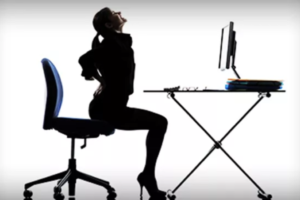
Take into consideration the multi-million dollar business or ergonomics.
Now while I will agree with some of the products out there many have no benefit to the general consumer and simply utilize that term for marketing and advertising to increase sales.
That being said what should we do?
Well following many of the recommendation from up above we need to consider the directional preferences of you pain and which positions feel better and which positions feel worse.
Simply put, try to do more of the good and less of the ouchy bad.
Easier said than done right.
So what might we do?
Use some tools to help you remain in the positions and postures as well as reduce the muscular activity needed to perform them to allow for longer times in those positions.
Then add micro-breaks, if you sit for a job I want you up and our of your chair moving for at a minimum 1-2 minutes every 20-30 minutes!!!
Tools to help:
- Yoga wedge to sit on and roll pelvis in ideal position
- Rolled up towel to sit on and roll pelvis
- Sit at the front of the chair and roll pelvis
- Stability/Yoga Ball
- Sit all the way back in the chair and use a lumbar support
Just as we stated above this allows you to take a commonly painful activity, such as sitting, and reduce the sensitivity that is imposed on the back to allow the feed-forward loop we are trying to initiate to take place. Keep in mind this is more directed towards if you are actively having back pain and sitting flares you up.
Those that might be experiencing back pain from sitting might just need to get up and move. Pain does not equal harm, and the discomfort you are experiencing more likely than not is simply a trigger to get you ass up and moving!
9. You won’t be able to play or pick up your kids or grandkids
As a parent now I can confidently say this one is tough. And I myself have had an episode where my back locked up on me and it was very challenging to help around this house, help with the kids, and really do much of anything.
But I trusted to process and from not being able to walk to the bathroom or put pants on very well, a week later I was deadlifting from the ground again building up my foundation.
Now, this all comes back to building resiliency and expanding our foundational base.
We know that a pyramid height is controlled by the based.
If we are able to expand our foundational support we will not only have a better platform for future progress, we will also find that we do not fall that far when we have a setback.
Whereas we can compare this to an individual that is deconditioned or elderly, when they have a fall or set back it will significantly affect their quality of life as well as their ability to recover.
So we need to build the base!!
Raise the floor! -Craig Leibenson
This is again especially crucial for the populations described in the myth if you want to be ready and able for your children or grandchildren the best thing you can do is become more resilient, expand your foundational movement base, learn new tasks that challenge balance, strength, and readiness.
SCHEDULE NOW IN OFFICE OR FOR A TELEHEALTH SESSION TO DISCUSS YOUR LOW BACK PAIN
10. You will always have to do your back exercises
The exercises that you will be guided on will always be progressive.
Keep in mind a deadlift is a back exercise, so… we might encourage you to do deadlifts for the rest of your life.
Spoiler alert!! Deadlifts do not hurt your back! In fact, they make them stronger and better if done correctly.
So yes, in this case, you might always have to do your back exercises, but at the same time the previous exercises that were given in your acute phase or your building phase will eventually fade out as your progress.
Now I still do mine from time to time to check back in and look for any deficiencies or to brush up on some activation and foundational principles. Again getting good at the basics take you a long way.
What if instead of thinking I always need to do these so that I do not have pain, we rephrase it as I do these back exercises to continue to be strong!
Are we simply doing things to not suck or doing things to be better!
I would rather look forward than dwell on where I have been. Trust the process, do the basics well and allow your foundation to support you!
6 Truths About How To Stop Back Pain
1. Your back is strong
There are a number of different publications that dive deep into the exact amount of load tolerances the spine can withstand. And without going into specific numbers, we can still confidently state that our backs are crazy strong!
Now it must be said that some backs are stronger than others and why this is the case. But if you look to see what some humans are capable of whether it is feats of strength in competition or feats in strength unknowingly to save of life our bodies can do some amazing thing.
We have all seen on the amazing world wide web awesome pictures of individuals in their 80’s lifting crazy amounts of weights, and you think, what the hell? How can they do this? How is this not crippling them?
Strength is inherent in us due to our structural makeup, but it is also something that is developed. So although you might not feel it now, it is 100% possible to achieve it!
But it is more common that we will put a rate-limiting factor on our capabilities due to worry, frustration, or pain. Which I will add is completing natural and common.
Our role as a provider is to highlight a path that allows you to freely determine just how strong you are. The stronger you feel, the more strength you will exhibit, and low and behold, you body will start to adapt and become yet more resilient and robust.
All of a sudden you are in the amazing feed-forward loop of strength and resiliency.
But I understand in reading this if you are in pain you might not feel this way or imagine that this is a possibility, and that is why you need someone in your corner. If not yourself then let it be us!
We will show you the way to a better stronger life!
SCHEDULE NOW IN OFFICE OR FOR A TELEHEALTH SESSION TO DISCUSS YOUR LOW BACK PAIN
2. Movement will help
“Motion is lotion”
“Rest is rust”
There are a number of different phrases that hammer at this point that movement is key!
“If you are not moving then you are losing”
Why is it important?
Well, you see our bodies are very good at being efficient. And when it starts to realize that you are not moving enough, it oddly becomes better at not moving. And if you get better at not moving, well then you are pretty much stuck.
But if you start to move, then your body becomes better at moving, and the more you can move despite having a little bit of pain then your body will start to put the pieces together that:
“I am moving and I am moving with minimal pain”
“Then I must not be as beat up or hurt as I thought originally”
“I should try this other thing that hurt and see how it feels”
The movement investigation provides your body with a frame of reference to a map of the areas that are good to go and not good to go.
Your go no gos! Are simply put on the back burners
But everything else is fair game and now you can start to live your life again knowing and having a better understanding of you pain patterns and movement behaviors around your pain!
This is the most empowering thing for an individual in pain.
The fact that you can control if you are in pain or not based on what movements you do will simply speed up the recovery process and make you more resilient and empowered when it comes to pain management!
3. Sex can still be enjoyable
Due to the dynamic nature of the activity, many individuals struggling with lower back pain often will report the difficulty in connecting with their significant other. At first glance, especially if you have not experienced this type of pain to the level that would create this friction you might not have experienced how frustrating this would be on an individual and their relationship with their significant other.
How do we fix this to keep the spark alive!
Well, if you have made it this far you will gather that we will probably start by determining what movements or positions hurt and what feels better. World leader in spinal biomechanics, Dr. Stuart McGIll, has provided a reference list for individuals to use to better help them navigate what positions might prove to be more beneficial for individuals.
Having this knowledge will be extremely beneficial for you and your partner, as well as helping you continue on the path of recovery with reduces instances of flare-ups or pain bouts.
Understanding back pain can be very complex and what we know about it presents differently for everyone. But what we do know is that the old mentality is not servings us well and a new paradigm shift is happening, where people know they do not want to be reliant on medications and they definitely do not want to have surgery if they can do something about it. We have something you can do about it and trusting the process with a plan will be extremely rewarding to you.
This is not just about getting out of pain this is also about getting back your life. Being able to connect with your significant other has more benefits than nearly everything we have discussed. The relationships between your family and your friends will be strengthened.
Tracking process does not only mean less pain, sometimes it means we can do more with the same amount of discomfort or that it does not make it necessarily worse. So you if can apply this knowledge to do more activities that you enjoy with either the same amount of discomfort (more resiliency) or less discomfort (consistent improvement) then we are on the right path for recovery!
If you feel that your relationships are struggling as a result of the pain you have been experiencing please reach out to us today. We are able to provide you hope and benefit in the office or through telecommunications methods. We will find a way to help!
SCHEDULE NOW IN OFFICE OR FOR A TELEHEALTH SESSION TO DISCUSS YOUR LOW BACK PAIN
4. Let your body heal and it will
“Stop picking at it!”
We have all heard this at some point in our lives. Humans being the curious creatures that we are, seem to always be messing with our pain and picking at it.

Now that being said, we must understand that letting your body do what it needs to do does not mean sit around and wait.
Consider that much of your pain might be coming from compensation patterns or overly guarded muscles in the absence of tissue damage, especially if you had had pain for some period of time.
More importantly, we are referring to when we have a flare-up or acute pain we must map out the positions that are aggravating our symptoms. These movements, positions, activities, or behaviors are essentially just picking at the scab that is trying to heal itself. If you are able to modify these behaviors and movements temporarily you will allow the process to run its course. You can still move and be active we are just walking around a certain area for a certain period of time. As the sensitivity reduces then we introduce those back in with a systematic process that encourages self-advocacy and confidence!
More confidence = less pain = more movement = more confidence
We switch out of a negative feedback loop into a positive reinforcement loop.
Many of us will naturally do this, but we get stuck in the process of letting things “heal” and we do not progress. We fear to move and fear the slightest bit of pain thinking we are making things worse or not letting it heal.
Keep in mind that pain does not equal harm. Often this is simply and alarm system that triggers us to be cautious with whatever we are doing to prevent us from doing something more.
5. Auditing your lifestyle and what is important will help you understand how to stop back pain
This one might hit some of you a little harder.
Now when I say audit I simply mean taking a step back and gaining a better understanding of where you are, where you want to be, and what you are doing to get there. Sometimes we want certain things but we are not doing the right things to get there, or we are trying to make up and doing too much.
There are various different ways in which this could play out but hopefully, you can get a sense of what we are trying to go after here.
For instance, if you want to be healthy and have strong joints that go move well and not be painful, the Olympic lifts that you are doing in your fitness class might not be the best choice of movements to be performing. So when we say audit it comes down to many different factors.
Now for many of us, this statement is also true when we audit how much we are not moving throughout the day. Sedentarism is slowly rusting us away and aging us faster than our chronological age is. We are living longer and unhealthier.
So we integrate, we know there are things that might not be able to change 180 degrees in your life but if we can integrate some better habits for you back and your body you will start to feel more energized and not drained by your pain, your confidence will go up encouraging you to participate in more activities that you enjoy, and your overall lifestyle improves. Small consistent alterations can have a huge impact.
Breath | Move | Live
Ha, easier said than done right! You do not have to go at this alone ya know! We can help you create achievable, actionable steps so that this process is more streamlined ensuring your success.
6. Deadlifts are good for your back
We will finish with a bang here because for many of you out there you might have been told by a provider that you should ever deadlift lift that it is bad for you back, or you have been scared to perform anything like this because you suffered from a back pain episode following a deadlift movement.
Well, spoiler alert! You deadlifting or hip hinging every day to some capacity whether you are picking something off the ground, leaning forward and balancing, or unloading the dishwasher so this is important.
Now it must be said before we dive into the conversation that spinal flexion is normal and should be encouraged and performed. By preventing spinal flexion with everything that we do we are splinting one of the most important ranges of motion in our bodies that will be challenging to restore. When we encourage hip hinging/deadlifts we put it on a spectrum.
Certain movements will look similar to a hip hinge but have obvious spinal flexion, this might be something like picking up your keys off of the ground or petting the dog, low level of complexity and obvious low loading. On the other end of the spectrum is a heavy barbell deadlift that would require absolute perfect form and technique to reduce spinal flexion especially under load.
Everything else falls in the middle, which means we need to train on the left, to the far right, and in the middle. Creating a movement awareness model in your mind makes you more prepared for anything position, shape, or situation you are thrown into.
With that being said though, we will be encouraging weight hip hinging also known as deadlift! They are actually and arguably the best thing that you can be doing for you back!
Now if they hurt your back you are doing something wrong.
But!
If I can get you to deadlift a weight that is challenging for you or that you have not done before in the past and you can do it well without any pain we could probably argue that your back is ok and it is not broken. In fact, we could argue that your back is strong, and whatever doesn’t break us down will only make us stronger, and if you are stronger you can withstand more without getting hurt, and if you can withstand more without getting hurt you can do more and serve more and be more!
So all in all deadlifts save lives!!
But really this movement is one of the basic human movement patterns and strengthening it will encourage better movement patterns and strength that can be utilized when needed without any fear of getting hurt.
Conclusion
Hopefully, you were able to take away one piece of valuable information that will help you better learn how to stop back pain.
Our role is to help challenge you to create hope for the future and actionable steps for your success.
Invest in yourself and your future today right now. Wasting time only delays what you already know and that is change needs to happen. Take the first step to owning up to the pain and changing your future today!
There are many elements to back pain and in no way are we saying that it is as simple as we have laid out above for everyone. But I hope you have a little more confidence that what you are experiencing can be normal, and that there is a way to find comfort and conquer the pain that you are experiencing.
This article is intended to give you insight into the many elements of back pain while demonstrating the faults or myths around back pain and some encouraging points directed towards getting over back pain. If you have additional questions you can always reach me at 303-717-6323. We do not want anyone to be suffering and if there is anything that we can do to help or any value in which we can provide, we will do it!
So please reach out and let us help you get over this!!
